

Road Trip Around Australia | Getting Set Up
Posted on Published: October 14, 2020
- So you’re planning a road trip around Australia?
We’ve been through that same exciting process of planning to travel Australia by road: but finding the answers to the many questions I had, proved time-consuming and a little bit frustrating. Though we searched high and low, the answers were all over the place.
So we decided that we wanted to help others; those that are as excited about travelling around Australia as we were, who have a seemingly insatiable desire to read everything they can about the topic, and who love planning everything that they possibly can before they go.
I mean, if you’re anything like me, then the planning, the anticipation, the lining-all-your-ducks-up, is almost as fun as the going.
But don’t get too bogged down in planning your road trip.
Sure, do it because it’s exciting and helps the time before the trip pass more quickly. But don’t wait until you have absolutely everything sorted out.
You can’t.
And that’s half the fun of a trip like this, the learning and experiencing and changing tack because you discovered something new.
So heads up, this is a loooong post…

So before you start reading, I just want to warn you that this is not a short post.
Coming in at over 16,000 words, this is the most comprehensive post I’ve ever written and it covers EVERYTHING I could think of that would be important for getting set up for a road trip around Australia.
I recommend that you use the table of contents below to guide you to the sections that are most important to you.
And bookmark this page so that you can refer back to it, or pin it on Pinterest.
1. The benefits of a road trip around Australia
2. the mistakes we made (that maybe you can avoid), 3. understanding the different types of vehicles, 4. how to rent a motorhome or caravan in australia, 5. how to buy a motorhome or caravan in australia, 6. how the camping works in australia, 7. how to set up your rig for self-sufficient camping, 8. being prepared for disaster, 9. how to keep in touch with friends and family when you’re on the road, 10. how to plan your route around australia, 11. how to pack for a road trip around australia, 12. how driving in australia is different to the rest of the world, 13. how much does it cost, 14. how to fund your road trip around australia, ready to make a road trip around australia a reality.
And at the end of the post, I’ve provided a planning checklist to help you gather together everything you’ve learnt and tick them all off the list as you go through them.
Since this post is so large and comprehensive I have to warn you that it is not for everybody!
DO read this post if you:
- Want to drive around Australia and will camp each night. That may be camping in a motorhome, caravan, campervan or tent and it could be in a caravan park, national park or a free camp.
- Are coming from outside Australia. International travellers, I answer all your questions in here too. With that in mind, there may be a few times where Aussies reading this article will think, ‘well duh, of course you can drink the tap water’ but that’s not obvious for someone from another country. (Whether it tastes any good is another story.)
- Are going for 2 weeks, 12 months or heading off full-time.
DON’T read this post if:
- You’re after a travel guide of all the things you must see while you’re in Australia . There is soooo much to see and it all depends on whether you’re a city person or a bush person, whether you’re into museums or waterfalls, and it certainly will depend on your budget. There is so much information to be found on the internet of all the places you can visit, so I’m not covering that here.
- You are already travelling around Australia. There’s nothing new or ground-breaking in here. There’s nothing you wouldn’t have already experienced yourself, whether by trial or error.
This post is full of the basic information that you just don’t know when you’re either from another country, or haven’t camped in Australia. And if you’re on the road already, that’s not you.
Let’s get stuck in!
Please note: some links in this post are affiliate links which means that if you decide to purchase I will earn a small commission at no extra cost to you. Please see our affiliate disclosure for more information.
The very fact that you’re reading this post tells me that you don’t need to be convinced that taking an extended road trip around Australia is a great idea.
You already know why you want to do this. You may want to spend more time with your family, or see more of Australia, or just not work for a while!
But here are some other benefits that you may not have thought of.
Problem solving skills
When you’re on the road and something goes wrong, you don’t always have the luxury of being able to call someone up to deal with it for you. You have to deal with it, you have to get your thinking cap on and problem solve. You have to reach out to people to ask for help. You have to research a topic you know nothing about to see if you can figure out what’s wrong. You have to try and fix it, and either be pleasantly surprised that you got it right, or learn one way NOT to do it.
And it’s not just you that benefits from this, your kids do to.
Have you ever had the time to teach them to fish, or to light a fire, or to dig a hole to go poop? In our increasingly fast paced and electronic world, they often aren’t given the time or opportunity to learn tactile skills. When you’re camping they can take the time to learn how to light a fire, and practice dozens of times until they’re confident.
All of you will learn great problem solving skills.
A new appreciation for nature
How many sunsets have you missed simply because you were inside and didn’t realise the sun was setting until it was time to turn on the lights? Or you couldn’t see it anyway because you’re surrounded by lots of buildings.
We may be a bit cuckoo, but we got so much enjoyment out of simple encounters with the local wildlife.
It was delightful to make friends with a magpie and feed her scraps of meat, and be totally entertained by her as she frolicked around our campsite.
And we felt special with each night that one frog would come and sit on our outdoor table and greet us (okay, frighten us me) as we headed to the toilet in the middle of the night.
I had never thought about ‘compromise’ as being something that was important for the attainment of my goals. But being on this road trip has certainly taught me that.
Doing this road trip has been a dream of mine for many years. But I thought that I only wanted to do it if I could be in a nice motorhome, with an onboard bathroom, and nice decor and a great solar set-up. And I wanted to do it without having to work or worry about money.
And so if felt unattainable.
But when we decided we’re going to do this trip anyway, there was certainly a lot of compromising that needed to be done.
A camper trailer instead of a motorhome, no onboard bathroom but staying at caravan parks and using their bathrooms, definitely no nice decor and an okay solar set-up.
While there was compromise, it certainly felt nice to not be compromising on our dream. For once.
Yes, a lot of people talk about the benefit of time when you’re on a road trip. Not only time with your loved ones and time to relax. But time to pursue the things that are important to you. Time to read. Time to create.
Time to discover what’s really important to you.
When we started on this road trip, we thought that it might be something we’d like to do for the foreseeable future, but we weren’t sure.
So we said that we’d try it for a year and then reassess.
We also gave ourselves the ‘out’, that if either of us didn’t like it, we could stop whenever we wanted. No harm no foul.
Well…
As it turns out, we LOVE this life, so a few things have needed to change in the way that we’re set up.
Picking the right camper for us
I think it’s pretty common, no one’s first purchase of a home-on-wheels is the ‘right’ one. It’s not until you’ve travelled in it, realised what type of travelling you like to do, the comforts that you don’t want to give up, and those features that you just don’t care about.
You have to take it around with you for hundreds of kilometres, set it up, pack it down, be stuck in it in the rain, sleep in it in the heat, cook in it, eat in it and clean it. Then maybe, you’ll have an idea if it’s the right type of vehicle for you.
For us, we got it quite wrong.
The camper trailer was great for a first-go because it was cheap and light, and it certainly was everything we needed for our first four months.
But now that we want to be on the road for at least a couple of years we’ve realised a few home truths about ourselves. We will happily get a caravan and sacrifice those hard-to-get-to places in order to have some more comfort, an easier time setting up and packing down… and a toilet.
Funding our trip
We have loved our trip so much that it’s made us want to live this life for the foreseeable future.
Six months, well, it was actually more like almost 5 months, just isn’t enough time for us to see this country. We don’t want to just drive through all these wonderful locations, we want to set up camp and stay for a couple of days, if not weeks. We want to live on the road.
So we have to figure out how we’re going to make money. I’ve got a whole section below on ‘ funding your trip ’, but in hindsight, it would have been better if we’d had that sorted before we left.
We’ll start off with a bang and get straight into talking about vehicles. This will be your largest one-off expense and determines so much about your trip.
We’ll have a look at the different types of vehicles commonly available here in Australia and the pros and cons of each.
Just a note for my North American readers, you’ll find that large rigs are pretty rare here. You’ll be hard pushed to find an RV or travel trailer over 30ft and fifth wheels are pretty rare, but becoming more popular.
The list below is in order of the most popular, widely available and most seen options, to the least seen options. (Based on our own travels around half of Australia. The point is, caravans are everywhere, Class A RVs and fifth wheels are not.)
Australia is definitely a caravanning nation (that’s a travel trailer to my North American friends). There are thousands of these traversing the country at any one time.
The pop top is also very popular. The little effort required to pop up the roof when setting up camp means that the overall caravan weight is reduced as well as reducing the wind-resistance/drag of the caravan. Which equals cheaper fuel bills.

We’ve done lots of research on caravans to help you decide which is best for you:

Motorhome / Class C
You’ll find lots of these mid-size motorhomes around Australia. They’re a popular choice for renting because they’re large enough to be comfortable, but small enough to be not too stressful to drive.
Check out my favourite motorhome here .
Camper van / Class B
These are great little units; small, compact and having everything you need for a road trip. (Except a toilet, and that’s a deal breaker for me.)
While many are built on a van chassis like the Toyota Hiace, I would also include in this category, the mini-vans or people-movers like the Toyota Tarago or Honda Odyssey.
You’ll see lots of these around Australia, the rented ones painted bright, and somewhat gaudy colours, so you won’t miss them

If you like the idea of a campervan but would only be interested if they have a bathroom onboard, this post on small campervans is for you. I’ve only included camper vans that have a toilet and shower.

Pop-up trailer
These seem to be great for families.
With beds at each end, a small kitchen, a seating area and some built-in storage the pop-up trailer is a good compromise between quick set-up and light weight.
There isn’t too much set-up (well, not as much as a tent anyway) but they’re not as heavy as a caravan.
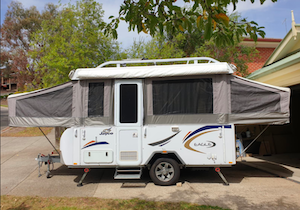
Camper Trailer
Camper trailers are very popular in Australia. They are light weight, manoeuvrable and stand up well to the rigours of harsh Australian roads and 4WD tracks.
They come in either soft or hard floor. The soft-floor are cheaper and allow you to have a large tent space (like ours) which is great for families who need the space for all the beds.
The hard-floors are quick to put up and bring the tent area off the ground but it does mean that the inside the tent space is limited.
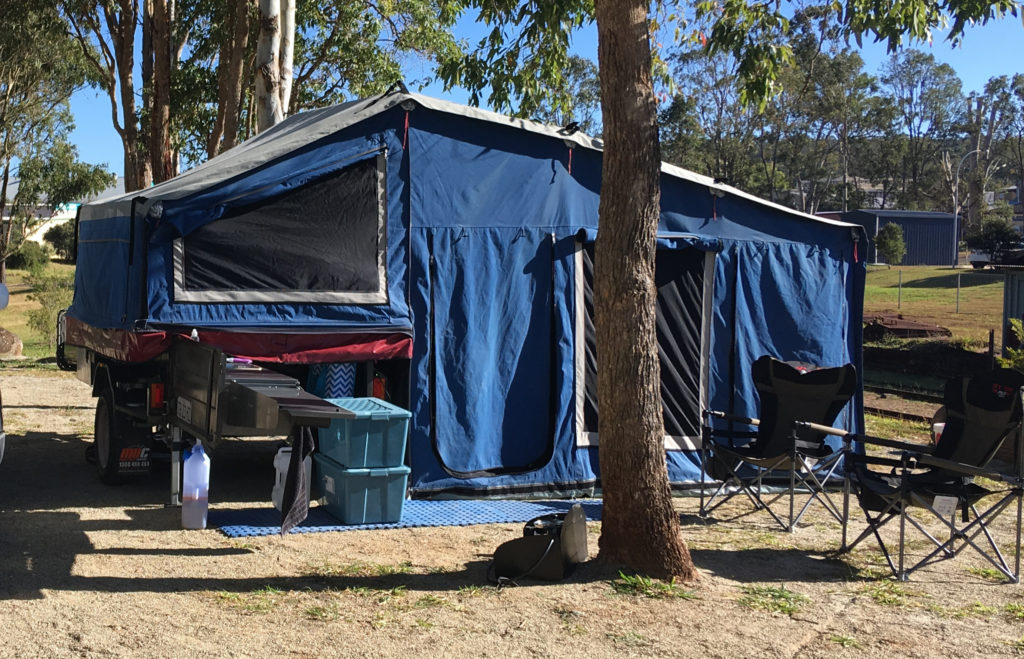
There are lots of camper trailer manufacturers here in Australia, we’ve compiled a big list below, as well as the pros and cons of our own camper trailer.
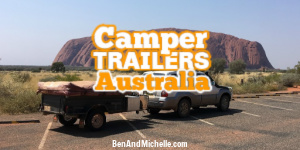
Tent / Roof top tent
The roof top tent is a design that will not limit where you can go.
Quick and easy to set-up, your bed is off the ground (and away from any wild animals), yet it packs up into a compact unit that sits permanently on the roof of your car.
This is a great option for serious 4WD enthusiasts, not needing to worry about towing anything and not adding too much height to their vehicle. It’s perfect for the person that wants to be outside all the time (except when they’re sleeping), because that’s where you’ll be.
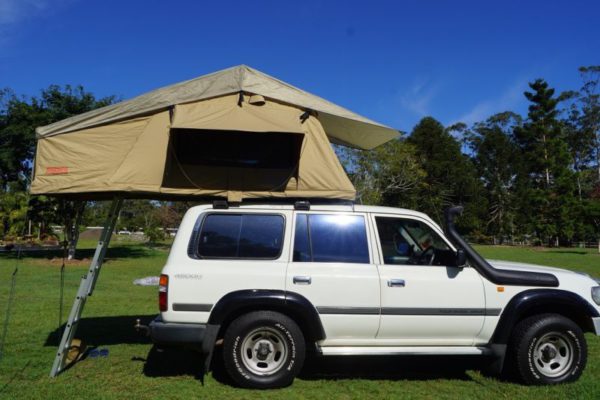
Bus / Class A
I do look on these a bit jealously sometimes.
With all that space, and huge windows, it’s as close to an actual home on wheels as you can get, I think.
But the idea of having to drive one of these things make me shudder, and then having to park it!
That’s why the bigger the bus, the more likely it is to have a car being towed behind.
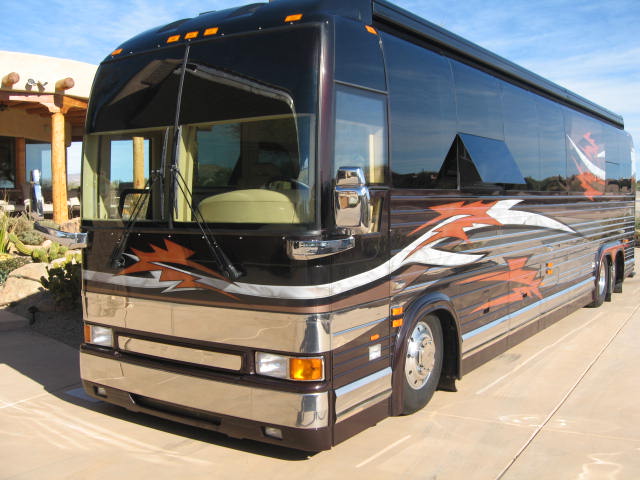
Fifth Wheel
There are not as many fifth wheels in Australia as there are caravans, but they are around.
While they are large in both length and height, they do look like they could have every mod-con (so you can get your laundry done without having to find a laundromat) you could want.
There are a couple of manufacturers in Australia but not heaps.
I can’t wait till they take off here in Australia and New Zealand and the prices start to come down (I might just be dreaming about that) because I would love one of these.
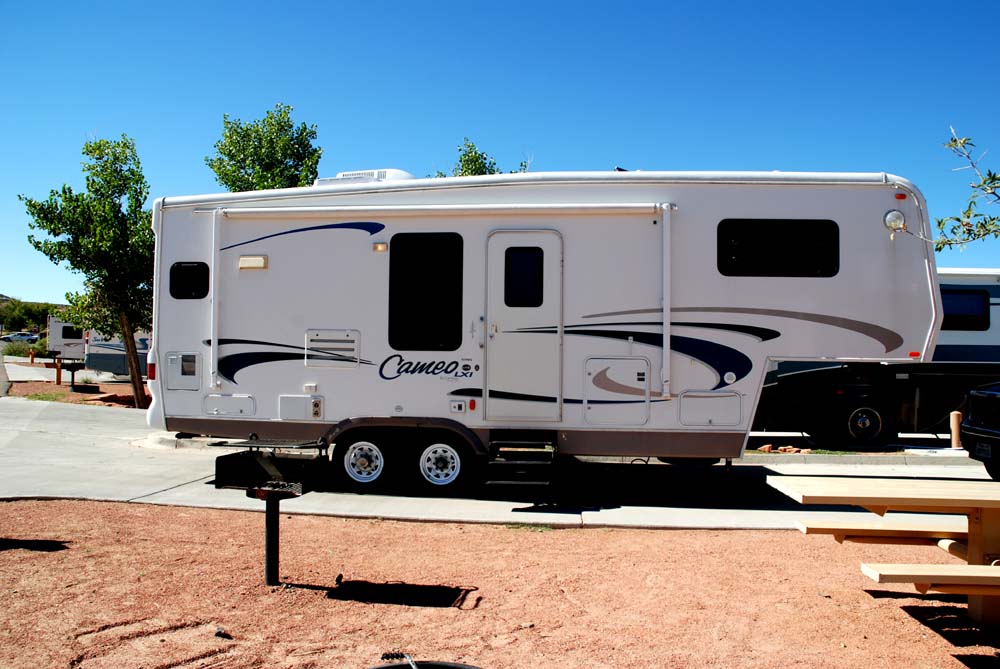
Love the idea of a fifth wheel, but not enthusiastic about their massive size? These are all the fifth wheels we’ve found in Australia that are small (less than 25ft).
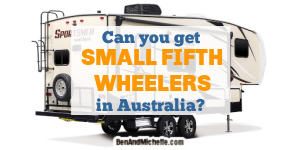
To Rent or Buy?
You’ve got two options for a vehicle to road trip around Australia, you can rent one, or buy one. There are two main factors which will determine the option that will suit you best.
- How long are you coming for? If it’s only a couple of weeks, then it certainly doesn’t make sense to go through all the hassle of buying a vehicle. If you’re planning on staying for a couple of months? Well then it starts to make more sense financially, if you buy a vehicle.
- The other factor to consider is whether or not you’re planning to go off-road. If it’s a 4WD drive adventure that you want, purchasing your own vehicle may be best option.
Some of the best views and campsites can be found down the dusty dirt roads, if you’re looking to escape the crowds and explore the raw (and often harsh) Aussie outback, then you may want to leave the sealed roads.
Having said that… you can travel all the way around Australia without leaving the seal. Just keep this in mind when you’re deciding whether you’re going to rent or buy.
If your Australian road trip is a couple of months or less, and you want a campervan or motorhome, then renting a vehicle will probably be your best option.
Just a couple of things to note:
Insurance – particularly for off-road
If you’re going to go off the sealed highway (at all!) then make sure you get the right vehicle and insurance package to go with it. It will cost you more, but if anything happens while you’re on the unsealed road you could be up for a hefty insurance excess … and that’s if you’re lucky enough to still be covered.
One-way rentals
You would need to fly into a main city and pick up your vehicle there. Main cities include: Sydney, Melbourne, Perth, Brisbane, Adelaide, Cairns or Darwin. But if you’re planning on doing a one-way rental, for example flying in to Perth, driving a rental vehicle across to Sydney and leaving it there, make sure to check out the costs. One-way rentals can be very expensive here in Australia.
Renting a caravan
There are places where you can rent a caravan, but then you’ll need to hire a tow vehicle as well. While it can be done, they are not as popular as campervan and motorhome rentals, and you will likely have to do a lot more searching for this. Campervan and motorhome rentals are everywhere, you can easily pick up your rental at the airport making it super easy and convenient.
Guaranteed Buy Back
There are some campervan hire companies that will sell you an ex-rental campervan and give you a guarantee to buy the vehicle back from you at an agreed price. They’ll buy it back at approx. 30-50% of the original purchase priced, based on when you bring it back (it needs to be within 12 months). You just have to have it regularly serviced.
This option looks like it’s set up to appeal to the young backpacking crowd, as I’ve only seen older vehicles in this category which are on the lower end of the price scale, but there’s no reason why it should be limited to the young. ☺

If you’re going to be in Australia for more than a couple of months, then this option probably makes the most sense for you.
Dealership or Private Sale
In Australia, there are two main ways you can purchase a vehicle, caravan, campervan. By buying from a dealership, or from a private party.
When you buy from a dealership it’s less hassle than buying privately. A dealership:
- Will have inspected the vehicle and made repairs if necessary
- Gives you more legal protection because they can only operate within strict laws
- Will handle all the paperwork such as transfer of ownership
- Must provide a history check of the vehicle
- Can offer extras such as warranties and road side assistance
I suppose the biggest turn-off about dealerships for most people, is that you’re dealing with professional sales people. While I don’t want to tar all used-car sales people with the same brush, many of us have had experience with that one salesperson that made us feel uncomfortable, or duped. Obviously, they’re not all like that and there are things you can do to protect yourself, such as getting a pre-purchase inspection.
Generally, the biggest benefit to buying private, rather than from a dealer, is that the seller may have more room to negotiate on their price. That can mean a saving of thousands of dollars, but offers less security for the buyer.
Petrol or Diesel
Having only ever bought regular 2WD cars before, I have never considered whether or not I should buy a petrol or diesel vehicle, they’ve always just been petrol. But once you start looking at 4WD vehicles, there are many that are diesel.
You can get both fuel types, pretty much everywhere around Australia.
Personally, I’ve found that in more metropolitan areas there are fewer diesel bowsers at the gas station. If there are 10 bowsers, then maybe 2 of them will be diesel. (But then, there are less diesel vehicles in metro areas too.)
The more rural you go, the more often diesel is found. I’ve read that in some of the really remote places, you can only buy diesel, and if you happen to get stranded with no fue, a passing motorist, local road workers or nearby farmhouse, is more likely to have diesel than petrol.
I like having diesel because I feel it’s safer to transport, and we have two 20L jerry cans which we carry with us.
Research before you get here
Once you’re figured out which city you’ll be starting from, start looking for the vehicle that you would like to buy, and follow the marketplaces websites.
These are the websites that I recommend keeping an eye on.
The reason why I recommend this, is that it gives you an idea of what types of vehicles are available, the prices, and which types of vehicles sell faster than others. This can help you to get an idea of prices, the condition you can expect a car to be in (at a particular price range) and the availability of different types of vehicles.
Gumtree.com.au – for cars, caravans and motorhomes. Gumtree is probably the equivalent of eBay or Craigslist and both dealers and private sellers advertise on here.
CarSales.com.au – for cars
CaravanCampingSales.com.au – for caravans, camper trailers, motorhomes etc
Just a note – I know that for Gumtree, I wasn’t able to contact any of the sellers (their contact details were hidden from me) because I was in New Zealand at the time that I was doing all the research. When we got to Australia, Gumtree still thought I was in New Zealand and still wouldn’t allow me to see the sellers contact details. A quick phone call to their Helpdesk confirmed that I was now in Australia and they were able to clear my account.
Checks that need to be done prior to purchase:
Rta checks for ownership – by different states.
If you’re doing a private purchase, then you must do a check of who is the legal owner and if there is any finance on the car. This is easily done online at: https://checkrego.com.au/
Pre-Purchase Inspection
Regardless of whether you’re buying from a dealership or a private party, I would still recommend getting a pre-purchase inspection of the vehicle. If you’re confident to do that yourself, that’s cool, but if you’re as clueless as me about all things mechanical, you’ll need to book a pre-purchase inspection with a local mechanic or an organisation like the NRMA.
We chose NRMA , which is a nationwide organisation that does insurance and road-side assistance.
We ordered two pre-purchase inspections through them and found them to be great. It seems that they have inspectors out on the road all the time so once you book they’ve got a team of people they could assign the job to.
For us in Sydney, this meant that we were able to ring up for the inspection and have it conducted within 24 hours. They provide you with quite a comprehensive report (emailed to you) and give you a fairly good idea of what you’re getting yourself into.
We’re so glad we did this.
The first car we had inspected was, in our inexperienced opinion, okay. It was a good price and there didn’t seem to be anything wrong with it. The pre-purchase inspection showed that there were a number of items that would need some serious work in the near future.
The second vehicle we had inspected actually gave a glowing report and we’ve been really happy with our purchase.
The pre-purchase inspections, while not fool-proof, give a bit of peace of mind for those of us mechanically challenged.
Checklists for inspecting a second-hand caravan / camper trailer etc
I’d like to say that I have a comprehensive checklist for anyone purchasing a second-hand caravan or camper trailer. But I don’t, which is pretty much how we ended up with the camper trailer that didn’t have half the features that were listed on it’s ad. But it was road-worthy and safe, thank goodness.
Here are some checklists that will help you on your initial inspection.
Camper Trailer Checklist
CamperTrailerAustralia.com.au – Buying a Used Camper Trailer
AussieLeisureLoans.com.au – Checklist for Buying a Camper Trailer
Caravan Checklist
CaravanBuyersGuide.com.au
Big4.com.au – Important Tips for Purchasing a Used Caravan
Outdoria.com.au – Ultimate Guide to Buying a Used Caravan Online
Campervan Checklist
Camplify.com.au – Ultimate Guide to Buying a Used Campervan
RollingSolo.com.au – Killer Checklist for Buying a Motorhome or Caravan
Motorhome Checklist
Buying a second hand motorhome becomes a little bit trickier if you’re planning on buying privately. When buying privately, you have no recourse should you find issues with the motorhome. From my research, it seems that the sensible option for buying a motorhome is to buy one from a dealer. Unless you’re able to do the inspections yourself, of course.
There are companies that will do an inspection for you, however there are not as many as there are vehicle inspectors, which makes sense.
Ownership Costs
Of course, there is always costs associated with owning a vehicle. For any international visitors, here’s what you’ll need to consider for Australia.
Car registration
Vehicle registration is different in each of the eight states of Australia. But here’s the general information:
- Registration lasts for a year
- You may need to have your vehicle inspected (at a registered inspection centre, such as a mechanic) for road-worthiness
- If the registration runs out while you’re on your trip, you may need to return to the state that the vehicle is registered in, to re-register.
- You are required to purchase Compulsory Third Party (CTP) insurance when you register your vehicle.
The rules and costs are different for each state, so if you already know where you’re going to buy your vehicle here are the links to each states vehicle registration information:
Australia is not like the USA where you need massive insurance in order to just walk down the street, but you will want to have vehicle insurance.
In Australia we have Compulsory Third Party (CTP) insurance which is paid when your vehicle is registered (you can’t register without it). CTP is not comprehensive insurance, it only provides the driver cover for any legal liability for injury or death as a result of an accident for which the insured is responsible.
You can easily purchase comprehensive insurance online. When we bought our car, I organized our insurance over the internet (on my phone) while Ben went through the sale process with the seller. By the time we drove off, we were fully covered.
Roadside Assistance
This isn’t a pre-requisite of owning a vehicle, but it’s a very, very high on the list of ‘should haves’.
Unless you’re a mechanic yourself, travelling with all your tools… and spare parts, then you should have road side assistance. ESPECIALLY if you’re travelling to remote areas. You’ve got to remember that in some parts of Australia it could be 300kms to the nearest town, and by town I mean a pub, general store and a gas station. Getting a tow truck could cost you thousands and if your vehicle is broken down, you’ve got no way to tow your home. It gets very complicated, very quickly. Just get roadside assistance, okay?
Options include:
The various RAC is each state:
Once you’ve got your vehicle sorted, you’ll be looking for somewhere to park each night…
I want to talk about camping in Australia, because the type of camping you want to do will help determine the type of set-up you need and any of the accessories you’ll likely want.
Caravan Parks
Caravan parks can be found all over Australia. In every city and town and sometimes even in the very smallest of towns that, if you blink, you’ll miss it.
All caravan parks will have the following facilities:
- Powered sites – where you can plug into 240V power and water, and drain your grey water.
- A facilities block – with toilets, showers & laundry room
- A kitchen – with basic cooking (sink, stove, fridge, bench space) but many have extra things such as toaster, oven, blender, pots and pans, crockery and cutlery.
- Dumping – so you can empty your toilet cassette or black tank.
Caravan parks can vary widely, from a basic campsite with not much appeal (or grass), to resort-like complexes with multiple pools, children’s play areas, cafes, games rooms and mini-golf.
Private Camping Sites
With the popularity of WikiCamps (an app that lists all the campsites around Australia – see section ‘How to find campsites’ below) it’s been much easier for people to set up campsites on their private property. Since campers will use the app to find their next campsite, the private campsite owners don’t need to spend a fortune on traditional advertising. They just list their campsite on WikiCamps and that’s it.
This could include farms, lifestyle blocks, the local pub with a big garden out the back or some other business with space out the back.
Since this is not regulated, you will get a huge range of options. It may just be grassy spot down by the river with no facilities, or a powered site with water and access to a bathroom block.
Prices are also variable, it can be quite pricey if you’re in a popular tourist area, or it may be ‘free’ but with the expectation that you will buy a drink and/or a meal in the pub.
National Parks
There are National Parks all over Australia and they provide some of the best outdoor experiences. Each of the National Parks is managed by the state government, so they’re all different.
You will find that there is a huge array of camping options, from free camping with no facilities, to fully managed campsites with power, water, dump points and a kitchen.
Some of the National Parks require that you pay a fee to enter the park, and then you pay camping fees on top of that. But they’re all different, so search the website of the National Park for each state. These links should get you started:
Free or Low-Cost Camps
First lesson… you will not find free camps in very touristy areas.
For example, if you’re travelling anywhere along the east coast, don’t expect to find any free camps on the beach. For free camps, you will need to head inland and further away from the main touristy areas and then you’ll find HEAPS of free or low cost camping options.
The one caveat I have to not being able to find free camping along the east coast, is rest stops. There are quite a lot of roadside rest stops where you’re able to stop for the night. But they’re not exactly in scenic areas, can be noisy since they’re right beside the highway and may or may not have facilities. Most will have at least a long drop toilet, but that’s about it.
Oh, and don’t park in designated truck parking areas, these are rest areas for truck drivers only.
More info on free camping in Australia:

How to find campsites
Here are the two most common ways to find campsites in Australia:
This app is a crowd-sourced database of all the campground and caravan parks across Australia. It shows the details of the campsite, the facilities available, the cost, as well as other information such as whether they allow dogs, local sites to see and the proximity to other amenities. The value of the app lies in the comments, ratings, photos and updated costs of fellow campers.
The app also shows places of interest, dump points, day use areas and even has a map feature to direct you straight to the campsite.
At just $7.99 it is worth every single cent.
Camps Australia
This is a physical book – now I haven’t used this myself, but people that I’ve talked to have been pretty happy with this book. They also have an app which is still only $9.99. I think that the main difference with the Camps Australia list of campsites, is that they’re all verified sites.
Okay, so now that you know the different types of camping that you can do in Australia, hopefully you’ve got an idea of the type that you and your companions will want to do.
If you’re going to be staying in caravan parks for the duration of your trip, then you will be fine with a more basic set-up; you can use the caravan parks’ toilet, shower, kitchen and laundry. You can charge up your electronic devices each night using the supplied power, you can get fresh drinking water and dump your toilet (if you have one).
But if you’re planning to do free or low-cost camping then you’ll need to be self-sufficient . And that means having access to the following things:
- Water supply
- Grey water disposal
When you’re free camping you probably won’t have access to drinking water, so you need to take enough for you and your travelling companions, for the number of days you plan to stay.
Your caravan/motorhome/campervan is likely to have a water tank already, but consider how big the tank is, and all the things you’ll be using that water for such as: drinking, cooking, washing (dishes and people) and the toilet.
In order to extend your stay you’ll need to think about ways to conserve water, carry more water or have a way of re-filling your water. This may include things such as:
- Taking navy showers, or no showers, especially if there is a river or lake where everyone can go for a swim. (No soaps in the waterways though!)
- Taking extra water such as a tank in the tow vehicle, water jerry cans, water bladder or even just extra plastic bottles of drinking water.
- It may be that you’re able to fill your water containers (e.g. jerry cans) when you’re out and about sightseeing and use these to fill up the tank in the caravan.
You’ve got to remember that in some areas of Australia (i.e. the whole middle of Australia) water is scarce and you need to be mindful of where you’re going and if there’ll be water.
It’s no problem in built up areas, but you’ll need to think about this fact when travelling in remote areas.
When we first set out on our road trip around Australia, I had thought that an on-board toilet wasn’t such a high priority. I figured that if we’re free camping with no toilet facilities, then I’d just go in the bush. But not all free camps are out in the bush. Some are beside the highway, or in an open field, or jam-packed with other free campers.
This is where it really comes in handy to have your own toilet on-board.
There are a couple of different types of toilet, that I think it would be handy to know about.
Cassette Toilet
This is the most common caravan/motorhome toilet that you will find in Australia. It’s not too dissimilar to a regular toilet, you open the flap at the bottom of the bowl, you do your business and when you flush it empties into a small holding tank/cassette, and then you close the flap.
Emptying the cassette involves taking the cassette out (usually accessed from outside the caravan or motorhome) and dumping it into a dump station or in a toilet.
Holding Tank Toilet
These are the most commonly found toilets in large RVs in North America; where the toilet empties in a holding tank (black tank) and can be pumped out at a designated dumping point. These are not hugely popular in Australia, they are around, but cassette toilets are well and truly the most popular.
Portable/Chemical Toilet
The porta potty or chemical toilet is a self-contained unit you can use anywhere. It works on the same principle as the cassette toilet above, but the porta potty comes in two parts with the holding tank or cassette part right under the toilet seat part. You can easily separate the bottom half of the toilet from the top half so that you can dispose of the contents.
The porta potty can be easily moved around (just pick it up, it’s not attached to anything and doesn’t have any hoses etc) which makes it a great emergency loo.
Store it anywhere on your rig and just bring it out when it’s needed.
In less populated areas of Australia, it’s acceptable to go to the toilet out in nature. However, there is a bit of etiquette involved in this.
Here’s some basic tips for going bush toilet in Australia:
- Be discreet. No one wants to see you flashing your bits around and definitely no one needs to see you defecating.
- Number two’s require you to dig a hole. Don’t just break ground , but dig a decent depth hole that isn’t just going to have the dirt blown away.
- Toilet paper – now this is really important. We have a little bit of an ongoing problem with toilet paper being disposed of incorrectly and creating a despicable scene at some of our most beautiful spots. DO NOT leave your toilet paper behind. Don’t bury it, because it will get dug up by some curious critter. You have two options:
- either put a match to your toilet paper and burn it (although not in the middle of a dry field or during a fire ban!) OR
- just put it in the rubbish. Take a little rubbish bag with you and put your loo paper straight in there after use. It’s so easy to do, yet some people seem to think they’re exempt from this problem and refuse to dispose of their toilet paper properly. Once you see toilet paper strewn around, you’ll know exactly what I’m talking about, and you’ll be as annoyed (and flabbergasted) by it as I am.
Central to your power solution is your batteries. You’ll use them to keep power hungry things going, like:
- Electronic devices such as laptop, phone, camera equipment
- Microwave, coffee maker, TV
But you’ll need to keep the batteries topped up, and you do this by recharging them by either:
- Charging from the car alternator when driving
- Solar panels
- Battery charger when connected to mains power or a generator
If you’re renting a motorhome or campervan, then this is most likely to be set up already. But if not, here are the BASICS of what you’ll need.
1. Battery – Deep-Cycle Battery
First question I get is: can you use the battery that’s already in your car – the one that’s used to start the car – to power everything?
No – you need another battery that is a deep-cycle battery. You may hear this referred to as an auxiliary, secondary, or a dual battery system. This is the battery that will be used to power the fridge, lights, devices etc.
A deep-cycle battery is a lead-acid battery designed to be regularly deeply discharged using most of its capacity. In contrast, starter batteries (e.g. most automotive batteries) are designed to deliver short, high-current bursts for cranking the engine, thus frequently discharging only a small part of their capacity. Thank you Wikipedia.
There are different types of deep-cycle batteries, the most commonly used types in Australia are the Lead Acid Battery and the AGM (Absorbed Glass Mat) battery.
Lithium batteries are becoming more and more popular as they are more efficient, lighter (in weight) and last a lot longer. They are also much more expensive, you can read more about them in this article.
The deep-cycle battery can be fitted under the bonnet of some cars (if they have a space already available) or they can be fitted into the cargo area of your car or in the camper trailer/caravan. It will depend on the type of battery you have and the space available.
What do the different sizes mean?
The battery size is determined by the Amp Hours (Ah) of the battery. If the battery is 100Ah, this means that you have 100 Amp Hours of power available (theoretically).
If you have power consumption of 10 amps per hour (for example, you’ve got a fridge that uses 5 amps of power per hour, lights that use 2 amps per hour and other devices that are using 3 amps per hour) then that means the battery will last for 10 hours before it is completely flat.
Unfortunately it doesn’t quite work like that, AGM batteries should only be discharged about 60-80% before you need to recharge them again. But the Amp Hours is a good way of defining the size of a battery.
Now let’s talk about how a battery is recharged.
2. Recharging by Driving
Your deep-cycle battery can be charged by being hooked up to the start battery in your car, which is charged up by the alternator when you’re driving.
If you’ve heard of things like a DC-DC charger or VSR (Voltage Sensitive Relay) these are pieces of equipment that go between your car’s start battery and the deep-cycle battery, this is to make sure that the battery is charged enough, but not too much and to make sure that the start battery never gets drained.
3. Recharging with Solar Panels
If you want to recharge your batteries using solar panels you will need to have a solar controller or regulator between the solar panels and the battery. The solar controller ensures that the battery does not get overcharged.
The size of the solar panels you need, will depend on how much power your devices consume. A set-up with a large fridge, multiple lights and devices will need more solar panels than a smaller set-up. I’ve found a very informative article on Hema Maps on the The Basic Guide to Camping with Solar Power .
4. Recharging with a Battery Charger
When you have access to mains power, you can also recharge your AGM battery with an AC battery charger . You just plug the charger into the power point and connect it up to the battery.
Battery chargers come in different amp sizes, the larger the amps the quicker the battery will charge. For example, a 10A battery charger will take about 12 hours to recharge a 120Ah battery. Whereas a 20A battery charger will take 5 hours.
Or from a generator – If you have a generator, you can use the AC outlet to plug in the battery charger, and use it just like it were mains power.
5. Powering your 12v devices
Anything that uses 12v can be plugged straight into the battery . This includes things like your portable fridge or lights. You need adaptors or a battery box that are connected to the battery so that you can plug the cigarette lighter plug into the battery.
6. Using 240v devices – you need an inverter
There are other electronic equipment that doesn’t use 12v power, things like laptops, microwaves and toasters. They have the normal plug that you use in your house and run on 240v AC power.
In order to power these devices, you will need an inverter that will convert the 12v DC power of the battery, to 240v AC power for your devices.
The size of the inverter you buy, will depend on the power consumption of the devices you’re running (i.e. the watts). For example, charging a laptop uses less power than running a microwave, so you will need a bigger inverter if you’re planning to take a microwave with you.
Air Conditioners
Here’s a question that we’ve pondered ourselves as we’ve sweated away in hot and sticky Darwin, or fried in the dry, but 40°C heat of Dubbo: can we run an air-conditioning unit while we’re free-camping?
From batteries? NO
From a generator? Maybe. I’ve heard plenty of people are able to run their air-con from generators, you just have to make sure you get a generator that is rated high enough to power your air-con.
These should be part of every travellers set-up, as important as your batteries, or your hat, or your phone, but so many people forget these.
First Aid kit
Make sure you have a suitable first aid kit and check that everything is within date (i.e. not expired) and that you know how to use everything in there.
Have you all taken a first aid course? Don’t forget, when you’re out in the middle of nowhere (i.e. much of Australia) then you must all look after each other, and that includes having a well-stocked first aid kit and the knowledge to use it.
Search more first aid kits here.
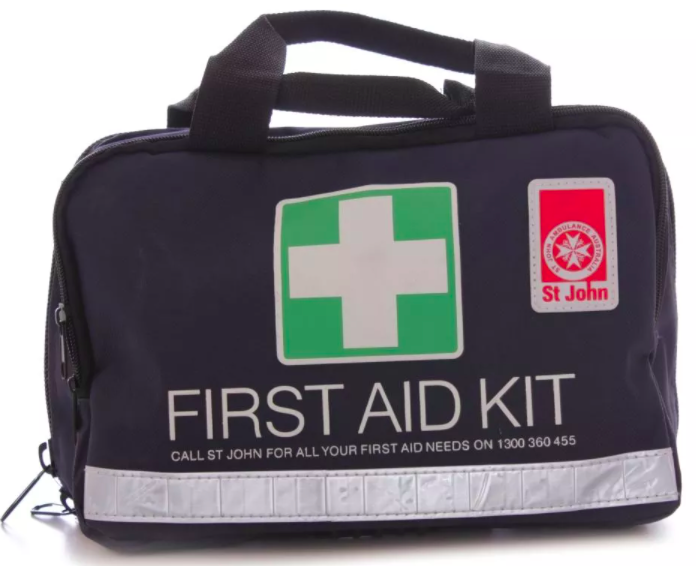
Personal Locator Beacon / Satellite phone
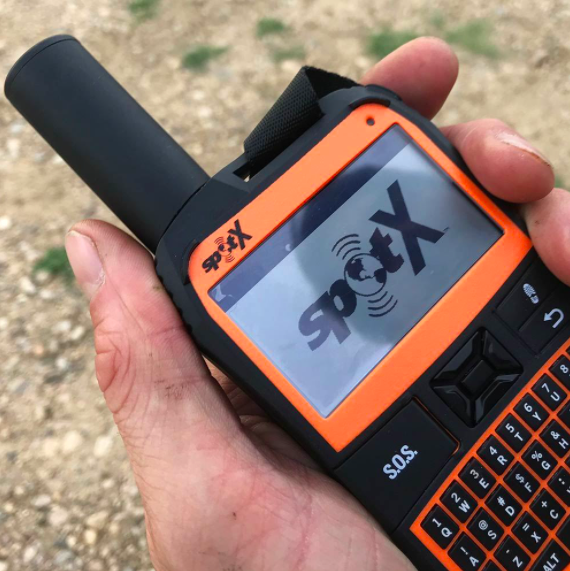
Consider taking a Personal Locator Beacon (PLB) with you.
Having this device with you can mean the difference between life and death, particularly in remote areas. PLBs are designed to be used on land, and are designed to stay with individuals rather than vehicles. You should make sure that you get one that has GPS as this means it will be much quicker for emergency services to find you. See the Australian Maritime Safety Authority website for more details.
Another option would be to either buy or hire a satellite phone.
While not as cheap as a cell phone, they do mean that you can make calls even when you’re out of cell phone coverage.
And there are satellite messenger devices like the SpotX , where you can send text messages via satellite.
Search more PLB / Satellite phones here
Fire Extinguishers
This one is a no-brainer really. Make sure you have a fire extinguisher in your vehicle and in your caravan/camper trailer.
Search more fire extinguishers here
Emergency Contact List
This is a simple, free and easy to do thing that will save you mountains of stress should you have an emergency situation.
A piece of paper that is easily locatable to you and those travelling with you, that has all the important contact phone numbers and details.
Things like:
- Everyone’s mobile number – because you may not have memorised their numbers since they’re all in your mobile phone anyway
- Phone numbers of close relatives – like parents and siblings
- Your doctors name and number
- Your medicare numbers
- Your car insurance phone number and policy number
- Health insurance numbers
It’s simple stuff, but when it’s an emergency and your phone happens to be flat, you’ll be super glad to have all this info handy.
I’ve got a free emergency contact form template over here if you would like.
There are a couple of large mobile phone providers in Australia like Telstra, Optus, Vodafone, Virgin as well as many smaller companies.
Without a doubt, the company with the best coverage around Australia is Telstra. They have the largest infrastructure network and therefore the largest coverage of Australia.
Update: I’ve been reading reports of Optus setting up cell towers in some remote towns so it will be worthwhile keeping an eye on them too.
Telstra Coverage Map

Vodafone Coverage Map
Telstra seem to have a bit of a reputation for not-that-great customer service, but that hasn’t been our experience at all. Yes, you’re going to get put through to a call centre in India, but each time they’ve been knowledgeable and able to help out with our situation.
Also, Telstra is certainly not the cheapest, but with the coverage they have (in both cell service and customer service) they really are the best choice.
If you live in Australia already, then you’ve likely got your phone sorted out already.
If you’re travelling to Australia from somewhere else, then you will probably want a prepaid service. The costs for prepaid phone are not too bad… it’s data that’s the big cost.
Ahh, the bane and blessing of every travellers existence!
Getting internet in Australia isn’t too hard, especially if you don’t need lots of gigs and you’re not in a remote area. But if you need/want heavier internet usage, things get a little bit trickier, and a lot more expensive.
Here’s how you’re going to get internet in Australia:
Free Wi-Fi can be found in all the regular places: shopping malls, airports, MacDonalds, hotels and libraries. Most often this will be capped, so of course this is only good for checking email, social media and browsing.
Hot Spot from your phone or mobile modem
This is a popular, and easy solution. If you’re with Telstra you’ll be able to get internet most of the time. For those on pre-paid it may be your only option.
If you’re not on unlimited data, then please take note, you must change your internet habits!
We found that on the road we had to be a lot more conscientious of our internet usage. You can’t watch whatever you like, whenever you like. You’ve got to stop going down the rabbit hole of endless Facebook or Youtube videos and make the most of free wi-fi when you get it, buy cheap DVDs from the second-hand shop, or read a book. Seriously, you have to get off your laptop / devices for this trip. I think you’ll find that it’s not hard though, there’s so much to see you’ll be glad to see how much you don’t need the internet.
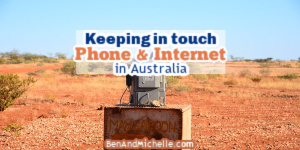
TV in Australia
I think people who watch TV while their on their road trip around Australia cop a bit of flak for doing so.
I used to be one of those people that gave them flak. :-/
But now that we’re on the road ourselves, I totally understand peoples desire to watch some TV.
After a day of adventuring and exploring, it’s really nice to be able to relax in the evening, catch up with the news, watch your favourite TV shows and maybe even a movie.
We do exactly the same thing, but we don’t have TV, we use our laptops and internet.
Since TV isn’t my thing, I’m going to refer you to Free Range Camping who know more about it than me. See their article all about getting a satellite TV kit here .
So you’ve arrived in Australia, you’ve got your home on wheels, you’ve packed in your clothes and bedding, you’ve stocked up the cupboards and fridge and you’re ready to hit the road!
But which way do you go?
Well, that will depend on a few factors; where you’re flying in and out of, the time of year that you’re visiting, how long you’ve got and your bucket list of must-see places. But the main factor that you’ll want to keep in mind is the weather.
Because Australia is so large, it has a wide variety of landscapes… and weather. In the north you have tropical rainforests, in the south and east you have mountain ranges and the centre is one huge dry desert.
So you’ll want to consider the timing of your visit to some of these areas.
The north of Australia is semi-tropical, making it very hot and humid in the summer (Dec-Feb) and subject to monsoonal type rains and tropical cyclones. The rainy season runs from approximately November to April and can severely hamper travel in the region. Some roads become impassable, being either washed away or totally underwater.
The vast expanse that is the middle of Australia is desert or semi-arid. In the summer, temperatures can be in the high 30’s to 40°C (104°F) during the day.
The winter months are a popular time to travel to the centre of Australia because the day time temperatures are comfortably warm, but you do need to be aware that at night the temperature plummets and you’ll want to have warm clothing and bedding.
A more temperate climate is found in the south-east and south-west regions of Australia. While it’s cold for us, it will rarely get as cold as 0°C (32°F) so it’s not nearly as frigid as our northern hemisphere visitors would be used to.
Southern Hemisphere Seasons
The southern hemisphere seasons are:
- Summer – December, January, February
- Autumn – March, April, May
- Winter – June, July, August
- Spring – September, October, November
You will find that many, if not most, people travelling around Australia will travel to the northern half and centre of the country in winter, and enjoy the warm tropical weather while avoiding the monsoonal rains and heat of summer.
Then in summer, they’ll head back south again where it will still be a hot summer, but not as hot.
Shoulder Season
We found ourselves travelling in the north of the country during the spring shoulder season (August/September) and we loved it. While literally hundreds of caravans were heading south as we went north we got to enjoy much less crowded camps but still pleasant temperatures.
Public Holidays & School Holidays in Australia
Being mindful of the public holidays will most likely help you with ‘crowd-control’ more than anything.
Starting your trip in Sydney? Well you DO NOT want to be picking up your campervan from the airport at 2pm on the Thursday before Easter and be heading north. You will be joined by every Sydney-ite desperate to leave the city limits on their first long weekend since summer.
Sure you could do it, but it will save yourself a heap of stress if you knew it was a long weekend and decided to stay the night near the airport instead.
You can find all the public holidays here and since it would also be best to avoid school holidays, if possible, here’s the link to them here too .
Bucket List items
And then, of course, the other thing to take into consideration is those ‘bucket list’ places that you’ve always wanted to see.
Planning the actual route
For our trip around Australia, it was a case of ‘head north’ and then figure out the rest as we go.
However, if it’s a shorter trip, or you have limited time then you might like to plan out your itinerary a bit more.
Online Trip Planners – these are where you can input your start and finish points, and stops along the way, and it will show you your route along with some tourist attractions along the way. I find them to be a little bit limiting, but they can be a great way to start your planning and give you some ideas.
Here’s one from the NRMA that you may find helpful: Holiday Finder
Pre-made Itineraries – you’ll find lots and lots of itineraries already planned out for you, if you’d like to go that route. For example, Tourism Australia has some great self-drive itineraries here , that you could just follow these trips and you’ll have a great time.
But chances are, you’ll use them as a guide for planning your route, taking note of the things they recommend that appeal to you, and ignoring the rest.
Google Maps – if you enjoy the planning process, you could use something as simple as google maps and enter in your start and finish points, and the places on your bucket list in between.
It’s great how google maps gives you the drive times so you’ll be able to gauge how far you can travel each day.
While you’re there, you can search for local accommodation, restaurants and things to do. You can have a look at the map and see how far away the water is, the next town, the next interesting site to visit.
You can use the information that you find from itinerary examples and online trip planning tools to give you some idea of what would make a good trip, but then totally design it to your own needs, desires, budget and timeframe.
Personally, it’s my favourite way of planning for a trip because I’m in total control.
Packing is a bit of a personal preference and I’m certainly no fashionista, so I won’t be listing out the clothes I think you’ll need. But rather, some of the items that you may not think about bringing.
So of course, bring the shorts, t-shirts, nice dress, button up shirt, comfy undies and high heels if that’s what you want, these are the other things:
Protection against bugs
Light coloured and loose, long sleeve top and long pants.
As dusk approaches and you want to sit outside with your glass of chardonnay or tinnie of VB, there’s a good chance that the mosquitoes or sand flies are also thinking of settling in for their happy hour feast… of you!
It’s no fun wearing longs when it’s so hot, but it’s either that get eaten alive. Or sit inside.
This is a particularly sore point for me, because the insects seem to LOVE me. Insect repellent and long everything doesn’t seem to deter them. They find their way in and it’s no fun.
This photo is what happened in Darwin when we left our window flaps open. All the doors and windows had fly screens but on one side the weave of the fly screen was a bit bigger than all the other openings, we normally kept it shut but it was so hot we made sure that every one was open. The tiny little blighters got through the bigger weave (which happened to be right beside me) and had a feast of my legs. Itchy. For. Days.
Insect Repellent
Everyone says that the only insect repellent that is any good must have DEET in it to be effective. While I’ve been happy enough to buy this at the supermarket I have to admit, it is a pretty ‘corrosive’ product. We had a roll-on insect repellent that leaked and while I can’t remember what it corroded or stripped, but it was dramatic enough that we did quickly decide that it need to be stored in a zip lock bag from now on. And we put this stuff on our skin!?
I’ve read quite a few recommendations for natural products available here in Australia. I’m not endorsing them, because I haven’t tried them; but I’ve heard them mentioned a quite a few times so I’m putting their website links here for your reference: Good Riddance & The Locals
Heat & Sun
Okay okay, everyone sees pictures of sun-kissed Aussies enjoying the beach, splashing around in their next-to-nothings and looking youthful and happy.
That picture is not so common anymore.
More and more people are becoming painfully aware of our harsh Aussie sun and seeking protection from it.
While a cap may look cool, if you’ve got a favourite wide-brimmed hat then I’d bring that with you. If not, you’ll be buying one when you get here anyway.
Long sleeves and pants
You know, when you see anyone that works out in the Australian sun all day (think road workers, farmers, those crazy cyclists and hikers that walk through the outback) they are most often wearing long pants and sleeves and a wide brim hat. Take your cue from them, especially if you’ll be spending your whole day outside in the summer.
In the water is where we are usually having the most fun and so forget to reapply sunscreen. Rashies are so, so popular now, so join the trend. They are especially great for kids, and everyone is wearing them, so you won’t be the odd one out.
It’s not as effective as staying out of the sun in the first place. But if you can’t/won’t keep your skin out of the sun then at least find a high SPF sunscreen and reapply regularly.
Yes, it does get cold!
I’ve reminded you a few times throughout this post that it can get really hot in many parts of Australia, but it’s certainly not hot all the time and in all places!
If you’re going to be in the middle to south of Australia during the winter months, then you’ll need to pack your warm clothes too. Average winter temperatures would get as low as single digits in ° Centigrade (34-48°F).
And don’t be fooled into thinking that the middle of Australia is hot all the time. In the winter, while day time temperatures may be warm, it can get down to zero (°C) overnight and take a couple of hours to warm up again in the morning.
There are a few considerations that you need to be aware of when it comes to driving in Australia. Things that may be quite different to where you come from, so let’s list them out:
International Drivers
In Australia we drive on the left side of the road and the majority of vehicles have the steering wheel on their right side.
You can use your overseas license in Australia for your entire visit, as long as you remain a visitor. If your license is not in English you must also carry an English translation or an International Driving Permit (IDP). Information on the IDP can be found here .
Australian Road Rules
Just like you would in any new country, it makes sense to familiarise yourself with the local road rules. A good article which outlines the major parts of the road rules (especially those pertaining to international drivers) can be found here . (Scroll about a third of the way down the page to get to the heading ‘Australia Road Rules’).
Driving at dawn or dusk
What might be quite different for our international visitors is that it if you are in a country area, it is recommended that you don’t drive at dawn or dusk times of the day. This is when the wildlife is the most active, and the chances of you hitting a kangaroo, wallaby, wombat or other creature, increases greatly.
You may not think that hitting a wallaby is that big a deal, but if you were to hit a large kangaroo that’s decided to bound across the road at the last minute, these can be big enough to cause serious damage to your car.
Driver Fatigue
In some parts of Australia you can be driving for hundreds and hundreds of kilometres, with little change in the landscape and huge distances to cover. Don’t push it. If you’re tired, there are plenty of designated rest stops, so make the most of them.
GPS and maps
You may think, like us, that phones are so useful now and that getting a GPS is a waste of time and money.
Or you may have figured out already, unlike us, that in the middle of the outback a phone is useless if you don’t have any reception. So at the time when you really need reassurance that you’re heading in the right direction to your intended campsite… you have no idea.
Unless you’re able to use an app that doesn’t require an internet connection but still uses the GPS function.
Otherwise, I’d recommend getting a GPS so you can have your navigation running all the time and there’s no arguments when you want to use the phone to take pictures and videos to post on Instagram!
And don’t forget the good old paper map. You remember them, right? You know that a paper map isn’t ever going to leave you stranded because it can’t get an internet connection, or doesn’t have a line of sight to the sky or has gone flat. There is nothing quite so old school, yet safe and practical, as having a physical map. You’ll find these in every Information Centre around the country.
Most Useful Apps
There are gazillions of apps that you could be using to plan and navigate your way around Australia. But for us, there were just a handful that I couldn’t do without:
I mentioned WikiCamps in the camping section and this is, without a doubt, the most used app on my phone. Ok ok, maybe facebook and Instagram are used more often, so I should probably say that WikiCamps was the most important app on my phone. I used it everyday that we needed to find a new camp.
It’s just $7.99 and worth every cent.
This app used to be part of the WikiCamps app but they’ve separated it out into it’s own app. There were a couple of times that we became a little concerned that our fuel was running low but we weren’t sure how far it was to the next town. Or we were at a town with half a tank of diesel left but diesel was $1.55 per litre. A quick look on the app assured us that the next town was 130 kms in the direction we were going and it was $1.42 per litre. So we kept driving. It helped us to save money and, more importantly, keep the stress and anxiety levels in check! This app is free.
Special Considerations for Outback Travel
I’m just going to put this map of Australia here, superimposed over a map of North America, to remind you of just how large Australia.
But while the population density of the United States is 33 people per km 2 , the population density of Australia is a measly 3 people per km 2 .
Population Density – Australia Map ( Source )
Once you have a look at the geography of Australia, it all starts to make sense when you see that most of the middle of Australia is largely uninhabited. Sure there are small towns, and even a large town (Alice Springs) but no cities, and lots and lots of space in-between.
See all that pale yellow expanse in the Population Density – Australia Map above? All of that space has a population density of less than 0.1 person per km 2 . So that’s just one person per 10km 2 . That’s hardly any people.
I think I’ve made my point. You get it, that much of Australia is large and remote.
It’s not only remote and sparsely populated, it’s also desert or semi-arid. Which means you MUST ensure that you have enough drinking water on-board your vehicle so that, should the unforeseen happen, you can at least stay alive.
It’s also going to be hot. Depending on the time of year that you travel, it’s going to be really hot. Make sure you’ve got appropriate clothing, that your set-up affords you some shade when you stop, and that you have ways to cool down when you need to.
Some of the ideas we had are a 12v fan, a fridge or freezer for cold drinks, and a spray bottle with water that you can squirt on yourself every now and then.
Fuel & Other Spares
Use the FuelMaps app to see where your next fuel stop is. Carry extra fuel if possible.
Make sure your vehicle is in good working order before you leave on your trip.
Make sure to take the common spares such as oil, water, spare wheel & wheel changing kit, some basic tools.
Road Conditions
Anyone who’s driven on an unsealed back country road will know the displeasure of road corrugations / washboards. Having everything shaken to within an inch of your life is bad enough… doing so for over 500km is just soul-destroying!
We found this out ourselves due to some less than stellar planning. On the road from Burketown QLD to Boroloola NT, I couldn’t understand why the Maps app kept wanting us to go the longer 1,255km route instead of the more direct 523km route.
If I’d taken just a few moments to notice the time difference between the two routes, I might have put two and two together.
I didn’t.
And hence, we had two days of bone rattling corrugations. Our car and camper trailer handled the corrugations with aplomb – even though EVERYTHING was covered in red dust – but imagine if we’d had a caravan. I think that would have, literally, shaken a caravan to pieces. With our light little camper trailer we could afford to make mistakes like that and be none the worse for wear.
When we get a caravan, we’ll have to be more careful and aware.
We have no regrets taking that road though. What ensued was a great little adventure that involved a lot of laughing as we shuddered down the road, a couple of exciting (to us) river crossings and picking up three locals in the middle of nowhere to give them a ride to the next town… 150kms away!
Alcohol Restricted Areas
Here’s something you may not be aware of:
There are parts of Australia where alcohol restrictions are in place. You will come across these areas in parts of the Northern Territory, Far North Queensland and some parts of Western Australia. The restrictions vary in each state and area, and are constantly changing, but can be a total ban on alcohol consumption or a limit on how much you can buy, when you can buy and what you can buy.
There will be signs on the road as you enter into these restricted areas, but you’ll also be made well aware of any restrictions when you buy alcohol. If in doubt, just visit the nearest Information Centre and they’ll have all the info you need.
In one bottle store I heard a lady complaining loudly that she was a visitor to the area and shouldn’t have to be subject to the same restrictions as the local people.
But you’ve got to remember that while these restrictions may be a bit of a nuisance to you as a visitor because they limit how many drinks you can have at your daily happy hour; the restrictions are certainly not for your benefit.
It’s for the benefit (in terms of safety and health) of the local community. In the aboriginal communities where these restrictions are in place, the goal of the restrictions is to minimise the dreadful harm caused by rampant alcohol abuse and misuse, and associated violence.
Now, this is going to be the hard section to write. Of course you already know that everyone is different so eveyones road trip around Australia budget is going to be wildly different.
If you’re on holiday for a limited time, you may not be so worried about costs because you’re going back to work as soon as you get home anyway; compared to the person who has made being on the road their new lifestyle, and is now a lot more selective about what he spends his limited resources on.
First up, particularly for our international visitors, Australia is expensive.
All cost estimates are in Australian Dollars.
I think the most helpful thing I can do here is to share our budget with you, tell you how we came up with this budget, and whether it proved to be practical on the road.
Setting a budget
This is the budget that we had set ourselves before we’d even left New Zealand . Setting a budget for something when you don’t even know what you’re getting yourself into, can be quite hard. But I did lots and lots of research and did the best I could.
Our budget was divided into two parts, the One-Off or Set-Up Costs that we would incur within the first few weeks of arriving in Australia, and then our Living Expenses for six months on the road.
One-off costs
Getting to Australia $2,100 – Fights, rental car, hotel etc. This will be zero if you live in Australia already, significantly more if you have to come from the other side of the world.
Vehicle $10,000 – I had a look at sites like carsales.com.au and gumtree.com.au to see what type of vehicles were available and the price range. While $10k is on the low side for a 4WD vehicle, we were recommended a Hyundai Terracan so I did a heap of research on them and we decided it would be perfect for us and our small budget.
Camper trailer $5,000 – Once again, it was only by looking online at lots and lots of camper trailers, caravans and campervan etc that we came up with a budget of $5,000. We realised that we could get a good quality camper trailer for that price and still afford all the things we thought we’d need.
Toilet & Tent $300 – This is for one of those pop-up shower tents and a porta-potti.
Solar, Battery & Fridge $3,000 – We were hoping we’d get lucky and find a camper trailer that already had a dual/portable battery system, but we weren’t banking on it. So we set this budget of $3,000 after doing lots of looking for batteries, fridges & portable solar panels online and figuring out how much it would cost us.
Insurance $500 – I just used www.iSelect.com.au to figure out what insurance would cost if I purchased one of the cars I’ve been looking at.
Roadside Assistance $250 – through NRMA
Maintenance $2,400 – I guessed this one. Based on $100 per week for 6 months…ish. Oil changes, punctured tyres, ummm other stuff?
Misc – because there’s always miscellaneous!
Business costs $1,700 – this won’t apply to everyone, but for us I needed to keep some money aside for regular payments for things like hosting, domain name renewals and other business costs.
Other bills or giving – mortgage, car or caravan loans, charitable giving – anything else that you will keep paying regardless of the fact that you’re heading off on a trip of a lifetime.
Six Months Living Costs
When trying to come up with a ‘living budget’ for our road trip around Australia, I racked my brain for all the things I thought we’d need to pay for. I started with the things we already pay for in our lives – rent, food, petrol, phones, internet, entertainment, gifts, subscriptions. And then added all the things that would be extra being on this trip.
The thing is, you won’t know everything. You’ll get some of it wrong, when you’re on the road you’ll realise that you needed to allocate more money to one area and you allocated too much money to other areas. But figuring out a budget beforehand, allows you to know how long your money is going to last you. If you’re waaaay overspending your weekly budget you’ll be able to know in advance that you’re likely to run out of money. Either that’s fine… and you break out the credit card. Or you tighten your belt and cut back on the less important things.
I probably did things a little bit backwards, but I calculated (sometimes guessed) how much we would spend each month and therefore for the whole six months. Then I divided it by 26 weeks to come up with the weekly budget.
So here’s how I determined our monthly budget:
Camping fees $400 – would be just like paying rent, or paying for a hotel/motel every night. From some quick online research I could see that $30 per night for a caravan park (unpowered site) was reasonably normal. Ben and I talked about trying to free camp for four nights per week and staying in a caravan park for the other three nights per week. That gave us a budget of $90 per week for camping fees, which I rounded up to $400 per month.
Not exactly a science to my methods, but at least it gives us something to work with.
Food $1,000 – we’ll still eat generally the same things as we do now and in the same quantities, so that shouldn’t change too drastically. Having lived in Australia previously we knew that the food prices between NZ and Australia are reasonably similar.
For any international readers, I would suggest taking the time to go through one of your regular weeks grocery list and jumping on to an online shopping site like www.shop.coles.com.au to price each of the items. It’s a time consuming exercise for sure, but it will give you a really good idea of what you should budget for.
Fuel $800 – it’s gonna be a lot, I mean you are driving around Australia. Here’s how I roughly calculated how much fuel would cost us.
Expected KMs – I used google maps to give me an approximate kilometres for a half loop starting in Sydney, following the coast up to Cairns, across to Darwin, down through the middle via Uluru to Adelaide, and then across to Dubbo.
This came to 10,175km. Since this amount is just direct distances between major cities I added on another 50% to account for the fact that we wouldn’t be on the main highway the whole time, and for sightseeing etc. It’s just an aroundabout figure so that I knew we were talking about 15,000kms rather than 5,000kms.
Fuel Consumption per 100km – I found some figures online as I was doing all the general research for this trip, that showed people reporting fuel consumption of 12-20L per 100km. I just took a stab and guessed that ours would be 18L/100km. I guessed this because:
- we wouldn’t be in a vehicle with a huge engine, towing a massive (heavy) caravan, so it wouldn’t be the highest number
- but we would be in an older vehicle which I just presumed we have worse fuel consumption
- I was guessing so I thought I’d better err on the generous side (notice a pattern here?)
Cost of diesel – $1.60 per litre. Online I found people quoting an average diesel price of $1.55 per litre, so I added another .5 for good measure.
Add all those figures into my calculation and this is what I got.

I rounded the per month cost up to $800 (because I’m continually adding in padding when I’m doing lots of guessing like this).
Electricity $0 – will now be zero as it’s covered in the nightly rate at caravan parks, or our battery system with solar will cover our needs
Gas – we didn’t have a budget for this because we only used gas for cooking so it was hardly anything. But if you’ve got a gas fridge or water heating system you’ll need to factor that in.
Phone / Internet $100 – presuming you’ll be going with Telstra, just look up their website and see which pre-paid or contract plan (depending on which suits your circumstances) works for you. For us we figured we’d have two phones with each one on the $50 per month pre-paid.
Spending $400 – yeah, this one is a total guess. You’ll need to think about what kind of travel you enjoy.
While we love a good tour or attraction or night at the pub as much as the next person, we also get a lot of joy from a bundle of newspaper-wrapped fish and chips while sitting on the beach. If it happens to include a glass of Veuve Clicquot then you’ll find me in a world of happiness!
While we would LOVE to have a much bigger budget here, we knew this was the most flexible area of the budget because it is all about our ‘wants’, not our ‘needs’. Just because we’re tight-arses, doesn’t mean that you have to be.
You may find it helpful to break this bucket down even further. Here are some other categories that could go under ‘Spending’:
Coffee – although I love a good coffee, I would only buy one as a treat, so I don’t need a separate budget for it.
Alcohol – this on the other hand… we probably should have budgeted for. :-O
Sightseeing Trips – you’ll need to factor in museum or attraction visits or any of the we’re-only-here-once-so-we’d-better-do-it visits.
You know, things like swimming with whale sharks, a scenic flight over Uluru or a sunset cruise on Sydney Harbour. If there are must-dos on your list, then I would find out the price of each of those attractions (online) and add them to the budget.
Eating out – any takeaways, pub, café and restaurant meals.
Hair and beauty – haircuts and styling, nails, waxing – anything that you know you’ll want to get done while you’re on the trip.
Dog sitting services – if you’ve got an extra family member with you
Kid expenses – I don’t know what extra costs kids have, but I hear they’re expensive. ☺
It cost us…
I kept pretty good records of our expenses for our whole trip and I’m pleased to report that I wasn’t too far off. I had way under-budgeted for in one area, but we made up with my over-budgeting in other areas.
Here’s how it panned out at the three month mark:
Not too shabby.
We’re happy with this, we didn’t stress over every dollar, but we did keep an eye on things.
And here are the ‘Living Costs’ for the first three months. Though it fluctuated wildly each week, it averaged out to being on budget .
Every person and family will have a different budget, but by taking the time to at least price out what you think it will cost you, it will help you the plan your trip.
This is the question that has always stumped me the most.
For us, not only did we need to save for the caravan or motorhome, but also for our living expenses while we were on the road.
I had always thought it would be at least $100k for a motorhome and then $50k to travel for a year. While that is a HUGE amount of money and already felt out of our reach, the idea of then having to go back to work, well, I think that might have been the most frightening prospect of all.
So a few things had to happen before we could even contemplate setting out on this trip.
- We had to downsize our motorhome expectations A LOT, and
- We had to either figure out ways of making money online, or get comfortable with needing to stop and work as needed.
Downsizing our motorhome expectations
I’ve always been obsessed with RVs.
I love reading about all their features and new developments. I love reading blogs from people that have been travelling and working in them. And most of all, I love looking at RV floor plans, trying to decide which layout, size and type would be best for us.
So I decided to start my own blog about RVs, appropriately titled RVObsession.com.
Now, I could read anything and everything on the subject of RVs, all in the name of research!
It was this obsession with RVs and all my reading from so many different types of RVers that it started to dawn on me that we didn’t need the fanciest rig in order to travel. We just needed something we could afford and then we’d figure it out from there.
When I started looking for something that we could afford , rather than something we wanted , a world of options opened up.
We realised that a camper trailer was the cheapest option (while still being a step up from a tent because the bed and much of the kitchen was already set-up) for a road trip around Australia but we would still be reasonably comfortable.
Our budget for a camper trailer and car was $15k… a far cry from the $100k I thought we’d need for a motorhome.
Downsizing our expectations meant we could get on the road in three months… not three decades.
Figuring out ways to make money online
In all honesty, we’ve been trying to make money online for years (and years).
We’ve spent thousands of dollars on programs and tools and information products (probably enough to afford us a nice caravan by now :-O) and, while we’ve made some money here and there, it hasn’t been much.
And only recently we started making enough money from our blogs to cover our living expenses.
You can read more about how we’ve been making money to fund our travels here:
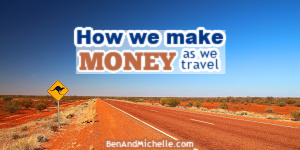
Just a caveat about making money online: we’ve been involved in some really good quality programs and learnt from some really great people.
We’ve done everything from MLM, blogging, affiliate marketing to advertising, creating courses and sponsored posts. We’ve bought ads and traffic, learnt copywriting, created autoresponders and email newsletters.
We’ve done lots of stuff, but we totally recognise that we have lacked focus, discipline (argh) and the tenacity to consistently apply these things to one business idea.
We’ve learnt that we have to fix those things (discipline etc) first, and then consistently apply all the technical skills we have.
All that to say: just because we’ve not seen much success with making online money YET, we still believe it’s a valid and valuable way to fund your travels, and we’re still working very hard at it.
Phew, caveat over.
Okay, so on to what we are doing to create an online income:
We have two blogs (this one and RVObsession.com) where the aim is to make money from advertising on the blogs, affiliate marketing and sponsored posts.
Both RVObsession and this blog make money through ads and affiliate marketing.
It’s always been my goal to make money from blogging, and it’s a slow, long and hard process… not helped by the fact that I’m very inconsistent at posting new content.
Blogging is the long game.
So in the short term, the two other ways we make money online is through offering virtual assistant services and freelancing.
Virtual Assistant
It can be a little tricky to define exactly what a virtual assistant is/does but in a nutshell:
A virtual assistant is someone who helps you run your business, whether a traditional or online business, by doing any online tasks that you need.
This could be ANY tasks that can be completed online.
It could be admin tasks anyone in the corporate may undertake like: diary management, minute taking, email management, answering the phone, ordering stock, managing a database, customer service or cold calling.
Or it may be scheduling posts on your blog, social media management, email marketing or running ads.
Currently, I help one blogger by running her Instagram account, and the other client I have is a motorhome manufacturer who’s Pinterest account I have set up and manage.
I think that being a virtual assistant is a fantastic way of creating an online income. It what I’ve done and this is how I got started as a VA .
Freelancing
Generally this is someone who has a specialist skill that they provide to businesses on either a one-off project or an ongoing basis. This includes services like: writing, website development, design, app development and more.
Currently I have one freelancing gig where I write articles for a motorhome manufacturer every month.
Casual & temping work
This is our least favourite way to make money as we road trip around Australia, but it’s what we’re the most used to and there’s plenty of it around.
When we stopped in Dubbo, Ben had a casual job at a tyre shop. And I had a casual admin job and then a temping contract for a couple of months.
It’s not our favourite way of working because it means we’re tied to the one location, plus you have to wear work clothes every day.
But it’s easy and familiar and as I said before, there’s plenty of it around.
This is the main way we’ve made money on this trip so without it we’d be screwed.
This is just what we are doing to make money and hopefully it will give you some ideas about what you could do if you also need to make an income while you’re travelling.
This topic could be a whole ‘ultimate guide’ in itself, but I’ve written a bit more about ways that I’ve seen people making money while on a road trip around Australia. You can read that here .
I realise that’s a lot to take in and maybe you’re stuck in the stage of, ‘yeah that’s great to know all that stuff… but what to I do now!?’
I’ve put together a timeline planner to help you go through all the steps that you need to think about and set up, in order to turn your dream into a reality.
I wish it could be as easy as saying, ‘follow these steps, and in one year you’ll be on the trip of a lifetime!’, but we all know that a cookie-cutter approach will not work for everyone. We’re all so completely different, with different needs, wants, budget and level of compromise!
This planner will help you to determine what things you should be thinking about, and at what stage. Just go to our Free Resources page to download it.
If you want to download this huge post as a PDF, you can purchase it below for $9.
Phew, that’s my take on Getting Set Up for a Road Trip Around Australia ! I really hope you got some value out of this tome. If you have any questions, please feel free to add them in the comments below and I’ll get to them as soon as I can.
Save the ‘Guide to getting set up for a road trip around Australia’ to Pinterest
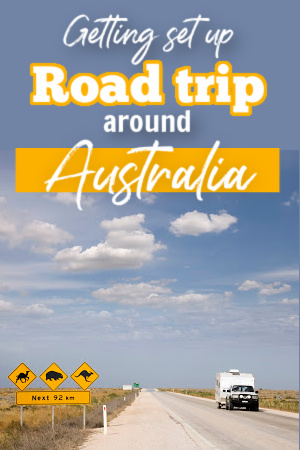
Tuesday 15th of December 2020
Hi Michelle and Ben.
I’ve stumbled across this blog and have found it a brilliant read. So well done! And just what I need! Thank you. I’m all inspired and more confident in giving it a go and making my dream a reality. Thank you x
Olivia Confidus
Friday 3rd of April 2020
Just lucky I found your blog! Great, thanks for the beginner's guide on planning an Australian trip! I hope after quarantine I can do it.
Saturday 4th of April 2020
Yes, once this is all over (who knows how long that's gonna take?) I can't wait to get out on the road again! M :-)
Removalists
Monday 25th of March 2019
Great content, you should also include the removalist services that are somethimes necesessary when moving on Australia. Thanks and looking back for more informative articles.

What it Costs to Travel Australia in a Caravan. Best Guide to Expenses
Last updated on 4 August, 2023
Australia is a vast and beautiful country. Many each year seek to find new places to discover and for adventures by travelling around Australia in their caravans. Most people want to know what it costs to travel Australia in a caravan? What should their lap of Australia budget be?
Travelling Australia by caravan is very popular. It gives freedom to go wherever you want. However, the cost of travelling Australia in a caravan can vary greatly depending on the length of the trip, the route taken, how fast you travel and so much more.
How much a road trip around Australia costs varies greatly. What one travelling individual, couple or family may spend can be vastly more or less than another. Still, there are some frequent expenses to add to your travel budget when planning your trip.
Disclosure: This post may contain affiliate links. If you use these to make a purchase, I may earn a commission. Any commission is greatly appreciated as it helps to keep Our Wayfaring Life online.
How Much Does Fuel Cost to Travel Around Australia?
How much money do you need for australia travelling, how much money should i budget for a lap of australia, lap of australia expenses, how much do we spend as a couple travelling australia full time in a caravan, recent post.
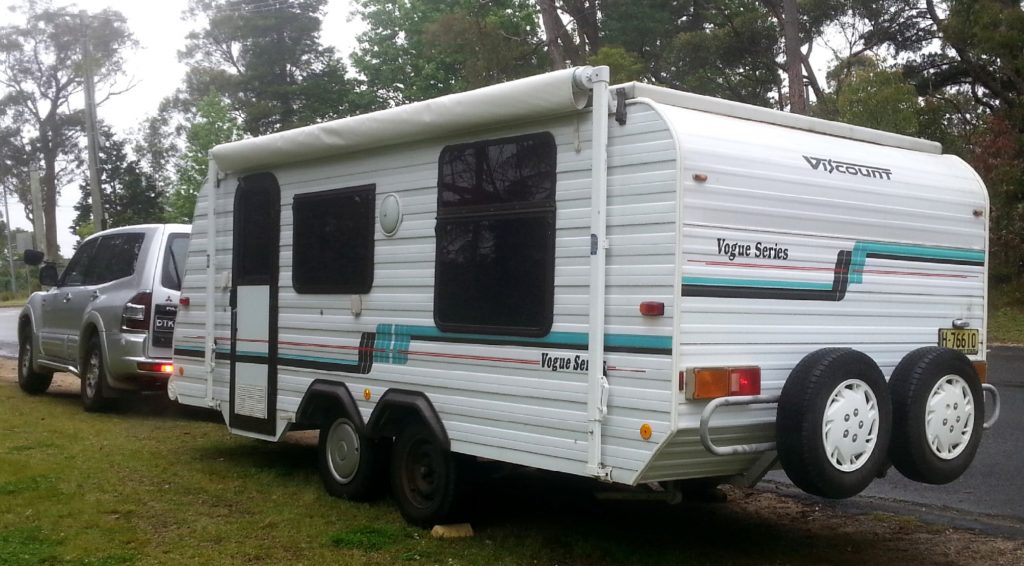
What it Costs to Travel Australia in a Caravan?
The cost of fuel to travel around Australia varies depending on a vehicle’s fuel efficiency , prices and distances travelled. The last year, we towed our caravan 100 kilometres, costing us $10 for fuel, a significant chunk of our travel budget.
The amount paid for fuel ranged from $1.65 to $2.70 per litre. Using a fuel price app and having dual long range fuel tanks helps to find the best prices and the driving range to avoid the highest.
Travel budgets for travelling around Australia in a caravan range from $30k to $100k+ per year.
Most people have heard that it costs $1 per kilometre to travel around Australia with a caravan. For some, it may. We have met pensioners living from one payment to the next, travelling as far and slowly as they need, so they can afford to travel. We have also met travellers with big budgets travelling as fast and free as they want, spending up big.
Related: How to Fund Full Time Travel in Australia , Travel Savings and Jobs for Full Time Travellers in Australia .
Small Travel Budget of $30k to $40k per Year
A travel budget of $30000 per year for a single person or couple or $40000 per year for a family is sufficient for full time travel, slow travel. To tour Australia with these funds:
- It is best to have an off grid set up.
- Free or low cost camp the high majority of nights.
- Travel slowly to use minimal fuel.
- Avoid peak periods; instead, travel in the shoulder or low seasons.
- Eat to a reasonable food budget , meal planning, buy food from supermarkets and cook your meals and snacks.
- Enjoy (mostly) free or low cost activities.
- Use a low cost option for laundry .
- Complete most repair and maintenance tasks on the vehicle and caravan yourself.
- Shop around for the most affordable insurances, phone plans etc.
- Have a roadside assistance policy to avoid costly towing and breakdown costs.
- Buy only what you need and be content to make do as much as possible.
Medium Travel Budget of $50k – $70k per Year
A travel budget of $50000 per year for a single person or couple or $70000 per year for a family is sufficient for a one (1) to two (2) year lap of Australia or a quick half lap. To tour Australia with these funds:
- It is a good idea to have an off grid set up.
- Mix up paid and free or low cost camping.
- Travel reasonably quickly depending on fuel costs and consumption.
- Enjoy a mix of free, low cost and paid activities.
- Enjoy some meals out, but generally eat food bought from a supermarket.
- Make use of laundry mats for doing laundry.
- Complete nearly all repair and maintenance tasks on the vehicle and caravan yourself. Pay for repairs when necessary.
- Have roadside assistance to avoid costly towing and breakdown costs.
- Be conscious of your spending, but feel reasonably comfortable buying most things needed.
Big Travel of Budget $100k+ per Year
A travel budget of $100000+ per year for a single person, a couple or a family is sufficient for a one year or less lap of Australia. To tour Australia with these funds means:
- Travel as fast as you need or want.
- Stay in paid caravan parks or campgrounds every night.
- Travel to places in peak periods.
- Enjoy all your bucket list items .
- Enjoy eating out often.
- Pay for vehicle and caravan maintenance and repairs when needed.
What does it cost to travel Australia in a caravan? For some, it is as little as $500 per week or less. Others are spending $1500-2000 per week. It is not essential to spend big to have a great time road tripping around Australia. Making memories of a lifetime can be done on any budget as long as you are doing it.
When budgeting for a lap of Australia, the expenses to plan for typically are:
Since fuel prices have catapulted, fuel budgets of $10k-20k per year to road trip around Australia would not be farfetched.
Estimating how much a household spends on groceries provides a reasonable idea of how much to budget while travelling. Most people’s spending habits at the supermarket remain the same if the plan is mostly cook your meals. Add some additional funds if significant amounts of time will be in remote and rural areas where the cost of groceries is higher.
Accommodation | Caravan Park and Campground Fees
Accommodation costs can vary depending on preference for free camping or staying in caravan parks and whether travel is during peak and non peak times. Commonly, it costs $40+ per night for a caravan site in a caravan park and more if there are children.
By free camping, more often than not, our accommodation costs travelling around Australia have been minimal. In a year at most, we camp an average of 25 nights in paid campgrounds or caravan parks. We have a set up for off grid camping .
Tours and Attractions
The very notion of travelling is to see and do great stuff. So, it is vital to have in the budget to do some once in a lifetime bucket list items and some fun things along the way.
Our spending in this category has been on scenic flights, vehicle ferries to islands, boat and other tours and permits to remote communities such as Nhulunbuy. The total amount is nearly $20000 over the years of road tripping Australia full time.
Also, note that we have our kayak, 4WD, snorkel gear and Daryl’s golf gear which has saved us lots of money on hire costs.
Vehicle and Caravan Maintenance and Repairs
An expense we grossly underestimated was how much funds we would need to keep our caravan and car on the road. In the five years we have been on the road, we have had:
- To replace our vehicle .
- Two smashed rear windscreens.
- A bent axle on the caravan.
- A roof leak in our pop top caravan .
- Tow bar sheer of the car.
- Numerous tyre blowouts and flats.
- Car and caravan battery replacements.
- Major transmission service.
- Caravan awning and skirt replaced.
Plus, all the routine vehicle servicing and maintenance. The costs add up! We recommend for a one year lap of Australia, having $5-8k in your funds for unexpected costs for keeping your rig on the road.
Insurances, Registrations and Roadside Service
Before hitting the road, sought out:
- Vehicle and caravan registration and insurance
- Appropriate roadside service coverage
- Ambulance cover or private health insurance
It pays to get a few quotes, as it could save hundreds of dollars a year.
Gas (Bottles)
As wayfarers, we use gas for our fridge and cooking when off grid. Generally, we use a 9.5kg bottle of gas every three to four weeks. If you have a gas heater and hot water service, usage may be a bottle a week.
Vehicle and Passenger Ferries
Australia has many islands to visit on a big lap. Each island has a ferry service. It is a good idea to check out the websites of each island on your itinerary and budget for the ferry costs.
Overall, we have spent close to $5000 on vehicle and passenger ferries to:
- Tasmania ( Spirit of Tasmania ) for car and caravan
- North Stradbroke Island for car only
- K’Gari for a car only
- Kangaroo Island for car and caravan
- Rottnest Island as passengers
- Magnetic Islands for a car only
To save money, we did not take our caravan to some islands and camped in a tent instead.
Emergency Funds
Emergency funds are a financial safety net. It is money for unforeseen circumstances, such as a major vehicle breakdown, medical emergencies or unexpected flights home.
Emergency funds provide peace of mind. It means unforeseen circumstances are less likely to cause stress or end your trip.
Other Expenses
Other expenses to consider are:
- Dog Expenses and Vet Fees
- Educational Costs
- Medical and Pharmacy Expenses
- Mobile and Data Plans
- Streaming Services (Netflix)
- Loyalty Memberships (Big 4)
- Miscellaneous Items
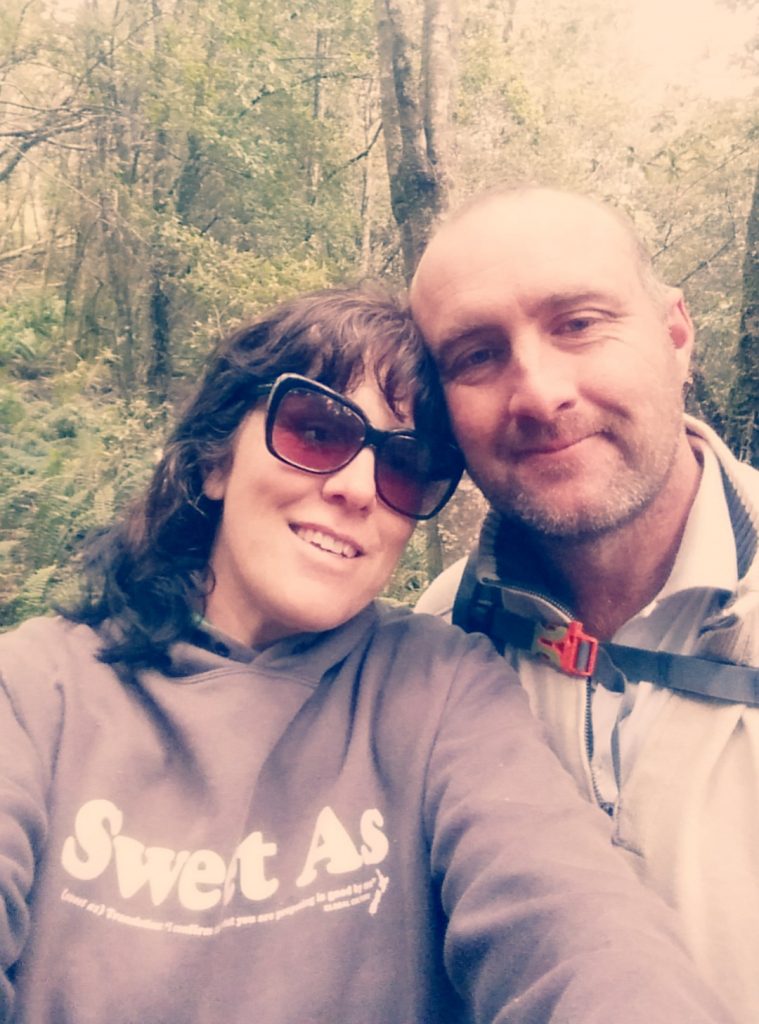
Our budget changes significantly. Our weekly spending varies from $600 to $900 per week or about $35000 to $40000 per year as we travel around Australia full time as a couple with our dog. The changes in our expenses depend on factors such as:
- Availability of free camps v caravan park fees.
- Fuel costs in remote locations and travelling vast distances v city or suburban fuel costs and short distances.
- Cost of groceries in remote areas v costs for these in city or suburban areas.
- Paying large sums for bucket list items v doing only free stuff.
- The car or caravan has needed expensive repairs v diy maintenance tasks .
- The dog needs emergency vet care v routine annual vet check.
- There is a big family celebration you fly home for because you would never miss v a phone call to say congratulations.
There are many reasons why travel costs change week to week, area to area or year to year (if you travel full time).
Related: 12 Tips on How to Save Money While Caravanning Around Australia
What does it cost to travel around Australia in a caravan? We hope this blog post has given you a way forward for planning your travel budget.
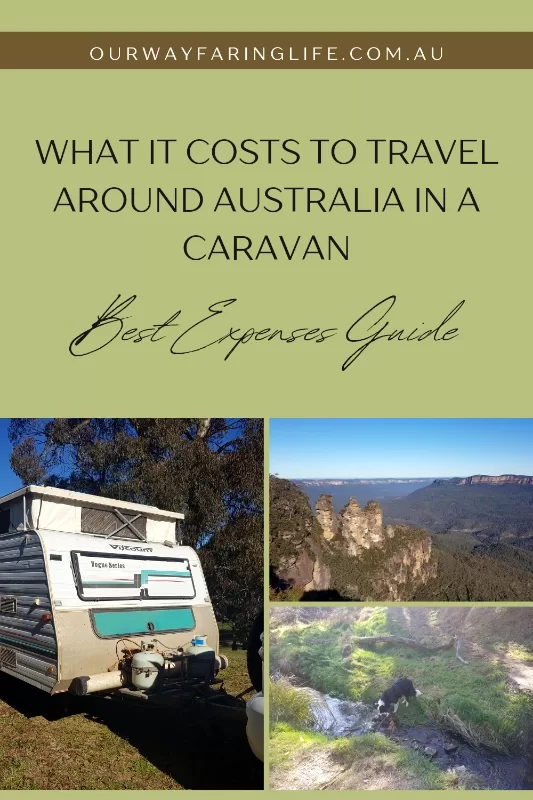
- The Best Dog Friendly Road Trips Australia
- Buying a Caravan for the First Time. What Features and Fittings are Best?
- 4 Best Options for Tethering Your Dog When Camping
- Kitting Out Your Caravan and Car for an Incredible Trip Around Australia
- 14 Stunning Blue Mountains Dog Friendly Camping Spots
Leave a comment Cancel reply
Save my name, email, and website in this browser for the next time I comment.
Road Trip Around Australia
Around australia trip planner.
Build your own road trip around Australia or embark on one of our three suggested routes and itineraries with our Around Australia road trip planner. Maps, best camping, prices, top sights, awesome photos, drive times and distances, it's all here! So, buy or hire a campervan from the departure point of your choice and hit the road for an adventure of a life time!
Three Routes Around Australia
1. the circumnavigation around australia.
17,100 km | 244 hr drive time | 3 months or more
This road trip can be started and finished from any point you choose, but it misses the central desert region of Australia with Uluru, the Olgas, and Coober Pedy.
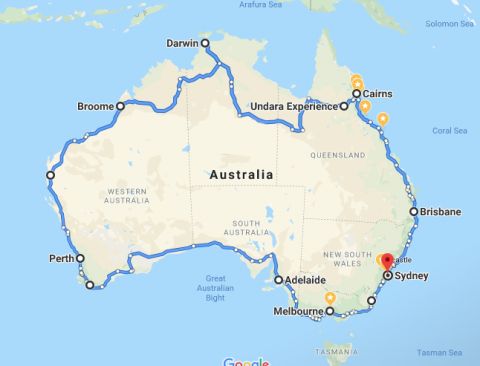
Itinerary from Cairns (example) Cairns to Darwin – 3,260 km | 9 - 15 days Darwin to Broome – 1,900 km | 7 days Broome to Perth – 3,200 km | 14 - 19 days Perth to Adelaide – 3,700 km | 16 days Adelaide to Melbourne – 1,500 km | 7 - 12 days Melbourne to Sydney – 1,200 km | 5 - 10 days Sydney to Cairns (East Coast) – 3,500 km | 5 weeks
2. Our Favorite Road Trip Around Australia
18,100 km | 258 hrs drive time | 3 months or more
This is our favorite drive around Australia because it includes the central desert region and our beloved Uluru while missing out some of the less interesting stretches between Cairns and Darwin. You can start this road trip in Cairns and end it in Adelaide, or start in Adelaide and end in Cairns.
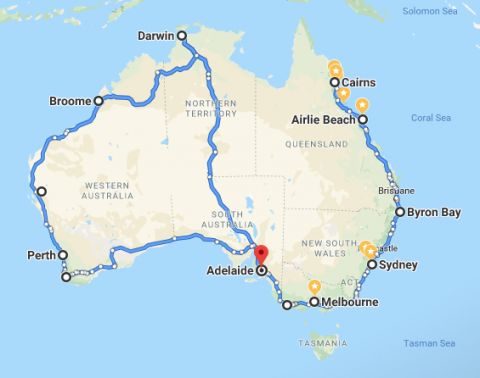
Itinerary from Cairns
Cairns to Sydney (East Coast) – 3,500 km | 5 weeks Sydney to Melbourne – 1,200 km | 5 - 10 days Melbourne to Adelaide – 1,500 km | 7 - 12 days Adelaide to Darwin – 3,760 km | 9 - 15 days Darwin to Broome – 1,900 km | 7 days Broome to Perth – 3,200 km | 14 - 19 days Perth to Adelaide – 3,700 km | 16 days
Itinerary from Adelaide
3. The I-Don't-Want-to-Miss-a-Thing Road Trip Around Australia
20,300 km | 293 hr drive | 4 months or more
If you're like us, and don't want to miss anything, this road trip around Australia includes not only Uluru in the central desert region but Broken Hill, Mungo National Park and the rural regions of New South Wales. You can start this road trip in Cairns and end it in Sydney, or start in Sydney and end in Cairns.
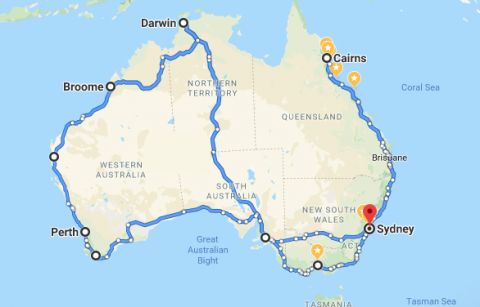
Cairns to Sydney (East Coast) – 3,500 km | 5 weeks Sydney to Melbourne – 1,200 km | 5 - 10 days Melbourne to Adelaide – 1,500 km | 7 - 12 days Adelaide to Darwin – 3,760 km | 9 - 15 days Darwin to Broome – 1,900 km | 7 days Broome to Perth – 3,200 km | 14 - 19 days Perth to Adelaide – 3,700 km | 16 days Adelaide to Sydney – 1,800 km | 7 - 14 days
Itinerary from Sydney
Build Your Own Road Trip Around Australia
Click the route to bring up the link.
Driving Around Australia
Vast Distances
Australia is larger than you might think - as large as the USA without Alaska and three quarters the size of Europe. It is also extremely diverse with everything from snow-capped mountains to lush tropical forests, the outback desert and rolling green pastures. If you fly from city-to-city, you'll miss all this.
The Best Way to Travel Australia is by Campervan
The best (and cheapest) way to experience Australia is to hire or buy a campervan and take a road trip. That way you can set your own itinerary, be spontaneous, take the road less travelled, and stop where you want for as long as you want. With a kitchen in the back, you can pull into a stunning location, make lunch and soak in the views. It's the most convenient, affordable and memorable way to dine. And at the end of an adventure-filled day, your home is wherever you park it.
Australia's Friendly Nomad Community
You will soon discover the camaraderie of the campervan community - kindred spirits who like to get off the beaten path, who appreciate the beauty of Australia, and are eager to share a few tips and their favorite camping locations with you. As Edith Wharton once said "One of the great things about travel is you discover how many good, kind people there are."
Traveling around Australia is a popular thing to do when you retire here, so much so that these travelers are known as the 'grey nomads'.
Kangaroos and Driving At Night
We strongly advise against driving at night due to the volume of kangaroos that will jump in front of your campervan. Not only will you damage your vehicle, but you'll injure or kill a kangaroo. When you see a dead kangaroo on the road, check its pouch for a joey when safe to do so. Kangaroo rescue centers can be located at Coober Pedy, Alice Springs, Darwin, Katherine and many other towns around Australia. You can find wildlife rescue phone numbers here . Offer it water but nothing else until you get it to a rescue centre. You might save a life!
Outback Driving Etiquette
If a truck approaches while travelling the outback roads, it is polite (and sensible) to pull over onto the side of the road and wait for it to pass. The trucker will thank you for it and you’ll protect your windscreen from flying rocks.
Sign up for amazing offers exclusive access for offers and promotions
Campervan hire depots, airlie beach.
Heart of Reef Shuttles, 48-50 Carlo Drive, Cannonvale, Queensland 4802 Phone: 1800 216 223
20 Noble Avenue, North Gate, Queensland 4013 Phone: 1800 216 223
440 Sheridan Street, Cairns, Queensland 4870 Phone: 1800 216 223
273 Elizabeth Street, Coburg, Victoria 3058 Phone: 1800 216 223
23-25 Erskine Rd, Caringbah, Sydney, NSW 2229 Phone: 1800 216 223
Do you have any questions or need additional information?
Beginner’s Guide to Travelling Around Australia in a Campervan or Car
Written By Bastian Graf
The best way to see Australia is on a roadtrip. If you’re planning a trip and are thinking about renting or buying your own vehicle then read on. We’ve put together a full guide on do’s and don’ts, top tips and expert recommendations for travelling around Australia by road.

Download the full guide here
Download your full copy of the Beginners Guide to Travelling around Australia, with campsites, extra road trip itineraries and tips from the team.
Getting on the road
The best way to see Australia is on a roadtrip. If you’re planning a trip and are thinking about renting or buying your own vehicle then read on. We’ve put together a full guide on dos and don’ts, top tips and expert recommendations for travelling around Australia by road.
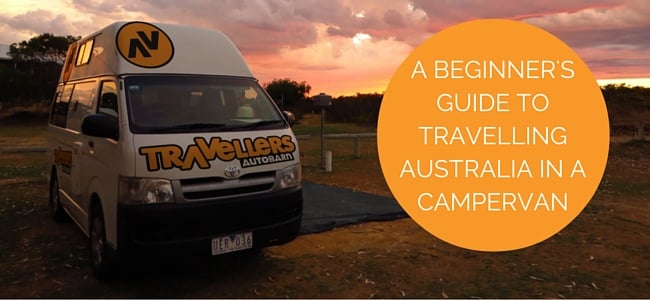
How to choose the right campervan or car for you
To buy or rent? That’s the question…
Top tips for selling your vehicle at the end of your trip
5 best places to visit in Australia in a campervan
- Survival Tips for Living in a campervan
Australian Driving tips: Rules of the road
- Show your vehicle some love
Fridge vs. no fridge – lots of space vs. not so much space – proper campervan vs. station wagon … decisions decisions decisions .
Buying or renting a car or campervan for the first time can be pretty daunting and with so many options out there it’s sometimes a little confusing to decide on what the best option for you is. Read on for top tips and expert advice on how to find the right vehicle for you.
Station wagons
These trusty vehicles are cheap, reliable and most importantly easy to pick up all over the country.
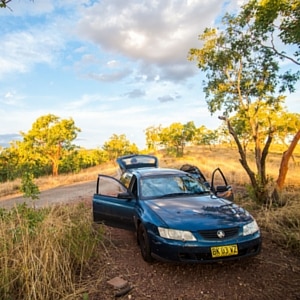
- Travellers who are more than happy to bunk down on a mattress in the back of the wagon or to sleep in a tent.
- Travellers on a budget – they are cheaper vehicles to run than vans or campervans.
- Groups of mates who are travelling together (this is a great way to save on the cost of petrol)
- People who prefer automatic vehicles (over 85% of station wagons are auto)
- People who are planning to mix it up between camping and staying in hostels.
Cost: Travellers Autobarn offer station wagons to rent from $35 a day, or you can buy one for about $3000 – $5000

We recommend campervans for:
- People who have some extra cash to spend on a vehicle
- Travellers who prefer their home comforts such as fridge, kitchen sink and gas stove.
- Travellers who are planning on sleeping in their vehicle every night and are looking for a little more room.
- Travellers who are confident with driving a manual
Cost : Bag yourself a campervan for anything between $9900 – $16,000 or rent one from $45 a day.

We recommend vans for:
- People who can be flexible with their budget and are happy to spend a bit more
- People who are planning on spending most nights on their trip sleeping in their vehicle
- People who planning on roadtrippin’ for a couple of months
- People who are happy to drive a manual
Cost : Pick up a van from Travellers Autobarn from around $4000 – $8000 or rent one from $35 a day

We recommend 4WD’s for:
- Travellers who have some cash to spend
- Travellers who are looking to head off the beaten track
- Groups of 2 – 5 who are planning on sleeping in hostels and motels at night.
- Experienced drivers who will be confident handling such a big and powerful car
- Nature lovers who want to explore the most remote parts of Australia.
Cost : A 4WD from Traveller’s Autobarn will cost you between $6000 – $10,000.
Once you’ve decided on the vehicle that’s right for you and your trip the next decision you need to make is whether to buy or rent your vehicle in Australia.
Below is a list of some important factors you need to consider before you make the call:
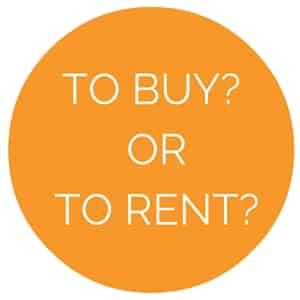
- How long are you going to be travelling around Australia for?
This is the most important factor to consider when you’re debating whether to rent or buy your campervan or car. If you’re only planning on hitting the open road for 3 – 4 months (or less) then we recommend you rent. The benefits of doing this are:
- They come equipped with all the campervan essentials you need
- 24 / 7 roadside assistance
- Toll free service number
- Access to free campgrounds
If you are planning on staying in Australia for as long as possible then buying probably makes the most sense for you. If you are travelling in Australia for a year or 2 then it’s likely you’ll have to find work at some point and having your own vehicle will help to open up lots of possibilities for you – especially if you are planning on doing the farm work that’s essential for getting your 2 nd year visa.
- How much money do you have?
At the end of the day, it all comes down to how many dollars you are willing to spend. If you are a backpacker with cash to spare (lucky you), then renting is an easy option that offers no worries, no hassle and extra security.
If you are working to a tight budget then we recommend you take the time to shop around for a good deal on a vehicle. Don’t forget to consider how much you will get back when you sell it at the end of your trip.
- Looking for complete freedom?
If you want to come and go as you please, you want the option to change your route whenever, paint it, bump it – then buying your own vehicle is for you.
There are a number of benefits to renting your vehicle but if you’re really looking for the ultimate freedom out on the open road then owning your wheels is the way forward.
- What kind of traveller are you?

If the idea of breaking down on the side of the road in the outback and having to flag down a stranger to tow you to the nearest local garage is your idea of a nightmare then owning your vehicle might not be for you and renting gives you extra security and minimum fuss if something happens.
On the other hand if you’re adventurous, confidant and more than happy to deal with unplanned scenarios then buying is the way to go.

When it’s time to pack up your bags, dust the sand off your flip-flops and start wearing all white to show off your awesome tan it’s also time to sell your vehicle on.
But what do you need to consider?
- Where will you end up selling your vehicle? It’s all about being in the right place at the right time. April to July is probably the worst time of year to try to sell your vehicle (as Sydney, Melbourne and Perth will all be very quiet). Avoid trying to sell your vehicle in Darwin and Cairns between December and June, and Brisbane and Adelaide can be difficult all year round.
- Registration and paperwork . The more registration you have on your vehicle the more attractive it is to a prospective buyer (we recommend at least 3 months)
- How much time do you have? Don’t leave it too late to try and sell your vehicle before you head off back home as it can take 2 – 4 weeks to sell your vehicle on. That’s a lot of time to spend worrying that you might not sell it!

What is a buyback guarantee and why does it matter?
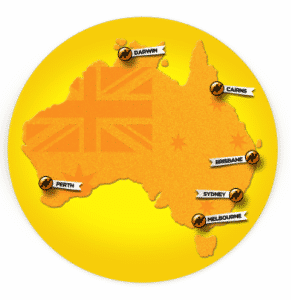
We also let you return your vehicle to any of our locations – Sydney, Melbourne, Brisbane, Cairns, Darwin or Perth . Too easy!
If you do manage to sell it on yourself for cash then no worries – just give us a call to let us know.
Another added bonus is that you don’t need to worry about any of the paperwork as we handle all of that for you.

- The Great Ocean Road : Epic beaches, great campsites and breathtaking sunsets.
- West Coast Adventure in Western Australia : Complete wilderness, outback and epic beaches
- Tropical North Queensland : Rainforests, the Great Barrier Reef and the chance to experience true Aussie beach bum life.
- Tasmania : Rural and natural beauty, amazing landscapes and secluded beaches
- The Red Centre : True outback experience and living in cultural landscapes in the heart of Australia
For some wanderlust inspiration and information on other epic road trips and check out our ultimate guide to the best roadtrip in Australia here.

Survival Tips for Living in a Campervan
Travelling around in a campervan is a brand-new experience to lots of people, so we thought we’d put together some tips to ensure that your trip around Australia with Travellers Autobarn is the ultimate, stress free road trip!
Plan a rough route
Australia is enormous and you won’t be the first backpacker to look at a map and underestimate how long it will take you to drive from one place to another. But, while you still want to keep some degree of spontaneity during your trip, it’s ideal to have a rough idea of where you want to travel to, the route you want to take and how long it will take you to get there.
Have a rough idea of the places you want to stop by and visit, or the route you want to take before you set off.

Once you have hired your campervan it’s likely that you will be departing from one of Australia’s major cities, so we recommend that before you hit the road you stop by a large supermarket to stock up on all the essentials (and we don’t just mean beers and sausages for the barbie!).
Buying food and supplies from petrol stations and small local stores on the journey can hit your backpacker budget hard.
Buying cheap petrol
One of your biggest outgoings is going to be cost of your fuel. One of the best apps we recommend is MotorMouth . It’s really handy for finding the cheapest petrol on sale in your area. And don’t forget, having the air-con on all the time will eat into your fuel tank – so if you’re trying to save some money settle for opening the windows instead.
Campervan Maintenance
Remember that you are responsible for the campervan while it is in your possession. This means that you should treat it like it was your own vehicle, carry out basic maintenance checks every 500 km. Basic maintenance includes checking things like the tyre pressure and coolant levels.
If you’re driving a campervan then make sure you know the height of the vehicle and be wary of driving into car parks, under bridges or low-hanging branches if you aren’t sure.

Bushfires are a common occurrence in Australia, they can be really dangerous – so always make sure you adhere to the guidelines.
We recommend that you visit or download the dedicated bushfire website or app for each state that you are travelling through (particularly in summer).
If you start a campfire then you must always make sure it is completely out at the end of the night and have at least 10 litres of water nearby in case it gets out of hand.

With the freedom of the road comes a little responsibility, and you should be aware of the paperwork that goes hand in hand with owning a car in Australia. The registration of your car, or the ‘rego’ as it is more commonly known, refers to the set of registration papers that every car must-have. These must be renewed every year and are specific to each state.
Each of the 8 Australian states has slightly different rules – if in doubt check the state website:
- New South Wales – Roads & Traffic Authority NSW (RTA)
- Victoria – VicRoads
- Queensland – Queensland Transport
- South Australia – South Australian Government Transport, Travel and Motoring
- Western Australia – Government of Western Australia Department of Transport
- Northern Territory – Motor Vehicle Registry
- Tasmania – Department of Infrastructure, Energy & Resources
- Australian Capital Territory – Rego ACT

If the unfortunate happens and you do come to a standstill surrounded by clouds of smoke coming from under the hood then stay where you are and wait for someone to pass by.
In Australia, it’s not uncommon to drive for hours without seeing another person. So the safest thing for you to do is to stay with your campervan or car. Leaving to look for help could mean that you spend hours or even a full day walking around under the scorching sun and in soaring temperatures before you come across help.
Always carry enough water and food.
The hotter it is, the more water you need.
It’s recommended that you carry at least 4 – 5 litres of water a day, per person . You also need to think about carrying some extra water in case you break down and are stuck overnight. Most large supermarkets stock 10L bottles of water – so make sure you stop off to pick up as many as you need.
It’s also crucial that you pack some non-perishable food to keep you going should you break down – think cereal bars, nuts and dried fruit. We recommend that you try to avoid snacking on salty snacks – it’s just going to make you even thirstier and could speed up dehydration.
Watch out for Skippy!

When you’re driving be aware that collisions with kangaroos, cows and other animals often occur on outback roads, particularly at nighttime, dawn or dusk. If you are pulling a night shift at the wheel then try to ensure that the passenger next to you stays awake and alert to help you watch out for any animals on the road.
Avoid unsealed roads
Although many of the roads in the outback are in good condition, you may suddenly find yourself driving on an unsealed road (such as a field or a gravel track).
If you have hired a campervan or car from one of the big cities like Sydney, Melbourne or Perth, then you might find that the insurance policy you took out does not cover you when you’re driving on unsealed roads. Make sure you read the small print.
To put it simply, a campervan road trip is the only way to see Australia. Speak to the team at Travellers Autobarn for more information and to book your campervan today .
Or, if you want to read more of our exciting Guides by Travellers Autobarn , come and hear what we’re talking about! Don’t forget to check out our latest deals & specials on campervan hire in Australia .
About the Author
Bastian Graf
Bastian is the Sales & Marketing Manager here at Travellers Autobarn. He holds a Master of Commerce in Marketing and International Business Management, and 20+ years experience in campervan hire, road trips and travel.
Sign up for deals and road trip itineraries.
Our travel guides, guide to free camping in australia, guide to buying a campervan, guide to budget camping in australia, guide to family camping in australia, guide to camping in australia, guide to western australian road trips, best east coast road trips in australia, beginner's guide to travelling around oz, best road trips in australia, guide to backpacking in australia, find your nearest travellers autobarn location, other guide blogs.
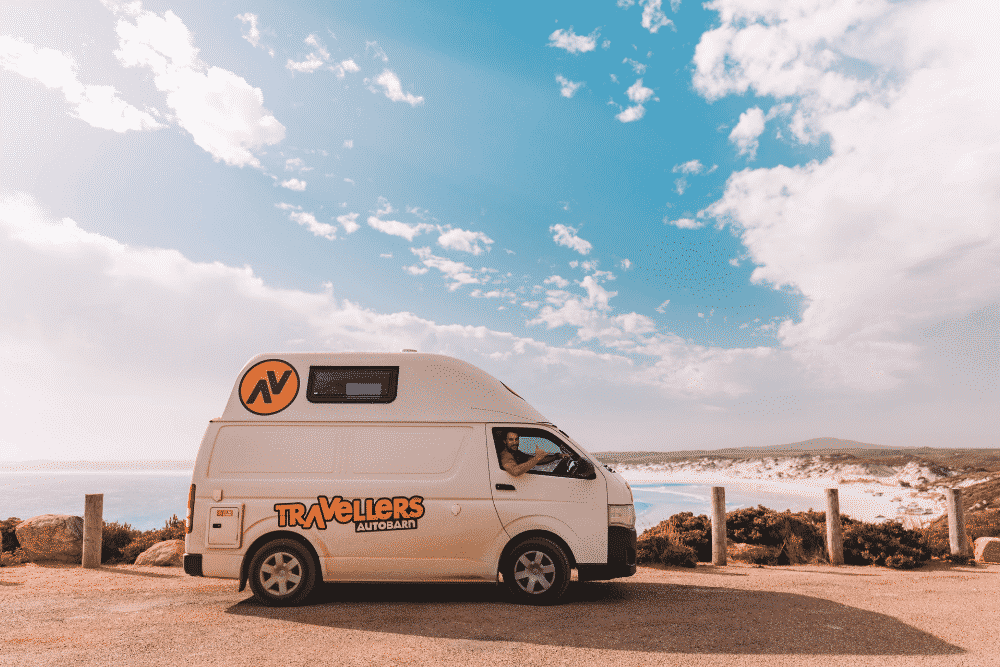
Guide to Road Trips in Western Australia
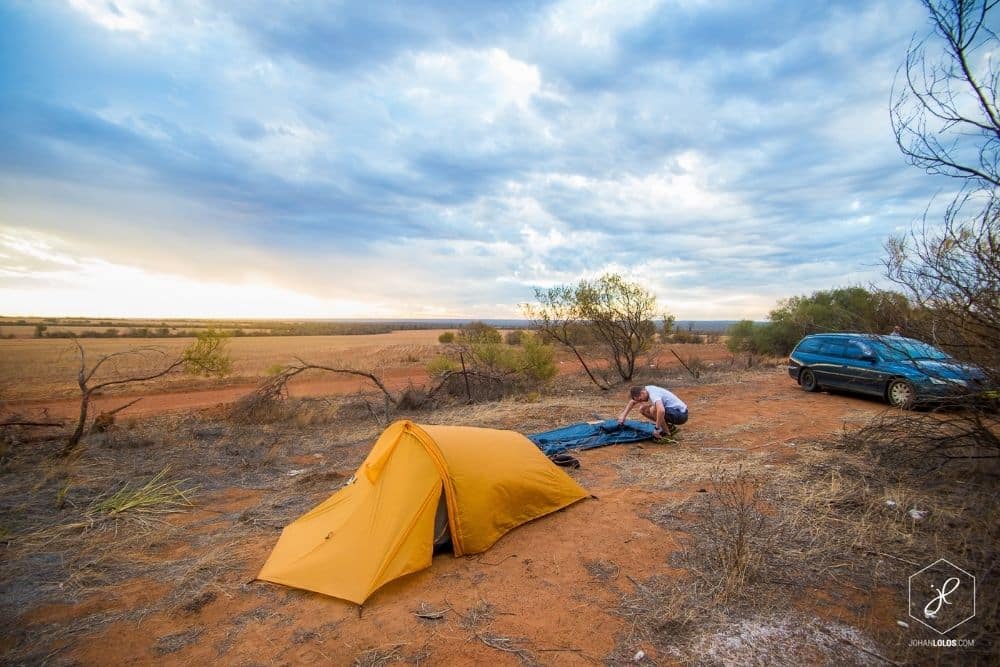
Beginner's Guide to Travelling Around Australia
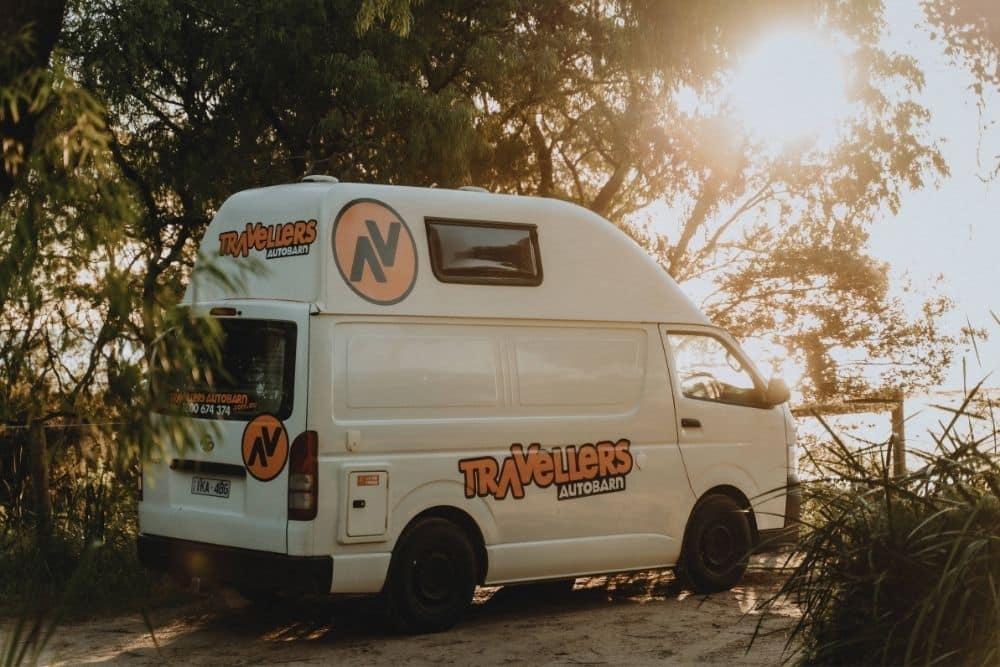
Unforgettable East Coast Road Trips
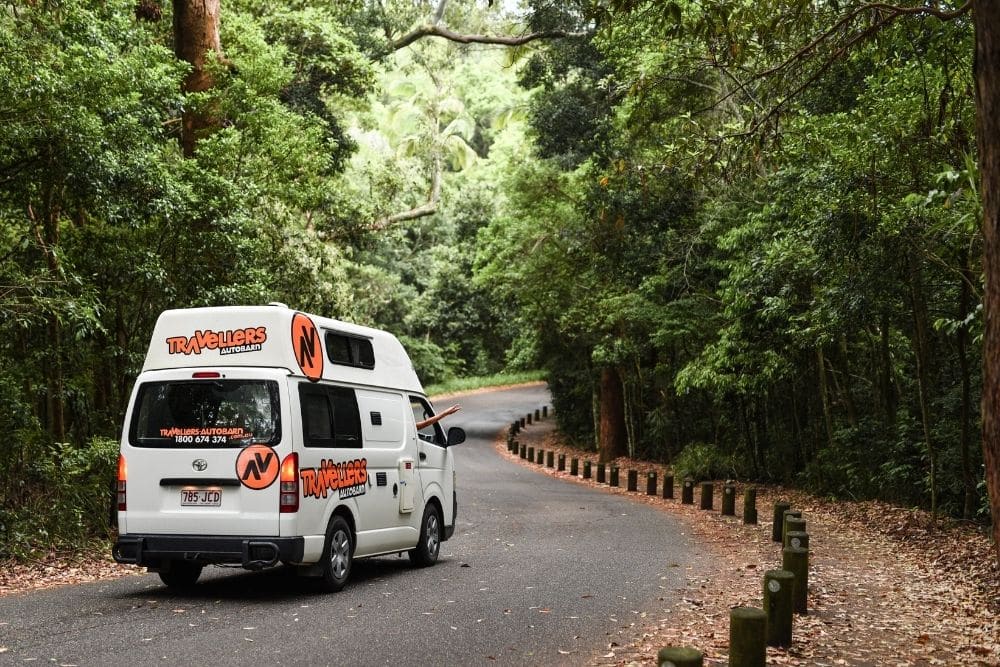
Our Campervans
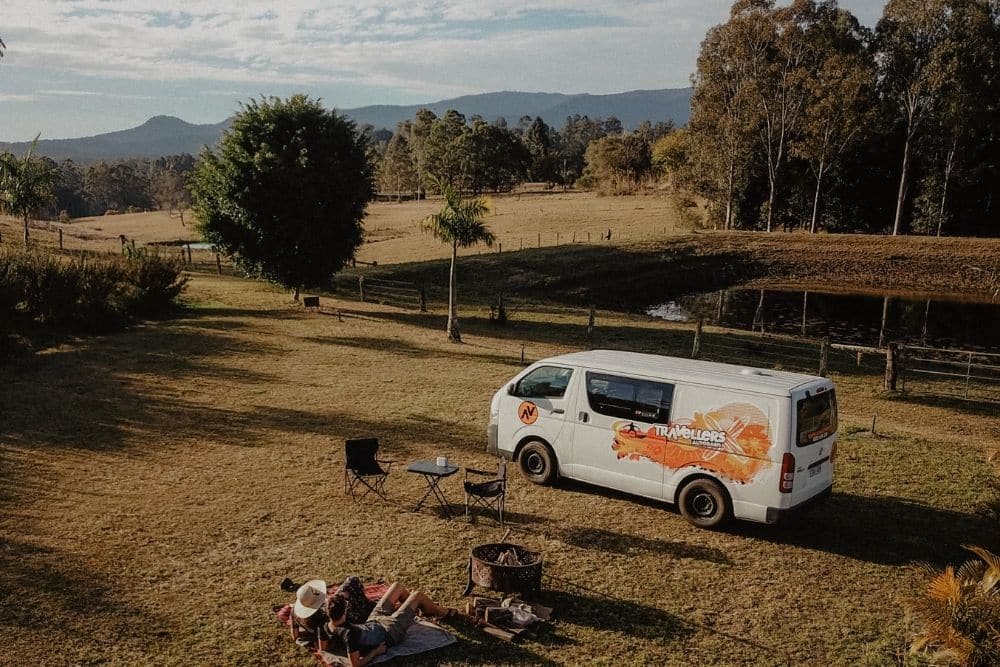
Chubby Camper
Seats 2 • sleeps 2.
Kuga Campervan
Seats 2-3 • sleeps 2-3.
Hi-5 Campervan
Seats 2-5 • sleeps 2-5.
Solar panel
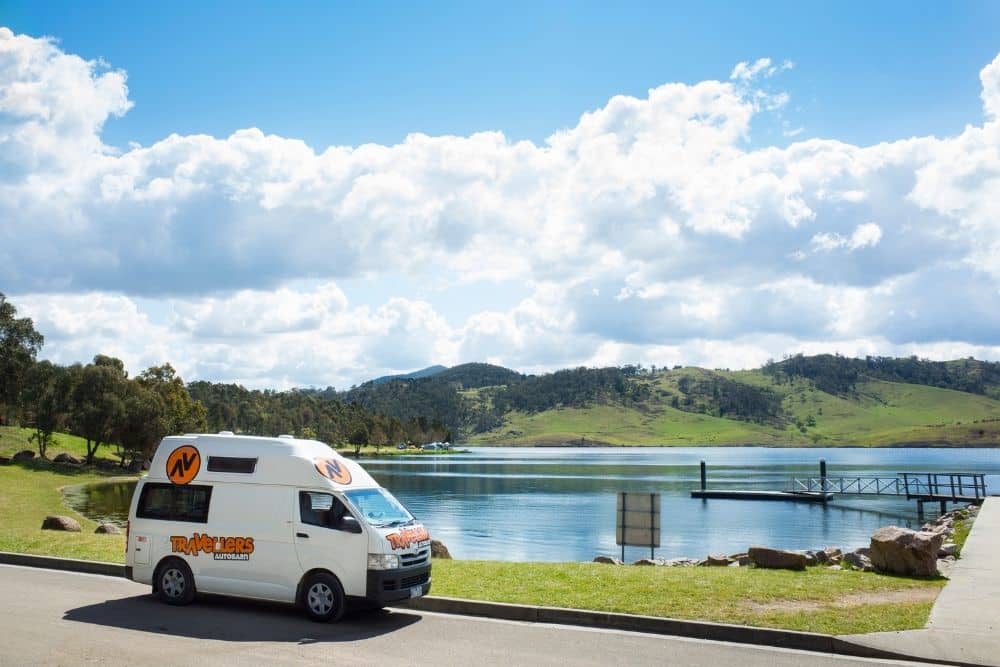
Hi-Top Campervan
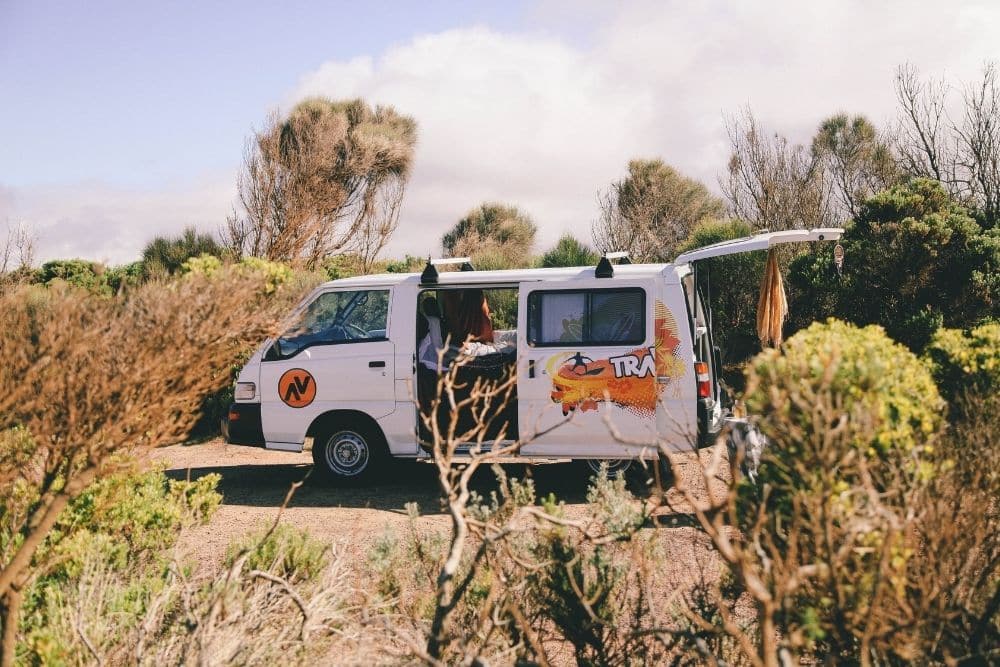
Stationwagon
External Table
Sign up for special deals and awesome road trip itineraries!
Data collection policy.
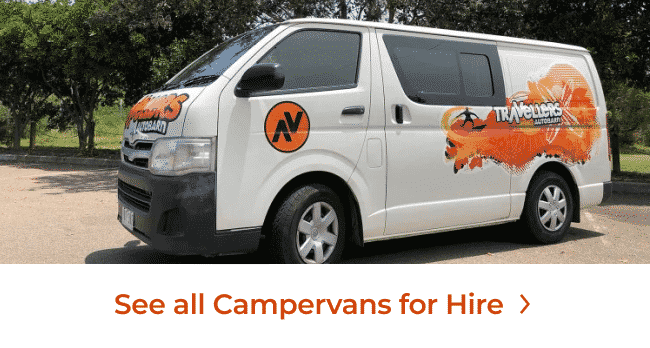
Destination:
Ten Aussie caravanning tips everyone needs to know
Emma Siossian
Travel Journalist
10 March 2023
Thinking of joining the ever-increasing number of Aussies hitting the open road with a caravan in tow? Here, then, are the Top Ten things you should know before pulling into your first tourist park.
1. there’s no such thing as sleeping in.
People in caravan parks like to rise early. They have places to be and they need to get there ASAP. I know, I know, they’re on holidays – but there’s no rest for the wicked and the early bird gets the best site at the next van park.
Plus, many caravanners are older retirees and they’ll be the first to tell you they usually wake by 5am anyway. So expect a lot of clatter and banging, car engines starting and loud morning greetings before the sun is even in the sky.
2. Privacy is a thing of the past
You may dream of quiet nights in a tranquil bush setting with a book and a folding chair, but while that can happen if you head off the beaten track, most of the time you’re on a small site (grassed, if you’re lucky) with another caravan a few feet either side of you.
Quite possibly one behind as well. Most have flimsy walls and lots of open screens, so sound travels a long way. Your own conversations, and those of people around you, will bounce around your not-so-quiet oasis for all to hear.
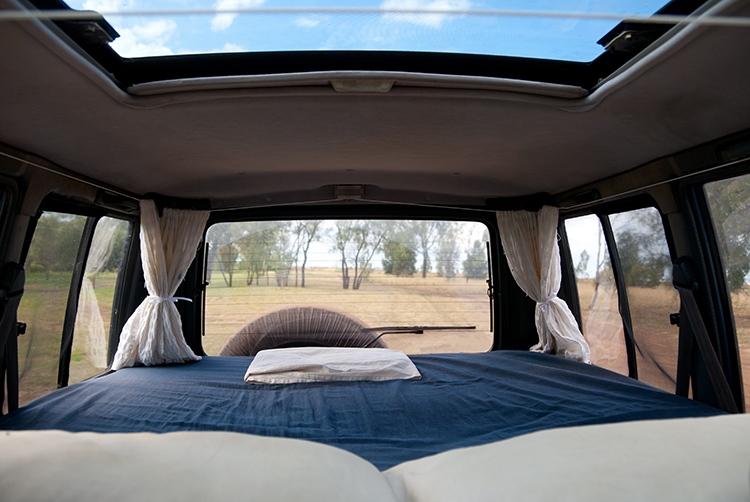
Build in bed in 4WD. Backpacking Australia with camper van.
And that’s before the lights go out and the snoring starts. You can hit your own husband (or, to be fair, wife) when they start to grunt and snort, but you can’t do much about the foghorn five caravans down.
3. People like to watch
Caravan parks are like mini theatres, with an ever-changing cast and crew watched by an openly curious, often downright nosy, audience. New arrivals are like a new set of actors taking the stage.
Oldies sit at their outdoor tables and stare as the latest travellers struggle to reverse their vans, maybe exchanging a few harsh words to each other in the process. A good domestic during the treacherous setting-up-of the-van process can brighten any caravan park afternoon.
If you’re young and appear inexperienced, so much the better. If, like my husband and I, you’re still in your 30s and on your first long-haul caravan journey, you’ll draw plenty of attention. Try not to show fear.
4. The toilets stink in the morning
We humans often follow a fairly set routine when it comes to eating and, um, expelling our waste. The post-breakfast trip to the amenities block is, therefore, never a pleasant experience. Often there’s a queue and the toilets invariably stink.
There are also all those embarrassing bodily function noises emanating from the cubicles while those in line cringe and await their turn.
5. Someone will always know better than you
There are tens of thousands of people currently on the road around Australia. Many of them have lapped the country more than once and, let me tell you, they know a thing or two (or three or four) about caravan travel.
They know where the cheapest petrol is, where the best views are, and which places not to bother with. And they won’t be backwards in coming forwards when it comes to telling you the things you should be doing or shouldn’t have done. There’s no solution to this. Just nod politely and agree.
6. The honeymoon is over
Living in a confined space for an extended period will test the strongest of relationships, no matter how much you love your partner. Especially if your chosen mode of transport is lean (in our case a 12ft, 26-year-old caravan).
Being with someone 24/7 can be tough, especially when you can’t move from one side of the van to the other without crashing into each other. Tension between couples on the road is the subject of many jokes.
Expect it and do your best to create space when it’s needed. The other alternative is to have a good old fight and add to that afternoon’s caravan park entertainment (refer to Point No. 03).
7. Things go wrong
No matter how well laid your plans, things will invariably come undone from time to time. The caravan park you want might be booked. Your warm tropical week in northern Australia might be windy and rainy. You might blow a tire or your vehicle might suffer some other type of mechanical problem. Be prepared and stay flexible. Throwing the odd tantrum sometimes helps, too.
8. The washing lines are always full
Washing and drying clothes when on the road can be a difficult chore to complete, especially when the limited number of clotheslines and driers seem always to be full.
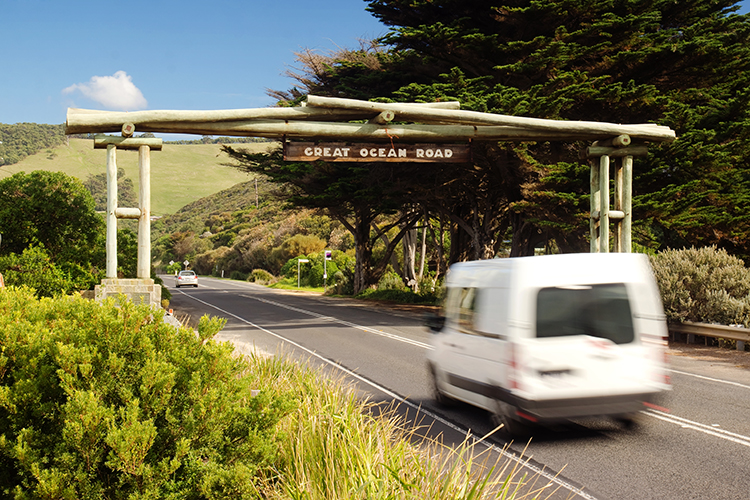
A campervan passes beneath the memorial arch on the Great Ocean Road in Victoria. The scenic road winds down the coast of Victoria and is popular with tourists.
Unless you’re one of the aforementioned early birds, my advice is to wash at night. Get in and hang your clothes up way before the sun has come up.
9. You instantly become a slow driver
Before we began caravanning, my husband and I complained about caravans driving below the speed limit and holding up long lines of cars. “Bloody caravanners,” we’d been known to mutter. Now we are one of those moving roadblocks.
We drive carefully and usually sit just under the speed limit, not because we have to, but because we get better fuel consumption that way. And with petrol one of the biggest on-road expenses, I guarantee your hooning days are over once you start towing a caravan.
Of course, some people do take this concept to new levels, crawling along at a snail’s pace . . . bloody caravanners.
10. Caravanning is one of the best things you’ll ever do
Despite points one to nine, nothing beats the freedom of the open road; the sense of adventure and fun as you explore new places and the flexibility that comes from taking your accommodation with you.
Australia is a fantastic country full of beauty and diversity and there are lots of great people to meet. Don’t put it off. Hook up that caravan and hit the road.
LEAVE YOUR COMMENT
Cancel reply.
Save my name, email, and website in this browser for the next time I comment.
Comments (13)
What a terrible photo. At least demonstate driving on the correct side of the road.
These are some great tips, and I appreciate your advice to get up early when on a caravan trip. My husband and I just purchased our first one, and we’re excited to take it out on the road. We’ll definitely try and get up early so we can get the best spots at caravan parks. Thanks for the great post!
You’re welcome. Enjoy your adventure.
Why did’t I read this before I bought the caravan
Maybe you can add some more, Robyn?
Hi there, do you know where I can leave my caravan and car whilst I go on a 10 day cruise from Sydney Circular Quays
Got washing to dry but all the camp lines full? Spread it out in the car and let the heat act as a natural dryer. Once dry leave your car windows down for 30 minutes, to get rid of any moisture
Nice one, Grant, We’ll try that one over the holidays.
Hahaha …..I love this ….you have cut through the fantasy and given us the truth
Wonderful article, very accurate on the points you made. We are looking forward to returning to the road as retirees after many years. Our last adventure, of the great outdoors, was when our children were young. Thanks a lot for the memories this evoked.
I love your realistic, down to earth view of the caravan life. I must admit, I have thought that the above might be the case. I think I would have a huge adjustment to make if I decide to become a caravaner. I love my privacy and space. It did make me laugh though !!
Fantastic 10 points we had a great laugh. Thanks a million
You might also like
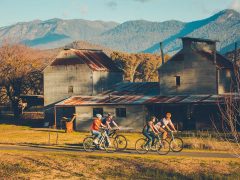
15 unmissable things to do in Bright, Victoria
You’ll find epic cycling trails, a vibrant dining scene, clutch of boutique wineries and a microbrewery with mountain vistas just three-and-a-half h...
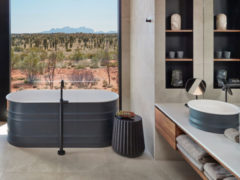
These are the most luxurious glamping spots in Australia
Glamping – or ‘glamorous camping’ – means a trip to the great outdoors without the hassle or fuss: arriving at your campground to find your te...
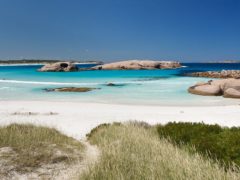
11 of Australia’s most beautiful secluded campsites
There's camping and there are the most beautiful places to camp in Australia. You can thank us later. Personal butlers. Five-star dining. Drink umbre...
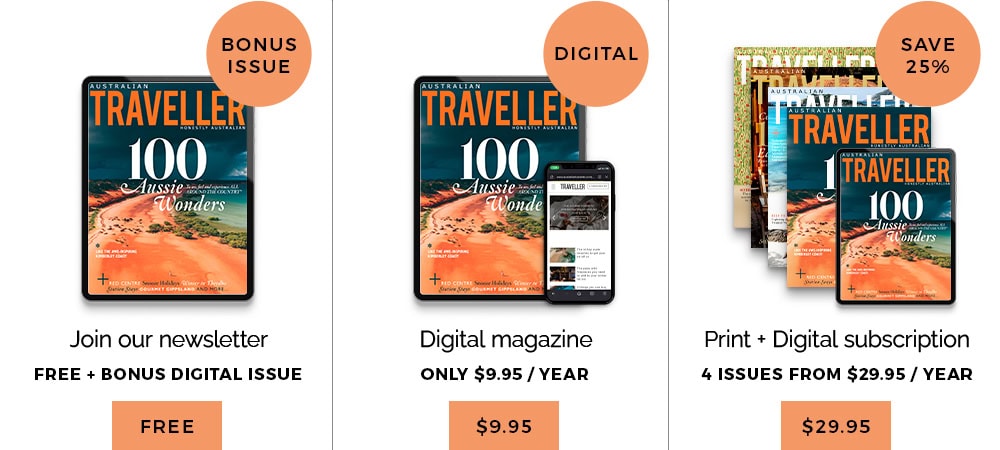
© Australian Traveller Media 2024. All rights reserved.
Your cart is empty

- 💰 EOFY SALE Up to 25% OFF 💰 Jackery's EOFY Sale 2024 💰 🤩 Solar Generator 1000 Pro - 25% OFF + Gifts! ✨ Solar Generator 500 - 20% OFF + Gifts! 💪 Solar Generator 2000 Plus - Up to $3,059 OFF 🎒 Solar Generator 300 Plus - 15% OFF
- Power Outage Guide Energy Solutions for Disasters in Australia How to Prepare & What to Do in A Power Outage Jackery's Role in Emergency Power & Community Support
- Beginner's Guide What is a Solar Generator How to Shop on Jackery AU Store (Step-by-step Guide) Product Compare (Specs Included) Choose Products by Scenario and Appliances
- About Jackery About Us Jackery Membership Blog News Events Jackery Life Jackery Stories
- Support Support Center User Guide FAQ How To Buy Shipping Policy Warranty & Return

Beginner's Guide to Travelling Australia in A Caravan

With this beginner's guide to travelling Australia in a caravan , , you can embark on an unforgettable experience. As you journey to Australia's vast landscapes and cultures, this guide will be your trusted companion, providing crucial suggestions and insights for novice and experienced caravan travellers. Whether planning a cross-country road trip or seeing the splendour of the Outback, this book will help you have a smooth and pleasant caravan journey.
This page has a lot of information specifically for individuals new to caravan travel in Australia. It covers the essentials, from route planning and campground setup to cultural nuances and must-see locations. We provide practical information and insider insights to ensure a successful and pleasurable caravan experience. You can also add a Jackery Solar Generator to your packing list to power outdoor appliances. Join us as we explore Australia's roads and byways, ensuring that your adventure is full of discovery and the thrill of the open road.
How Do You Plan Your Caravan Adventure in Australia ?
Are you considering travelling to Australia with a caravan , and what setup should you have? There are various aspects to consider when planning a trip around Australia. First, will you be travelling full-time? What is your budget? How do you prefer to camp? How many people, including pets, will accompany you on this journey?
A dependable, comfortable, well-maintained tow vehicle and caravan or camper trailer is the ideal foundation for a safe and successful adventure. There are numerous setup possibilities for road trips in Australia, and it ultimately comes down to choosing the best combination for you and your family. The following are the procedures for organising a caravan vacation in Australia.

Step 1: Choose Your Caravan
Travellers who wish to drive throughout Australia are more likely to consider buying a caravan rather than a motel. It's a natural choice, especially if you intend to take a major road trip across the Outback. But it's more complicated. When purchasing a caravan, you should consider where you want to travel, how long you intend to stay, whether you'll drive off-road or on highways, and whether you'll travel with your family. You should also check if the site you choose to park has caravan accommodations.
- Consider the size, layout, weight, and towing capacity.
- Decide if you want a new or old caravan and investigate respected brands.
- Inspect the caravan for structural integrity, amenities, and features that meet your requirements.
- Consider extra features like off-road capability, storage capacity, and warranty.
Once you've determined what you want to do with a caravan, you'll need to decide whether or not you can afford the caravan of your dreams. Can you acquire a new one or buy a used one instead? When deciding on a caravan, keep your expectations realistic.
When inspecting a caravan, pay particular attention to the water, power, and gas connections. If they are damaged or improperly fitted, they will constitute risks. Make careful to ask the seller about the caravan's history, mainly if it is being sold used and if everything is in good shape. There are numerous sorts of caravans to choose from, all of which would be great if you had a budget:
- Entry-Level Caravans are modest and have a fixed configuration, including a double bed, side dining area, small kitchen, and bathroom (not all entry-level caravans have one). This is suitable for novices and may be done on a tight budget.
- Family Caravans offer ample space for families, medium-sized parties, and lone travellers. Their typical arrangement comprises a retractable double bed, bunk beds, and a spacious eating space.
- Luxury Caravans offer a home's conveniences, including a spacious bedroom, kitchen, dining area, whole toilet, and entertainment system. This is ideal for tourists who want to experience 'glamping' (glamorous camping) amid the outdoors.
If you have a vehicle that can tow your caravan, double-check the maximum weight capacity before purchasing a caravan. Pickup trucks are ideal for towing any caravan. However, larger vehicles may perform better when carrying luxury caravans.
Step 2: Pack Essentials for Caravan
Depending on the area and duration, you will bring different stuff on each trip, but many objects will accompany you. Please list these necessities so you can leave home with them. It is a good idea to list the main meals you plan to consume while travelling. This permits you to acquire some dry products ahead of time and decreases the likelihood of bringing food you will not use.
Your caravan is a limited living space, so only bring what you need. Before packing anything, consider whether there is a smaller, lighter version. To save time on each journey, leave what you can in the caravan and keep a note of what you need in it so you know what's there. After you've finished packing, double-check that you've closed every drawer and cupboard door to keep the contents from flying out while you're going. The essential equipment for caravan travel in Australia is listed below.
The Jackery Solar Generators are ideal power sources for camping trips, allowing you to stay in remote areas without traditional power sources. The integrated solar panel provides sustainable and environmentally friendly power. This grid-independent feature expands your caravan options and encourages you to explore the natural beauty outside your designated campground.
Step 3: Plan Your Route
You may already have a list of places you wish to visit. Call it a bucket list or simply some favourites; whichever it is, there is enough to stay in Australia. The idea is to match your location with the appropriate time of year. Get that right early on, and you'll be off to a great start.
Australia has some clear and distinct weather trends. It needs to meet your expectations if you visit a great destination at the wrong time of year. You can be buffeted by winds, buried in the sand (white, yellow, red, or any hue in between), roasted by the sun, or whacked by rain. If you're in a caravan or camper trailer, make sure it can handle the worst weather - or have a plan for hot nights, freezing evenings, or washed-away days!
The northern section of Australia is best enjoyed during the dry season. This occurs from May to October every year. During the rainy season, many routes are closed, and you will experience sweltering heat and tremendous rainfall! Summer in Perth is hot, so most people move south to cooler weather - but come winter, watch how many people pile into their cars and drive north in quest of balmy days and sunshine as the rest of the country freezes.
If you wish to visit many areas in Australia with a caravan , list all of them first and then limit them down as you go. There are plenty of excellent destinations to stay, but you can only visit some of them. Also, beware of crowds! It's hardly fun for a lapping traveller to arrive alongside everyone else at a venue, experience, or lodging area. Consider school breaks, weekends, and public holidays when crowds may be present.
- Research attractions, potential destinations, and places of interest along the journey.
- Consider terrain, weather, and road accessibility.
- Make plans for fuel breaks, rest places, and overnight lodgings.
- Allow flexibility in your agenda to accommodate unforeseen detours or spontaneous experiences.
Step 4: Choose The Campsites
So, what are the camping options? Do you constantly have to pay for an expensive campsite? Not at all! There are three different camping options: the previously authorised rest places, state campgrounds, and regular campgrounds.
- Rest Area : This is the free option, as previously discussed. It's hardly more than a plain parking lot adjacent to the road (typically outside of cities) with no amenities. That means no toilet, so you must visit the bushes, which are not always present in the outback. But at least it's free!
- Campground : There are standard campgrounds available. Luxurious camping has everything you need: power , warm water, showers, a camp kitchen, and laundry facilities. We enjoy recharging ourselves on a regular camping. Showgrounds are a type of campground that is similar to these. They can be found in almost every town in Australia, including the smallest.
- State Campground : A state campground is usually more lavish than a rest area and requires a nominal fee. These are often basic campgrounds in national parks that offer some amenities. Most have a toilet and occasionally a modest (cold water) shower.
Jackery Solar Generators for Travelling Australia in A Caravan
A Jackery Solar Generator is a portable solar power device that converts sunlight to electricity and stores it in batteries for later use. Unlike standard gas-fired generators, solar generators run quietly, create no pollutants, and require no maintenance. The Jackery Solar Generator combines Jackery Solar Panels and a Portable Power Station that converts sunlight into power. This makes it ideal for charging outdoor appliances such as portable coolers, camping lighting, GPS, radios, and more while traveling through Australia in a caravan .

Jackery Solar Generator 2000 Pro
The Jackery Solar Generator 2000 Pro has an exceptional charging capacity of 2,160Wh. It can be charged in under 5.5 hours using 6* SolarSaga 100W solar panels or in only 2 hours using an AC power outlet. Tailored for camping experiences, particularly in locations like New South Wales where electrical outlets are sparse, it becomes an indispensable companion for charging equipment ranging from mini-fridges to phones and illumination.
The Jackery Explorer 2000 Pro portable power station is a dependable emergency backup power supply with a ten-year lifespan and twice-weekly use. Its durability is enhanced by features like heat dissipation and high-temperature protection, ensuring peak performance in various environments. The SolarSaga 100W solar panel's IP67 Waterproof Rating protects it from harsh and moist situations, making it durable and trustworthy.
With a single switch, you may experience the simplicity of endless power. The upgraded input and output display displays give crystal-clear data, including low battery and fault code indicators, providing a smooth and informed operation. The Jackery Solar Generator 2000 Pro combines cutting-edge technology with rugged dependability, providing abundant clean energy to power your travel.

Jackery Solar Generator 1000 Pro
With a sizeable 1002Wh capacity and 1000W output power, the Jackery Solar Generator 1000 Pro stands out for supplying dependable energy for various applications. Experience consistent power with a thousand charge cycles that support a full wall charge in just 1.8 hours. Increase your electricity generation by 25% with the addition of 2* SolarSaga 80W solar panels, making it an affordable option for travelling in Australia.
The foldable handle allows for more accessible storage and transit, making this tiny power source a great companion for camping trips. Benefit from its lightweight design and outstanding 1,000-charge cycle life, which ensures durability and longevity. The Jackery Solar Generator 1000 Pro is powered by a pure sine wave inverter, providing a continuous power source.
With several connectors, including two 1000W AC output ports, two USB A ports, and a DC vehicle port, the Jackery Explorer 1000 Pro power station transforms into a powerhouse for your camping equipment. Power up a portable fan, camping light, movie projector, and more with a 300W portable cooler lasting 2.7 hours or a 25W camping light lasting 32.1 hours. The Jackery Solar Generator 1000 Pro redefines portable power for outdoor excursions.

Tips for Travelling Australia in A Caravan
Travel l ing Australia in a caravan is a unique and adventurous way to experience the continent's different landscapes, wildlife, and attractions. Here are some suggestions to help you get the most out of your caravan adventure:
Plan Your Route Carefully:
- Research and plan your route, considering mileage, road conditions, and areas of interest.
- Consider the season, weather, and seasonal attractions when planning your schedule.
- Be adaptable and open to unforeseen detours or adjustments in your plan depending on local recommendations or discoveries.
Stay Connected : Use dependable communication equipment like mobile phones, satellite phones, or two-way radios. Stay informed and have a safer journey by researching local restrictions, road closures, and travel warnings for each stop. GPS navigation systems or offline maps can help you securely navigate isolated locations and unfamiliar terrain. Also, the Jackery Solar Generator helps to provide enough power for communication devices, so you never have to worry about losing contact with others.
Prepare for Remote Travel :
- Before departing on foreign travel, ensure you have enough food, water, fuel, and emergency supplies.
- Carry spare parts, tools, and equipment for essential car maintenance and repairs, especially if travelling in rural or isolated areas.
- Inform someone about your trip intentions and planned arrival hours, especially if you're visiting a region with limited or no cell phone coverage.
Explore Local Culture & Cuisine : Immerse yourself in Australia's rich cultural past and diversified food scene by trying local dishes, visiting markets, and attending cultural events. Connect with local communities, artisans, and indigenous cultures to learn about their traditions, history, and way of life. Buying locally manufactured products, souvenirs, and artisan crafts helps to support local businesses and communities.
Practice Responsible Camping : Adhere to campsite laws and regulations, such as noise restrictions, trash disposal guidelines, and campfire safety protocols. To reduce environmental impact, leave campgrounds cleaner than you found, dispose of rubbish correctly, and recycle. When camping, stick to specified places and avoid sensitive or restricted regions like national parks, protected reserves, or private land.
Stay Safe :
- Always prioritise safety by following traffic rules, speed restrictions, and driving conditions, especially on isolated or gravel roads.
- Be cautious of wildlife hazards like kangaroos and other animals crossing the road, and avoid a collision.
- Stay educated about potential threats such as bushfires, floods, and extreme weather events, and follow local authorities' warnings to guarantee your safety.
Following these suggestions and embracing the spirit of adventure, you can have an exciting caravan voyage through Australia's breathtaking landscapes, historic landmarks, and different cultures.
Top 3 Destinations for Travelling Australia in A Caravan
Although expensive flights and lengthy travel periods may dissuade some from visiting Australia and its South Pacific neighbours, bucket list locations such as the renowned Sydney Opera House and the Great Barrier Reef must be noticed. The following are the top three caravan locations in Australia .

1. Great Ocean Road, Victoria
Location : Along the southern coast of Victoria, Australia
When to Visit : Year-round, but spring and autumn offer mild weather and fewer tourists
Highlights : Breathtaking coastal scenery, Twelve Apostles, Great Otway National Park
Activities : Scenic drives, coastal walks, beachcombing, surfing, wildlife spotting
Accommodation : Caravan parks, campgrounds, beachside resorts
The Great Ocean Road is known for its breathtaking coastal views, craggy cliffs, and iconic rock formations like the Twelve Apostles. Visitors can take a picturesque drive down the coast, pausing at viewing locations to enjoy the panoramic views and take photos of the stunning environment. Outdoor enthusiasts can explore the Great Otway National Park, home to ancient rainforests, flowing waterfalls, and various species. The Great Ocean Road, with its various caravan parks, campgrounds, and coastal resorts, provides sufficient chances for caravan travellers to enjoy the beauty of Victoria's coastline.
2. Uluru-Kata Tjuta National Park, Northern Territory
Location : Red Centre of Australia, near the town of Yulara
When to Visit : Best during the cooler months from April to September
Highlights : Uluru (Ayers Rock), Kata Tjuta (The Olgas), indigenous culture
Activities : Sunrise and sunset viewing, guided walks, indigenous cultural experiences
Accommodation : Caravan parks, campsites, luxury eco-resorts
The Uluru-Kata Tjuta National Park is among the most famous landmarks in Australia and a place recognised by UNESCO as a World Heritage place. Travellers can camp in the national park or adjacent caravan parks and campsites in Yulara. Witnessing Uluru's changing colours at sunrise and sunset and discovering Kata Tjuta's ancient rock formations are must-do experiences. Guided hikes, cultural performances, and art exhibitions allow visitors to learn about indigenous culture and traditions.
3. The Kimberley, Western Australia
Location : Northwestern region of Western Australia
When to Visit : Dry season from April to October
Highlights : Spectacular gorges, waterfalls, indigenous rock art, Kimberley coastline
Activities : Scenic drives, bushwalking, fishing, boating, helicopter tours
Accommodation : Caravan parks, bush camps, station stays, luxury wilderness lodges
Stunning landscapes and ancient rock formations characterise the remote and harsh Kimberley region of Western Australia. Caravan travellers can visit the region's beautiful gorges, such as Windjana Gorge, Mitchell Falls, and Bell Gorge, which provide bushwalking, swimming, and wildlife viewing possibilities. The Kimberley coastline has scenic beaches, coral reefs, and hidden islands, making it an excellent location for fishing, boating, and snorkelling excursions.
Travelling Australia in A Caravan FAQs
The following are the most frequently asked questions about travelling Australia in a caravan :
1. What size of solar generator do I need for my caravan trip in Australia?
To choose the right size solar generator , examine your energy usage, solar panel efficiency, battery storage capacity, and your equipment's specific requirements. Selecting the appropriate size solar generator entails balancing energy requirements, installation efficiency, mobility, and cost. Depending on their energy needs, customers can choose a Jackery Solar Generator with capacities ranging from 12 kWh to 300Wh for a portable solar system. The formula for calculating the operational hours of Jackery Solar Generator-powered appliances is as follows:
Working Hours (H) = [Jackery Solar Generator Capacity (Wh)*0.85] / Appliance ' s Wattage (W)
The Jackery Solar Generator 2000 Pro can run a 100-watt ceiling fan for 18.36 hours (2160Wh x 0.85/100). This formula assists in determining the hours during which appliances can function.
2. How much does it cost to travel to Australia in a caravan?
The cost of travelling around Australia in a caravan varies according to travel duration, route chosen, lodging preferences, and lifestyle choices. Consider fuel, camping fees, meals, maintenance, and entertainment expenses. On average, travellers should expect to pay between $50 to $150 per day on an essential caravan vacation, with costs considerably higher for longer excursions or premium hotels.

3. How long does it take to travel around Australia in a caravan?
The length of a caravan trip around Australia varies substantially based on the route, travel rate, and sightseeing interests. Some visitors may finish the voyage in as short as three to six months, while others may need a year or more to see all the sights and attractions along the way. It's critical to carefully arrange the schedule, leaving plenty of time for sightseeing, rest stops, and unexpected delays.
Final Thoughts
As we end our beginner's guide to caravan travel in Australia , it's evident that the open road offers limitless options and adventures. Whether you're a first-time caravan traveller or an experienced explorer, Australia has a rich tapestry of landscapes, cultures, and experiences ready to be discovered. With practical counsel, insider recommendations, and a Jackery Solar Generator , you'll be well-equipped to navigate this vast continent's highways and byways!

- For orders over No minimum purchase required
- Valid time:
- Only usable on site
- Check for details via email.
- Paste the code and the corresponding email address at checkout to claim it

10 Signs You Will Be Able To Travel Australia In A Caravan
This post may contain compensated links. For more information, read our disclaimer here .
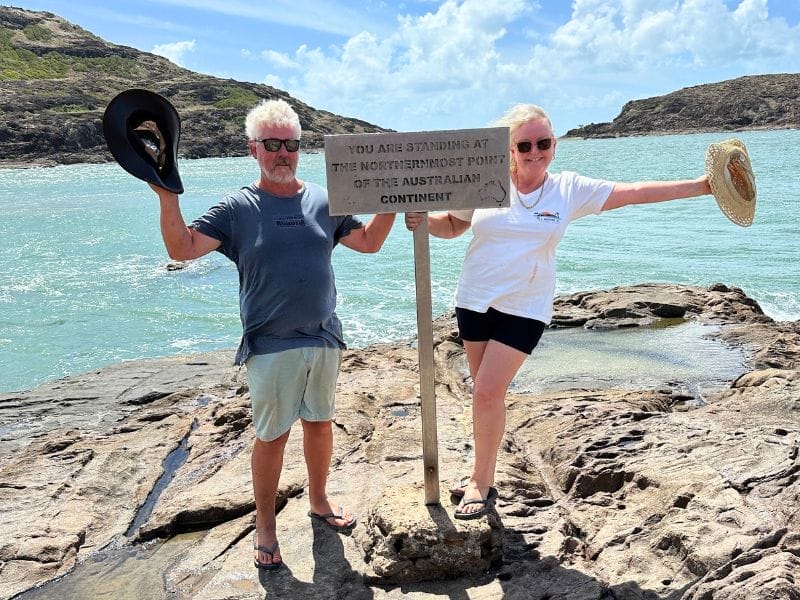
Do you want to know if you are cut out to travel Australia in a caravan?
This post walks you through the top 10 signs that indicate you will love life on the road.
Travel Australia In A Caravan
Table of Contents
When we first decided to travel Australia in a caravan, many people asked us if we thought we could manage in such a small space over a long time.
Straight away, we said, ‘Yes, we’ll be fine!’ ‘But what about spending all that time together? Won’t you get sick of each other?’ Again, our answer was, ‘We’ll be fine.’ We do have a great relationship.
We know we’ll be okay for many reasons, and if you are of a similar mindset, you’ll be OK, too. So here is a list of 10 signs you will be able to Travel Australia in a Caravan!
1. You Are Adventurous
Yes, you’ll need to be adventurous for this plan to work. We both love visiting new places, learning about their history, discovering new landscapes, and meeting other people.
We also love getting off the beaten track and visiting smaller, out-of-the-way places.
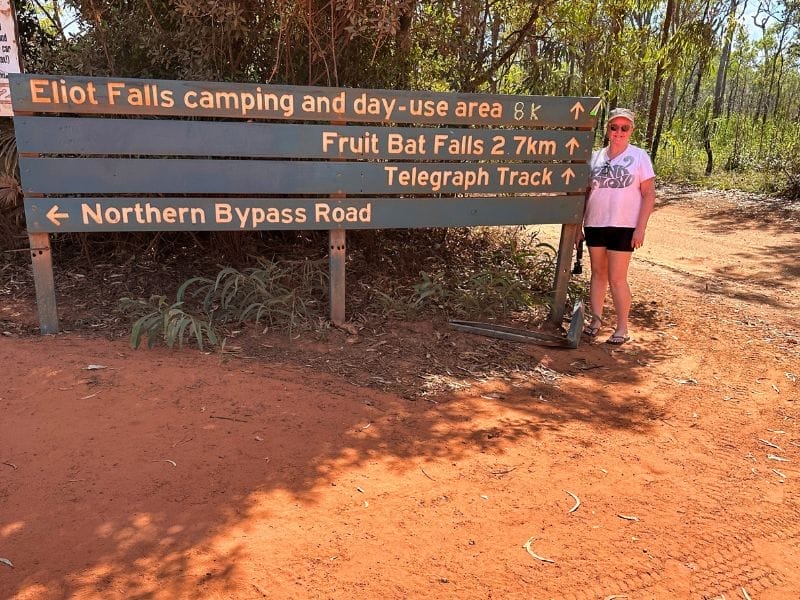
2. You Are Organised
This is a big one for me. I need to be organised for constant travel to work. This is not so much about planning as it is about what I need to take and finding a home for everything. A caravan is a massive benefit for me as so much storage available.
I like to find what I need immediately without having to unpack the entire back of the car or rummage through all the cupboards in the van. This is where a minimalist approach to packing comes in handy, too!
Although we haven’t had the van for very long, I have already found set places for a lot of our stuff.

3. You Are Open-Minded
To truly enjoy this adventure, you must be open to new ways of seeing and doing things.
When travelling Australia, you will meet people from all different walks of life and cultural backgrounds. You need to meet all these new people or face new experiences with an open mind. Only then I think, you will have a truly unique experience.
4. You Are Budget Conscious
Unfortunately, travelling anywhere is not cheap, and Australia is no exception. But being budget-conscious can help you stretch your precious dollars a little further.
Save money on food by buying fruit or vegetables from roadside stalls and use up all your leftovers. Get creative with your meals. Where possible, opt for free or low-cost camps and caravan parks and look for free or low-cost experiences in the places you visit.

5. You Are Easy-Going
For me, having an easygoing personality means that not much phases you. This will help a lot when little things don’t go to plan. Kev is a very easy-going bloke until something significant happens, and he mostly takes everything in his stride.
I consider myself easygoing, too, unless I’m under pressure. Travelling full-time has its ups and downs, but I wouldn’t say I feel under pressure at any time.
6. You Are Self-sufficient
Here, I’m not just talking about having the correct solar set-up or extra water tanks, but more in a personal capacity.
If you rely heavily on perhaps family members to help you when times are tough, like when you or one of the kids are sick, you will need to adapt for life on the road, as that support will no longer be available.
If times are tough, you will need to be able to depend on each other.
7. You Get On Well With Each Other
This is a big one! If you are going to be travelling for an extended period of time, you really do need to get along well.
Yes, I know there will be times when a crossword or two will be exchanged—that is just life. But life on the road will be much easier if you get along well.
Kev and I get along well and share the same basic values, which I believe helps. In over 15 years of travelling together, there has hardly ever been any conflict.

8. You Are A Handy Person
Maintaining your vehicle and caravan comes in very handy. Not only could it save you a few dollars, but it might also help you out of a tricky situation.
Luckily, Kev is very clever. He grew up on a farm and has had businesses for most of his working life. He’s had years of experience fixing things and improvising, so there really isn’t much he can’t do.
Of course, we use someone qualified when needed, but fixing things as they arise is great, especially if you happen to be out in the middle of nowhere.

9. You Are Adaptable And Flexible
If you don’t adapt to change very easily you may struggle with this lifestyle. When you travel, you are constantly moving to new locations and environments, being adaptable will make those changes more straightforward to cope with.
If you plan to work along the way, you might have to adapt your skills to suit a new job.
10. You Are Happy Living With Less
This is the greatest benefit of travelling Australia in a caravan. Over the last couple of years, I have been culling our possessions in preparation for this trip. I have learnt that I can manage with just enough plates and cutlery for two people.
I have found that I am happy to borrow books from the library instead of buying them and that I can enjoy a simple meal at home just as much, if not more, than going out to an expensive restaurant.
Visiting somewhere beautiful and taking many photos to look back on rather than buying souvenirs is much more satisfying. Plus, photos don’t need dusting!
Are you any of these things? Would you be able to travel Australia in a caravan?

You May Also Like:

10 thoughts on “10 Signs You Will Be Able To Travel Australia In A Caravan”
Great article. We are heading off in a months time for about 5 months. We normally travel on our own but this time travelling with another couple. We are all very compatible, and enjoy a challenge. Planning is a must especially heading West. Nearly every popular spot is fully booked out so it is essential to have backup plans in place.
Enjoy your travels!
I loved your article- but would love to add one point: To financially plan your escape from the big smoke. Either downsize and prepare house for renting to give you money to live on. Or sell up everything and invest to have an income. Or mitigate your debt, live on the pension and set a budget based on your expectations & comfort zone. Or find work, live from house/farm sit or free camp as much as possible for longer All relevant to each person taking up the challenge. Have 2x $5k fee free credit cards for unforeseen emergencies, too Be financially prepared and plan for the future as well as the present.
All great points Sue and all covered by us in many of our other posts.
I must admit I had serious reservations about setting off in a caravan for 7 months prior to our trip in 2014. However it did bring out the best in us as a couple (even though there were times where we felt like murdering one another!) I think out of all these points being adventurous is a biggie. You have to have a great sense of adventure and want to see all that this wonderful country of ours has to offer. #TeamLovinLife
I agree. You both have to want the same thing from the trip too!
Hubby and I talk about caravanning around NZ sometime and I think we fulfill your suggested requirements! It’s obvious that you know what you are talking about. Thanks for the list.
You’re welcome. We would love to caravan or motor home around New Zealand one day too. Maybe when we have done Australia a couple of times.
Great post – its certainly a big change leaving the big smoke and heading off with what’s essentially a little shed in tow. Some people love it, and some people can’t hack it. It’s a big country, and there’s lots to see!
We love it! Life just seems so much more relaxed when we are in the van.Can’t wait for our full time adventure to roll around.
Leave a comment Cancel reply
subscribe to our newsletter
This site uses Akismet to reduce spam. Learn how your comment data is processed .
Facebook Community
Privacy Policy
Disclosure Policy
Work With Us

All Destinations , Australasia , Australia , Road Trip Itineraries
Road trip in australia: an itinerary for the whole country.
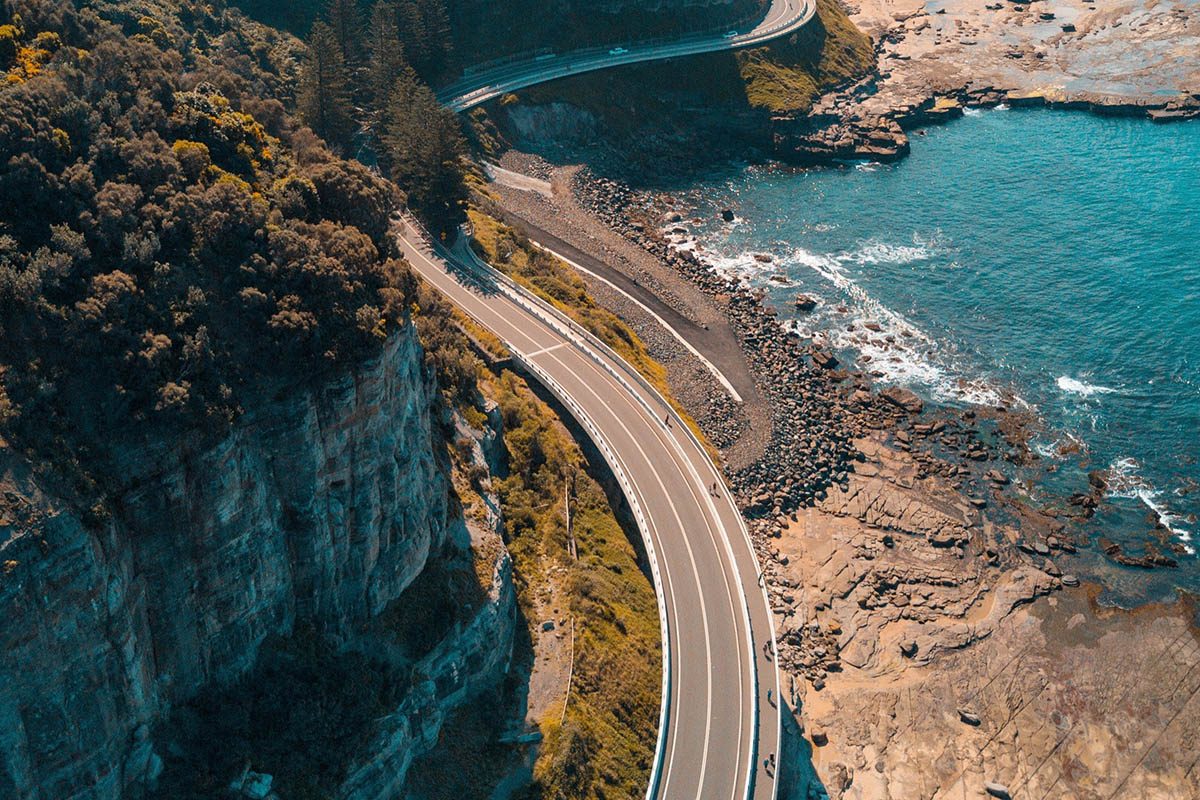
G’day mates, I’m here to take you on a 6 month long road trip in Australia.
Well, I’m not actually taking you (although maybe I’ll get the chance to do guided road trips around this beautiful country at some point, watch this space!), but, with this 6 month itinerary for the ultimate Australian road trip, you’ll know exactly where to go and when .
This Australia road trip planner is customizable depending on your wishes, but I’ve added suggested lengths of times in each location. I
’m recommending at least six months to orbit Australia (this Australia road trip itinerary takes you into the centre as well).
Australia is big and some days will consist of just driving.
Also, this itinerary doesn’t include for rest and admin days – so do take that into account when you plan your road trip in Australia.
I’ve also got dozens of more detailed itineraries for different segments of the road trip, as well as city and region itineraries for different parts of the country.
You can click through to them using the links below – all links open in a new window.
So wherever you’re visiting on this island, and whether you’re backpacking in Australia or on a road trip with toddlers , you can use this 6 month itinerary to plan your ultimate Australia road trip.
Shall we begin?
When to take the road trip in Australia?

I recommend that you begin the road trip in Melbourne in March or April.
Of course, you don’t have to begin at this time, or even in Melbourne. Most travellers fly into Melbourne or Sydney, and as Melbourne is the most temperamental weather – wise, I thought it would be nice to give you two chances to see it in its glory.
Plus, Tasmania, which I’ve put on the end of this road trip Australia itinerary, is accessible from Melbourne.
I’d recommend starting your road trip from Melbourne in March or April, as this should give you the best weather everywhere – it’ll be a bit cold in the south at first, but it will quickly warm up.
Then once you’ve returned to Melbourne, you’ll have a summer there!
Of course, if you want to start in Darwin (which is the cheapest place to fly into from Asia), then you could do this loop starting in September or October, skipping the rainy season in the north and arriving back there for the high season.
Bear in mind that some parts of the north, like Kakadu and the Gibb River Road, are inaccessible during the rainy season.
The south is still great during the winter, but may be a bit chilly and it is more rainy. Some rough outback roads all over the country can be closed when it rains.
What to pack for the Australia road trip

I’m going to be writing a full road trip Australia packing list very soon, but here’s some staples you’re not going to want to forget:
- A car or van (just in case you forget!). If you want a car like my Subaru, you can find deals on a Subaru model on KBB, BCP, Edmunds and other huge sites. For my budget, I couldn’t have asked for a better car in Australia. It’s a great vehicle for road tripping, with AWD capacities and a fantastic reputation for reliability – actually, its Outback model is on the Consumer Reports’s best road trip vehicle lists!
- High quality tent if you’re not sleeping in your car/ van
- High quality sleeping bag suitable for both tropical and temperate climates
- Mattress – a blow up, camping mat or full on double inflatable mattress (you might want to opt for the latter if you’re camping for six months).
- An esky – that’s Australian for coolbox, by the way – or a cooler bag .
- A camping stove
- Gas for said stove
- Pots and pans
- High quality torches
- Coolant, oil, jump leads, and a spare fuel tank for the car
- Ask for some of these gifts for campers for Christmas as some extras!
- If you’re planning on doing some serious off-roading and have a 4×4 (only do off-roading in a 4×4!) You might also want some quality 4×4 accessories. Check out Lifestyle 4x4s range here.
If you haven’t left your home country yet, check out my what to pack for Australia list to check you’ve got all of the essentials covered.
Where to stay during your road trip around Australia

I’m presuming you’ll be camping around most of Australia – download the app WikiCamps to help you find free and paid campsites, and check out my free camping in Australia post to get the basics.
In places where campsites, free or paid, aren’t readily available, I’ve recommended some hostels and hotels.
You can also of course use Airbnb (click here for money off your first booking) and Couchsurfing, depending on your travelling style.
Road Trip Australia Itinerary for 6 Months on the Road
Melbourne: 3 days.
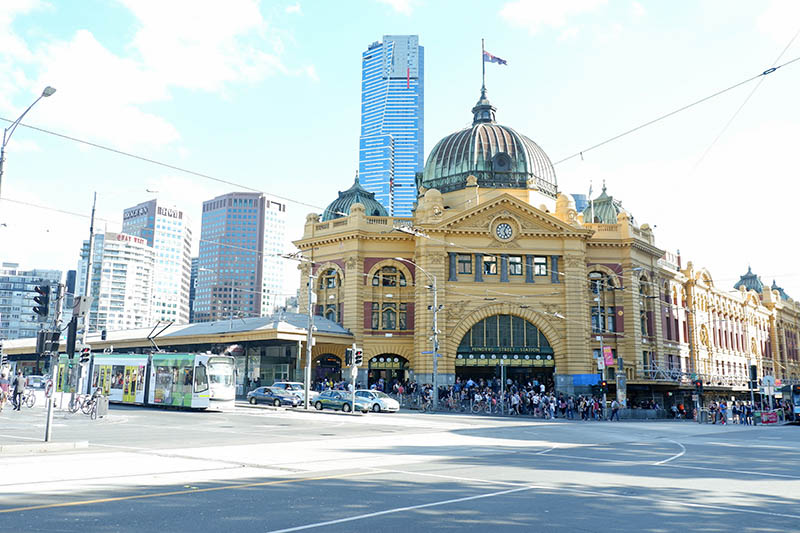
There are so many things to do in Melbourne; it’s been voted the world’s most liveable city time and time again for a reason.
From the wealth of museums to the amazing coffee, to cultural attractions like the AMCI and the Victoria Art Gallery, to the many vintage stores, to the beautiful library, you certainly won’t get bored during your time here!
You might not quite have seven days in the city, but this Melbourne itinerary will help you get to grips with the place.
Oh, and are you conscious of not spending too much at your first stop? I got ya! I had an erm… interesting time in Melbourne where I only had about $14 to my name.
Check out my tips for visiting Melbourne on a budget here.
There aren’t many places to free camp near Melbourne – I stayed at Urban Central Hostel, which is decent (although no free parking). You can book in by clicking here .
Victoria Hotel Backpackers is 5km from the city centre, but does have free parking. Click here to book .
Want to stay somewhere a bit more upscale? The Novotel Melbourne is a good option, close to the centre and with free parking. Click here for rates and to reserve .
Melbourne to Sydney: 1 week

The Melbourne to Sydney road trip is one that’s well-trodden with travelers, but it still isn’t hard to find somewhere that’s a little off the beaten path.
Highlights include Wilson’s Promontory National Park , Lakes Entrance , Eden , camping in a NSW state forest and Jervis Bay .
Once you reach Jervis Bay, if you want, you can take a detour inland to Canberra , the nation’s capital and to the beautiful Blue Mountains National Park – a must-see about 3 hours west of Sydney.
Sydney: 3 days
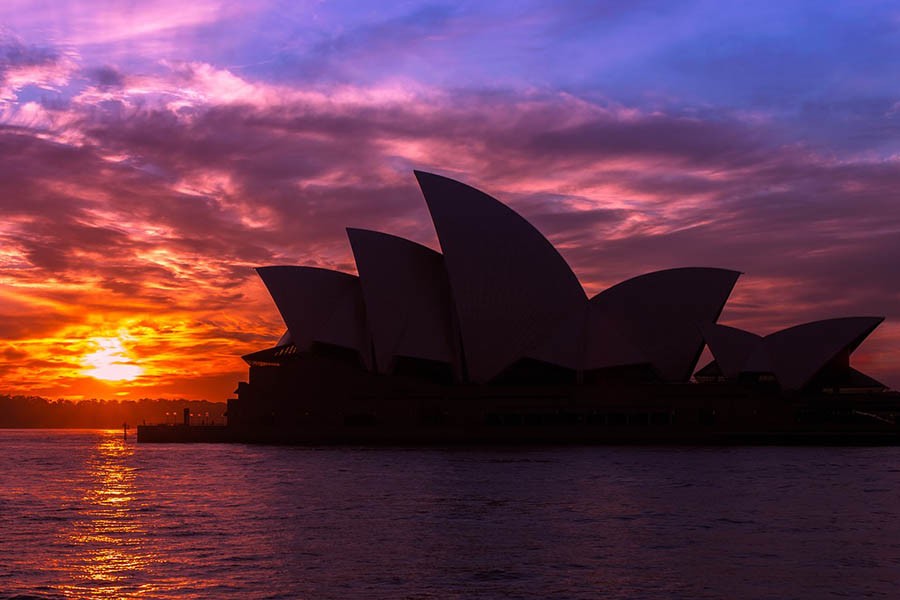
Sydney’s the most famous city of Australia, and one that all tourists want to visit, but there’s more here than just an opera house. Once you’ve seen the crowning glory from a few different angles – from Darling Harbour, Mrs Macquaries Seat and of course, up close are my favourites – check out some of the other things to do in Sydney.
It’s famous for its beaches of course; Bondi, Glebe and Manly are firm favourites. Click here for my three days in Sydney itinerary. There are some really great hostels in Sydney – although they’re bladdy expensive.
Bounce is really well facilitated, but it’ll set you back around $40 for a dorm room. I also really like YHA Railway Square, where you can stay in dorms in train cabins! Click here to book .
If you want free parking, you’ll need to stay a bit further out. I’ve also stayed in Cambridge Lodge Budget Hostel which is near Newtown – it has cheap dorm rates (for Sydney) and free parking. Click here to book .
If you’re looking for a hotel, Veriu Broadway is in a good location and has free parking. Click here to book .
Sydney to Brisbane: 1 week

The Sydney to Brisbane road trip takes in some amazing nature spots, as well as my favourite place in the world, Byron Bay.
Driving north, you’ll reach Newcastle fun things to do in this town here (check out some ) and Port Macquarie before turning inland towards the Waterfall Way .
This hinterland is beautiful, so give yourself a bit of time to properly absorb it all.
Then head out toward Coffs Harbour and up to Yamba , a chill beach town with some great natural spots.
Then it’s time for Byron Bay and its surrounds – check out these great things to do in Bryon Bay and don’t forget to see its hinterland.
Then you’ll cross into Queensland – the Gold Coast is your first point of call, with Surfer’s Paradise being a place to let your hair down before relaxing on some of the other beaches!
Finally, you’ll arrive into the capital of the sunshine state, Brisbane .
Brisbane: 3 days
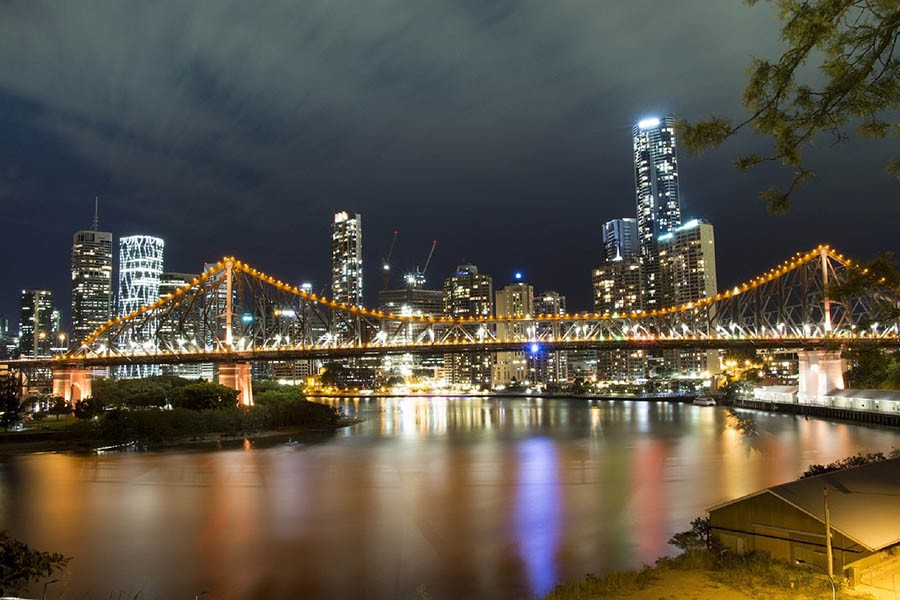
Brisbane is often an overlooked Australian city, but it’s well worthy of a spot on your road trip around Australia. It’s a chilled out, breathable place, with lots of attractions to pass a few days in.
Check out the Brisbane Botanical Garden, the Brisbane Museum, the City Beach and the sunset from Kangaroo Point Cliffs.
If you’re already missing nature, head to Stradbroke Island which is very close to the centre and feasible as a day or overnight trip. You could even go camping at Adder Rock if you don’t want to return to the city for accommodation!
City Backpackers HQ is my preferred Brisbane hostel – and it has free parking! It’s reasonably priced and has a bar, a pool, a terrace with city views and $10 nightly dinner deals. Click here to book .
For a hotel option, Ibis Styles is a great option in the middle of the city. Click here for rates and book today .
Brisbane to Cairns: 3 weeks

The most popular one of all the Australian road trips, Brisbane to Cairns is the one where you’ll see the most travellers – and for good reason.
There are tons of amazing spots here, and it’s also the perfect spot to make some friends!
Highlights include Noosa National Park , Fraser Island , surfing at Agnes Water , the Aboriginal cultural centre at Rockhampton , the Whitsunday Islands , Magnetic Island , diving or snorkeling the Great Barrier Reef , and the beautiful Daintree Rainforest .
Cairns is another place you’ll probably be wanting to stay in a hostel – all of the free campsites are quite far out.
Gilligans has free parking, and the rest – it’s a really well facilitated place, with lots going on, but is only for those who are dedicated to partying!
If you want somewhere a bit more chilled, Cairns City Backpackers has free parking as well and has a calm courtyard and good atmosphere. It’s a 15 – 20 minute walk from the centre. Click here for rates and book today .
Want a hotel? Double Tree Hilton Cairns is a great place to relax and unwind! Click here for rates and book today .
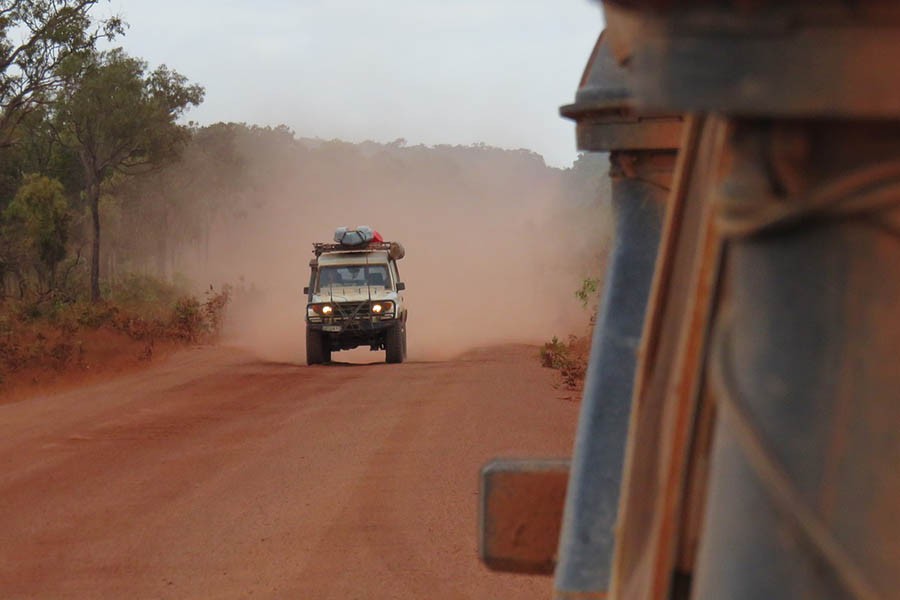
You’ll need a four-wheel drive for this segment of the road trip; and it’s somewhere really off the beaten track. Think rainforest, crocodiles, rugged tracks and beautiful beaches, eventually making it to the tip of Australia.
Accommodation on the way will be free camping, and there’s only the odd roadhouse or pub – this is proper off the grid living.
Cape York was a spot I didn’t make it to (and I can’t wait to return to Australia and go!) – here’s a great 7 day itinerary for the trip to the tip .
Cape York to Uluru: 1 week
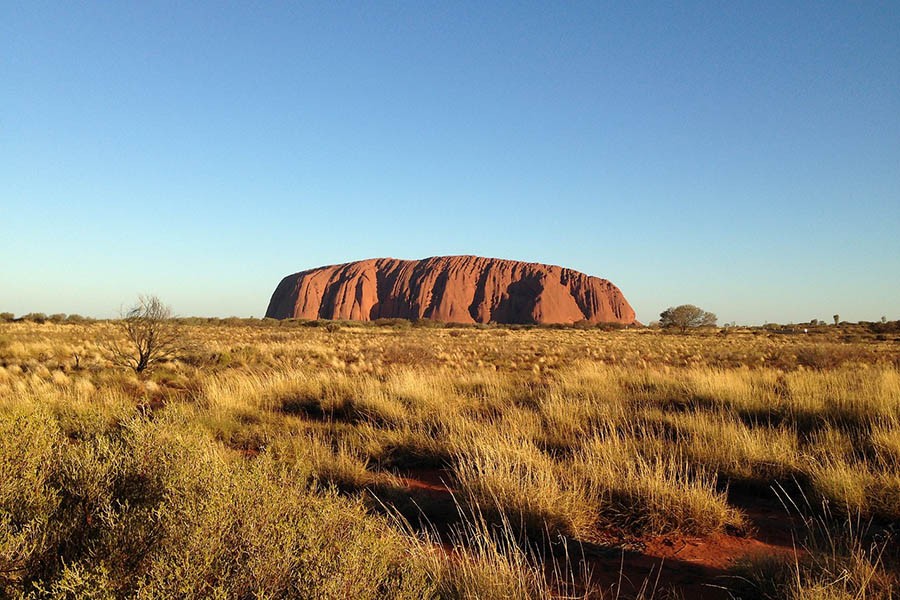
From the base of Cape York, rejoin the highway and head westwards, towards the Northern Territory border .
You’ll see a really distinct landscape here as the terrain changes, and experience towns like Karumba and Burketown (if you take highway one) or Charters Towers and Mount Isa (if you take the A6).
Either way, it’s a lot of country towns, desolate scenery and hot temperatures! Once you reach the Stuart Highway, turn down and head towards your ultimate destination: Uluru .
You’ll be able to see the attractions on the Stuart Highway on the way back up, but by all means stop at them on the way down as well!
Uluru is an unmissable place in Australia and at least 2 full days should be spent here.
Take some time to walk around the base and see the rock art, do some of the walks in the area to the gorges, and see Katja Tutja on the Valley of the Winds walk.
Uluru to Darwin: 2 weeks
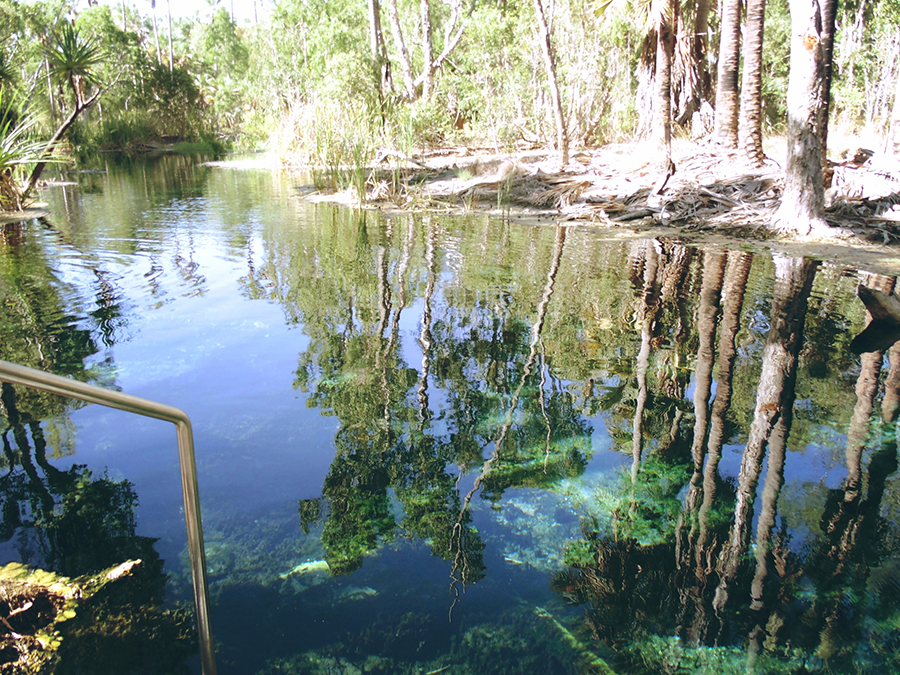
After some time at beautiful Uluru, make your way north. If you have a 4WD or an AWD (or you can do it in a 2WD if you’re daring – do double check road conditions before you head out though!) take on the Red Centre Way .
This is a loop that takes you to King’s Canyon and then to Alice Springs the back way.
You’ll get to check out the West McDonnell Ranges , which are really spectacular, and drive along rough, outback roads. You might see wild ponies and camels!
Then head to Alice Springs for a couple of nights.
Next, head north to Tennant Creek , stopping in Wycliffe Well – the UFO capital of Australia – and at the Devil’s Marbles . You’re approaching the top end now; after Tennant Creek spend a night at Daly Waters , a fantastic pub and campground.
Mataranka has some beautiful springs and sweltering Katherine is your next stop, with the Nitmiluk National Park . Then it’s on to Kakadu National Park and finally, to Darwin .
Darwin: 3 days
I love and hate Darwin at the same time.
It’s a great place to let your hair down and party, if that’s your scene – but the backpacker crowd is typically pretty OTT.
There are some fun things to do in Darwin , however – the Military Museum is a must, as is the Art Gallery and Museum of the Northern Territory.
If you have the funds, a day trip to the Tiwi Islands is a must-do as well.
Plus there’s Charles Darwin National Park and the lagoon which is perfect for a dip on a sweltering Darwin day.
Darwin hostels are… interesting. If you’re there to party and don’t mind sacrificing on sleep and erm a certain standard of cleanliness, Youth Shack is an option – I found the dorms and bathrooms not the cleanest, but there is a really nice pool area. (Have I sold it? Click here if you want to book after my rave review 😉 )
Melaleuca has higher cleanliness, but is even more of a party place (if possible!). Click here for more information .
If you want somewhere chill on a budget in Darwin, I’d recommend staying at a campsite out of the city, finding somewhere on Airbnb – use this link for $44 off your first booking – or Couchsurfing .
I’ve done all of these in Darwin!
The Argus Hotel is modern, comfortable and clean and has a pool and on-site restaurant. Click here for rates and to book .
Darwin to Broome (via the Gibb River Road): 2 weeks
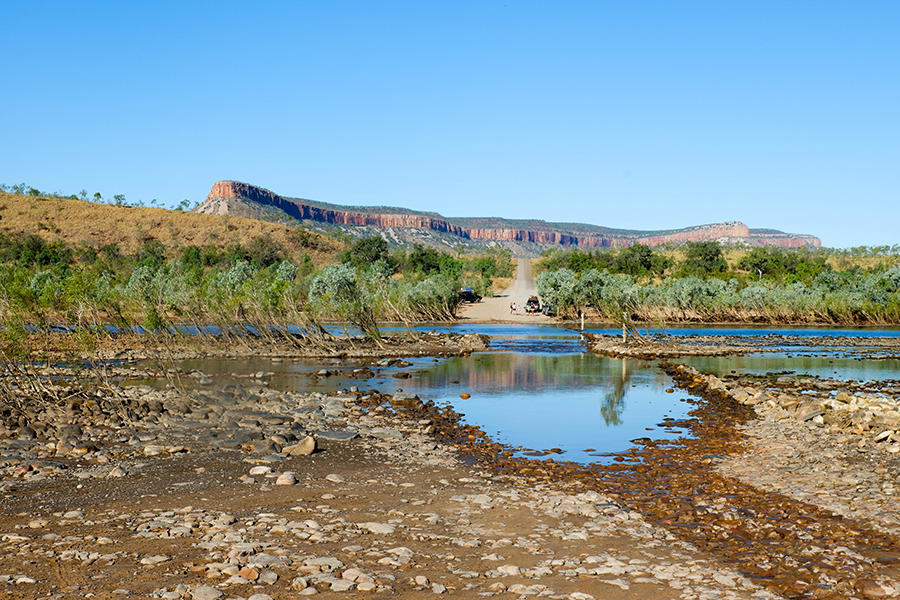
Heading south, your first stop should be Litchfield National Park .
I don’t find it as breathtaking as Kakadu, but it’s worth the stop.
Then head west, towards the border with Western Australia. It’s a long old drive, but once you’ve crossed it, head into Kununurra and check out some of the town’s attractions.
Then it’s time for Lake Argyle – this beautiful spot is perfect for kicking back in for a couple of days. Make sure you stay in the Lake Argyle campsite and enjoy its amazing infinity pool!
If you have a 4WD or AWD (I did it in an AWD, much to a lot of people’s disbelief!), take on the Gibb River Road .
This is my favourite part of Australia – 660 kilometres of gorges, waterfalls, secluded campsites and unmissable nature.
You’ll get off the road at Derby, from which it is a 2-hour drive to Broome.
Broome to Perth: 3 weeks
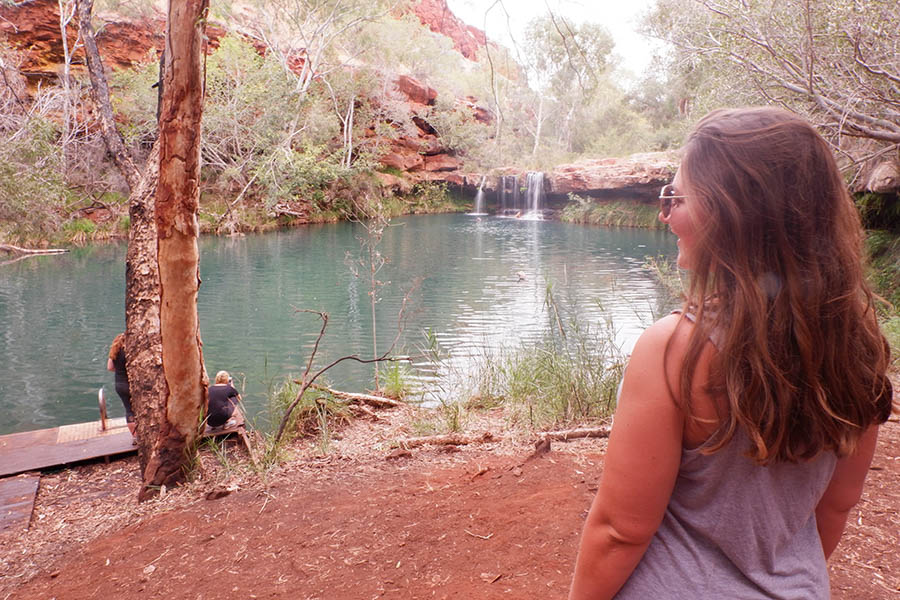
Spend a few days recharging in beautiful Broome , making sure you don’t miss a sunset!
If you’re there during Staircase to the Moon, it’s well worth checking out.
Gantheaume Point is amazing for dinosaur footprints and cliff jumping, and if you have a 4WD Cape Leveque is a great spot to head up to.
Broome town centre has some interesting attractions which nods to its Indigenous heritage and history as a pearling town. If you’re wanting to stay in the heart of Broome or Cable Beach, you’ll need to pay for accommodation.
I spent a month at Cable Beach Backpackers, which is a small hostel with a really nice atmosphere. Click here for more information and to book .
If you want to stay in Broome town Kimberley Klub YHA is a good option. Click here for rates and book today .
For somewhere a bit more private, try Broome Vacation Village. Click here for more information and to book .
Once you hit the road again, your first stop will be 80 Mile Beach and then Port Hedland .
From Port, you can head southwards to Karijini National Park – one of the best in Australia.
Then head out to the west coast to Exmouth and the Ningaloo Reef .
If it is the right time of year, you can go snorkeling with whale sharks here; a bucket list experience.
Diving at the Navy Pier is also incredible. From Exmouth, head south to the country town of Canarvon and then Shark Bay .
Going south more will take you to Kalbarri National Park , Geraldton and then the Coral Coast .
The Indian Ocean Drive here is incredible, as you drive right next to the sea. The Pinnacles, Lancelin and New Norcia round off your west coast itinerary before arriving in Perth.
Perth: 4 days
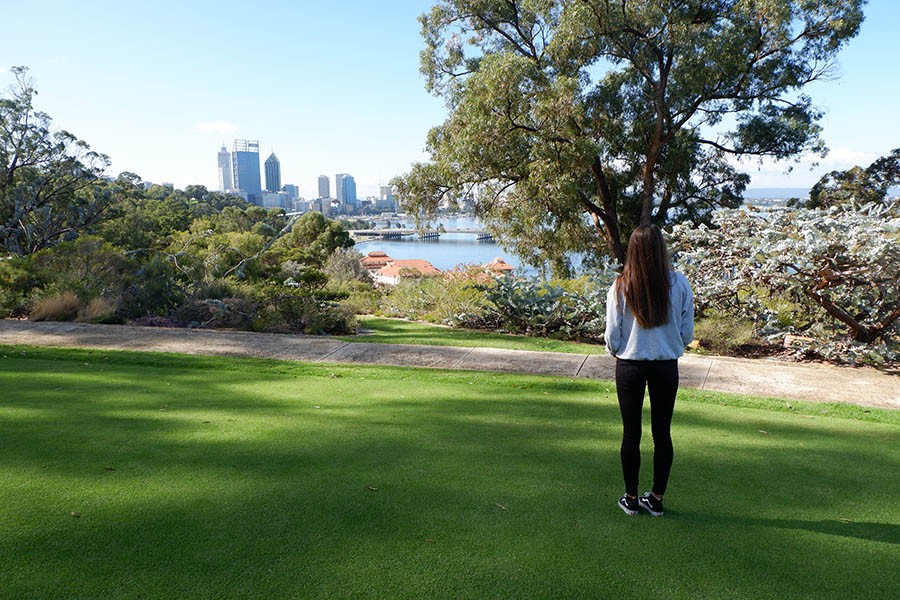
Perth is my favourite Australian city .
I love the spaciousness, the blue skies, the copious amounts of water. Spend a day in the CBD, seeing the attractions there like Elizabeth Quay and King’s Park.
Day two should be spent in funky Fremantle, a hip suburb with lots of attractions .
On day three, head to the Perth Hills to see another side of the city.
Finally, take a ferry over to Rottnest Island for a slice of island livin’. Billabong Backpackers in Perth offers free parking and also has a pool, a large common area and free breakfast. Click here for more information and to book .
If you’re wanting to stay in Fremantle, the Old Fire Station is the one – check out my review here and book using this link .
OFS does have parking but it’s kind of expensive – I used to park at South Beach and take the free CAT bus there.
For a hotel option, Tribe Perth is clean, contemporary and has free parking. Click here for more information and to book .
Perth to Esperance: 1 week
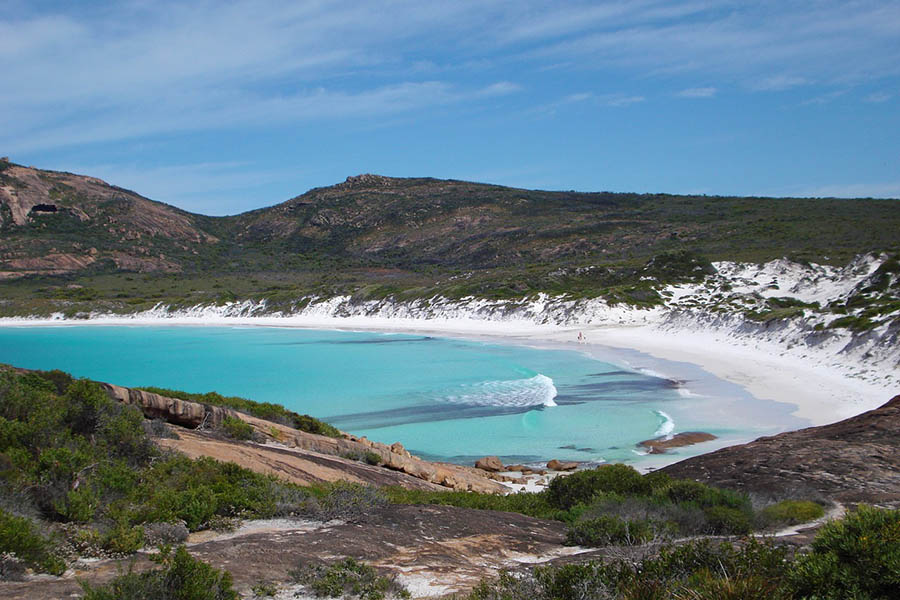
Once you’ve had your fill of Perth, head back down south (you could stop back into Freo on the way down, I wouldn’t blame you!) toward Margaret River .
This is a beautiful area where you could easily spend a few days. Next on your trip is the karri forests of Pemberton and swing by D’entrecasteaux national park .
There are some amazing beaches around Denmark and Albany , as well as some intriguing natural attractions. Then head to Fitzgerald River National Park and check out the unique biosphere here.
After, it’s time for Esperance , which has a picturesque ocean drive. Head to Cape le Grand National Park after, which has famous white sand beaches and lots of kangaroos.
If you have a 4WD, Cape Arid National Park is worth a visit too, before you head back to Esperance and start the drive north to the Nullarbor Plain.
The Nullarbor: 3 days

The Nullarbor Plain is a place of mystery; it’s a long, arid stretch of road with not much at all to see. But it’s really beautiful, and the feeling of being so in the middle of nowhere is unbeatable.
Take three days to drive it, as you’ll want to take it in properly and avoid driver fatigue. Highlights include Australia’s longest straight road, various quirky road houses and the beautiful Great Australian Bight .
You can free camp near here and watch the sunrise in the morning – it’s a magical experience. At the end of the Nullarbor, the seaside towns of Ceduna and Streaky Bay are worth popping into.
The Eyre Peninsula: 2 days
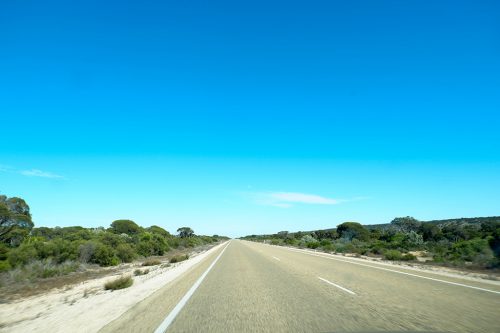
The Eyre Peninsula juts down at the bottom of South Australia, and is a great destination for 4WDing, beautiful beaches and wild camping.
The terrain varies from what you’ve just experienced on the Nullarbor, and there are a few small towns that are worth checking out around the peninsula.
Port Augusta to Coober Pedy: 4 days
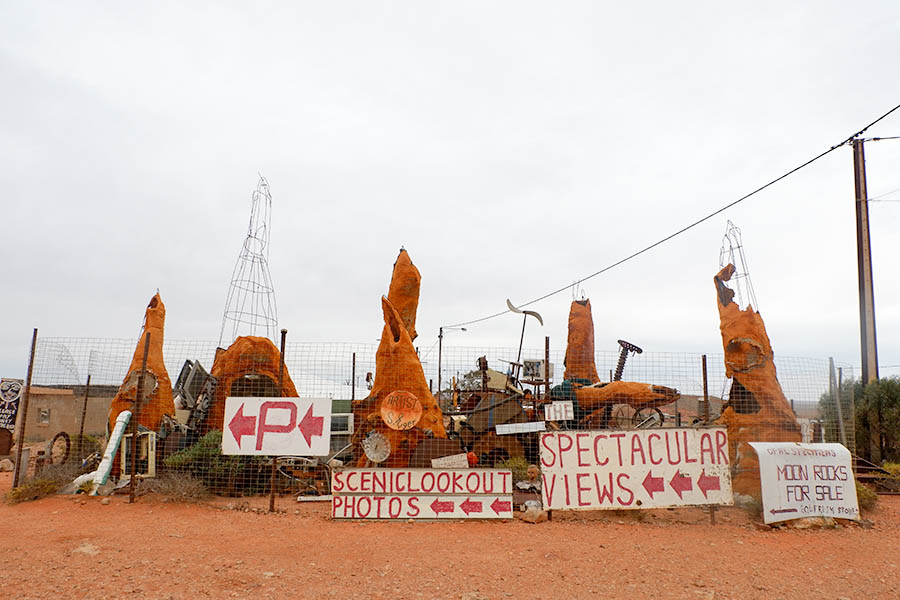
At the top eastern side of the Eyre Peninsula, arriving in Port Augusta will feel like you’ve reached a city. It’s time to head north, up the Stuart Highway, to a town called Coober Pedy.
This is a 550-kilometre detour (plus the return trip) to see a population 3,500 town where everyone lives underground; and I do think it’s worth it.
If you love the weird and wonderful, you’ll find lots of entertaining things to do in Coober Pedy . The drive up there is pretty mesmerizing as well!
Coober Pedy to the Flinders Ranges: 5 days
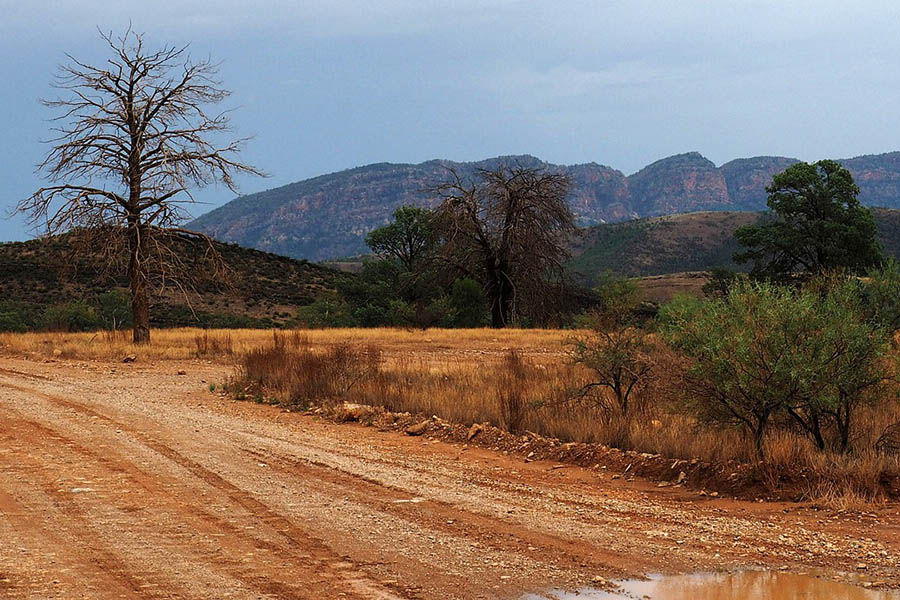
And the good news is you don’t have to go back the way you came; from Coober Pedy, you can head south east on the Oodnadatta Track – an unsealed but generally in good condition (check before you head out) road connecting the Stuart Highway with the Outback Highway.
You’ll drive around the south side of Lake Eyre (if you have a 4WD and a sense of adventure you might have the chance to go off the track and see it more) and experience even more outback living.
It’s hard to ever get enough, really!
The Flinders Ranges are a beautiful national park that twin mountains and outback – looking otherworldly.
Adelaide: 3 days

From the southern end of the Flinders Ranges, it is about a fiv hour drive to Adelaide (and this is their local national park – told ya Australia was big!).
Adelaide, like Perth, seems to get a reputation for being ‘boring’ but it’s actually a bundle of joy.
The city is really gorgeous, with markets, museums, a great state library and there’s lots of nature around the city, including beaches and vineyards. Make sure you check out the Barossa Valley.
Backpack Oz in Adelaide has a great atmosphere with a bar and organized trips, and is set in a historic building. There isn’t free parking right by the hostel, but there are spots nearby – the hostel staff can advise you. Click here for rates and to book .
If you’re after a hotel, Pullman Adelaide is a good option with free parking. Click here for more information and to book .
Adelaide to Melbourne: 1 week
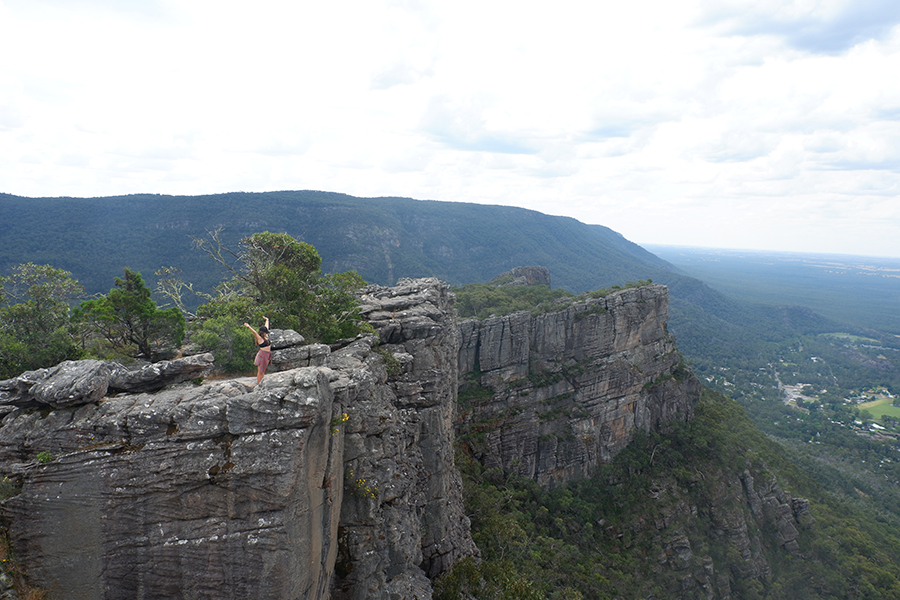
Between Adelaide to Melbourne, there are a few great attractions, both coastal and inland. Coolong National Park and Mount Gambier are great spots to visit with South Australia, and once you cross over the border, head north towards Gariwerd (The Grampians) National Park .
A couple of hours east from here is the historic city of Ballarat , with attractions geared around its gold-rush history.
From here, zig-zag back down to Warrnambool, where you can enjoy the gorgeous Great Ocean Road. Spend a few days here enjoying the beaches and attractions before completing your loop and reaching Melbourne city once again.
Tasmania: 3 weeks

But your trip doesn’t stop here!
From Melbourne, catch the Spirit of Tasmania over to Devonport .
From here, you can do a circuit of the island state, enjoying attractions like the Bay of Fires, Wineglass Bay, the Tasman Peninsula, the capital Hobart (which is worthy of a few days in itself) and the mighty Cradle Mountain . Make sure you check out the north coast and the beautiful town of Stanley as well.
Three weeks is a great time to see everything properly, although because Tasmania is small compared to the rest of Australia, you can do it in less.
You’ll be able to free camp most of the way around Tasmania, but in Hobart, I recommend staying at Montacute Bunkhouse. It’s a beautiful boutique hostel with lots of features to make a really pleasant night’s stay. Click here for rates and book today .
If you want a bit more space, Riverfront Motel and Villas makes you feel like you’re still in nature while being very close to Hobart city! Click here for rates and to reserve .
Then take the spirit back over to Melbourne and conclude your road trip around Australia!
End: Melbourne, VIC in SEPTEMBER OR OCTOBER
You’ve done it! You’ve circumnavigated Australia, seeing the very best of the country.
If you’re in the country on a year’s working holiday visa, you’ve arrived in Melbourne just as the summer kicks off and the city comes alive. You’ve even got time to do your regional work for another year down under!
Pin Me if You’re Happy!

13 thoughts on “ Road Trip in Australia: An Itinerary for the Whole Country! ”
Oh my goodness, this itinerary is AMAZING!!! What an adventure you would have had!! This is a total dream for my husband and I. I’ve stayed at the Urban Hostel in Melbourne, it’s a great little hostel. I wonder did you do much freedom camping? We dream of kitting out a van or minibus but we’ve heard it can be hard to find places to camp free. Will be bookmarking this itinerary to come back to if we’re lucky enough to get to do this trip someday!
I’m glad you enjoyed this Rhiannon! Are you based in Australia currently? It’s a cool spot isn’t it! Yes I did mainly free camping 🙂 Wikicamps has lots of options and I never had any issues – many of them are serviced by pubs or roadhouses so I just spent a little in the establishments. I have an article about free camping in Australia as well! I hope you get to do this trip, it’s not too expensive and it’s the adventure of a lifetime!!
Hi Claire! Going to Australia early in may to do my 3 months of work asap after arrival. Hopefully i will be ready to kick off my roadtrip somewhere in september starting in Southwestern Aus and travelling the country in a –> (N) <– looking route if you can understand what i mean. Doing this because a want the eastcoast summer and will probably stay there for a while. Im guessing this will take me approximately 7 moths to complete, I dont really have a timeline, but would like to get a full year on my second year visa to settle down and work etc.
What do you think about the route, does it make sense to you considering the weather and all or does it sound completely crazy?
Thank you for your inspo, noted many tips from you! 😉
I think it’s a great idea to do your farm work as soon as you get there. You should be able to find something in Southwestern, I’m not sure what the harvest seasons are like in Margaret River but I know it’s a popular spot for farm work.
In September I actually think I’d go the other way. It’ll be warming up by then down south, you’ll get over to the east coast around November and will still be there for summer (although you don’t really need to be there then above Brisbane, I’d say spring/ autumn are better weather, it is rainy season during the summer as well!), and then after summer you’ll get to enjoy the NT and the Kimberleys after the wet season (when waterfalls are at their best).
The other way would work too, but you’d need to rush the west coast/ Kimberleys/ NT to get it done before the wet season starts and they’re not places you want to rush, trust me!
But do whatever you think is best depending on your preferences 🙂 Let me know if you have any more questions and I’m glad the blog helped!
This looks like an awesome trip! I will probably fly to Australia at the end of august/ beginning of september. Not sure where I will be landing yet, keeping my options open for now. If I would want to start this roadtrip , where would you suggest me to start if i would want to start in september?
Your blog is very helpfull btw!
Hi Claire, We are a family of four (kids 3y and 5y) living in Rocky for one year. We are thinking of a roadtrip Rockhampton-Cairns-back to Townsville-Alice springs- Kings canyon- Aderlaide-Melbourne in 1,5-2 months. What do you think about that? We have a 2w car at the moment, would that be enough? Also thinking about getting a camper trailer for this roadtrip, or du you think it would be enough B&B, motels or hostel on the way to be ok? And we are thinking about doing it between May-August sometime. Or is it preferable a 4W car doing that roadtrip? We are just in the beginning of this plan, so I am happy with every advice you can give me. Regards Frida
Amazing! Your itinerary sounds good, although I’m guessing with kids you’ll want to add some time on so I’d definitely go towards 2 months in your case. As far as I know the only way you’d get from Townsville to Alice Springs on a 2WD track is via Tennant Creek, certainly doable but it will take a while. There is the Outback Way that stretches from Queensland all the way to Western Australia via the red centre but that’s 4WD only.
I love camping and would always recommend it, it does save a lot of money as well. If you’re happy to use tents they’re a great option without having to get a camper trailer! If not, you could probably just about get by without (staying at roadhouses and hostels in bigger places) but I wouldn’t want to say 100%.
May – August is a good time! It might be a bit cold in the south, so you might want to opt for some indoor accommodation then, but it’s still beautiful.
Let me know if you have any other questions!
Claire, I have been planing a solo Australian cross country driving trip from Sydney to Darwin. What have learned is that car rental in Australia is different then USA. My original plan was to land in Sydney, rent a suv and start driving but it doesn’t seems that easy due to your car rental laws.
That said would you be able to advise the best approach to achieve my goal.
Kind regards Tom K. [email protected]
So I’m actually British but spent a long time in Australia, I bought a car in Melbourne no problem and sold it again 8 months later. I did however rent a car in Australia and didn’t have any issues. What is the problem that you are finding with the car rental? Let me know and hopefully I can help!
Hi Claire, I am planning to do road trip with roughly the same itinerary, and I was wondering wether you think a 4*4 car is necessary or not ? And weather 4 or 5 months would be enough to do it? Thanks, Taís.
Myself, my partner and our 2 yr old son are planning to go from Melbourne to Broome via Perth along the West Coast. Then possibly up to Darwin and back down through Alice Springs to Melbourne. We are taking a caravan with us. Firstly, do you think it’s going to be too long and uncomfortable for a 2 old to cope with being on the road so long. And also is 2 months long enough for this trip?
This is a great itinerary! I’m looking to come to Aus and do a roadtrip of as much of the country as possible without rushing too much. I’ll be there late May-August. How much do you think is doable for 3 months? What would you cut out to squeeze this itinerary down?
Thank you!!
hi lovely! wow your trip looked incredible! what an experience. i have 2 months with hubby and 2 kids to do round trip… any tips? i am using some of your stop off as the base 😀
starting in canberra.. wondering if we should head clockwise or anticlockwise? will be starting in june next year (ideally). driving in a 4wd with pop top tent.
thank you any feedback would be amazing. i have no idea where to start..
love from an amateur
Comments are closed.
- New Zealand
- The Philippines
- The Netherlands
- United Kingdom
- Inspiration
- Overland Itineraries
- Packing Lists
- Travel Tips
- Working Abroad
- Accomodation Guides
- Overland Travel
- Preserving Cultures
- Protecting Animals
- Living Abroad

Where the bloody hell are you? Businesses feel the pinch as nomads stay south!

Want to be a wombat walker or a sauna stoker? Come to Tassie this winter!

Two + three = five; Three + five = eight; Fibonacci + giant sculptures = visit Uralla

On the edge! Iconic tourist landmark will be left to fall into the sea

War on (human) waste! Will restrictions stop bush campsite loo roll litter?
The inside story.

Bushwalking tragedies highlight need for caution on remote country hikes

New self-propelled caravan brings all-electric Big Lap dream ever closer

When drawing a line in the sand isn’t enough to stop coastal erosion

Electric vehicles on the Big Lap … your questions answered!
On the road.

‘We took a caravan trip to look for a house … and just kept going!’

Stew and Jacqui are fired up about travel … and about campfire cuisine

Can’t shower as much on the open road? That could be a good thing!

‘I fell in love with camping at first site … and so did my family’

‘There is another side to the caravan park story’
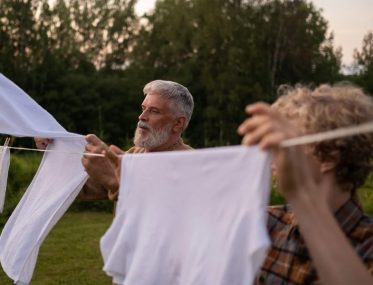
The six commandments that govern the way that grey nomads travel
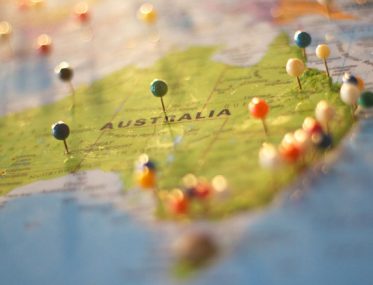
Paper maps are officially going the way of the dodo!

‘An Outback station stay took our Big Lap to the next level!’
Where to go.

Tamworth Barbeque Festival
Sep 27 - Sep 29, 2024
Location: Tamworth

National Sheep Dog Trial Championships
Mar 10 - Mar 16, 2025
Location: Hall Village Showground, Hall ACT

The Wollombi Valley Sculpture Festival
Sep 14 - Sep 29, 2024
Location: Wollombi

Sydney 4WD & Adventure Show
Sep 06 - Sep 08, 2024
Location: Sydney Dragway Eastern Creek

‘Tardis’ on wheels

How grey nomads can minimise the risk of accidents when towing a caravan
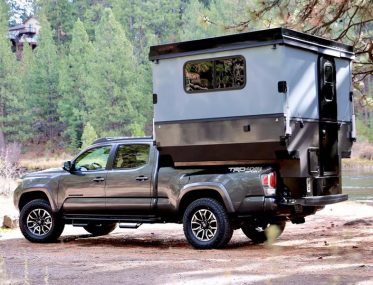
Hard-sided pop-up camper offers new camping option
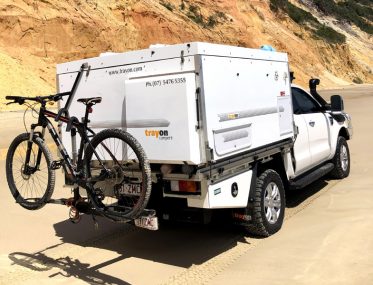
Getting bogged on an early trip gave Ross insight into what he needed in a rig
Accessories.

‘After getting bogged, I invented a system to help others get out of sticky situations’

Wireless reversing camera system can give grey nomads an ‘extra pair of eyes’

Flatpack Luvly car

Device helps grey nomad ‘twitchers’ identify birds on the cheep
Subscribe to our newsletter.

5 things I learned from travelling Australia in a caravan
- By Jodi Wilson
- March 7, 2024
- Experiences
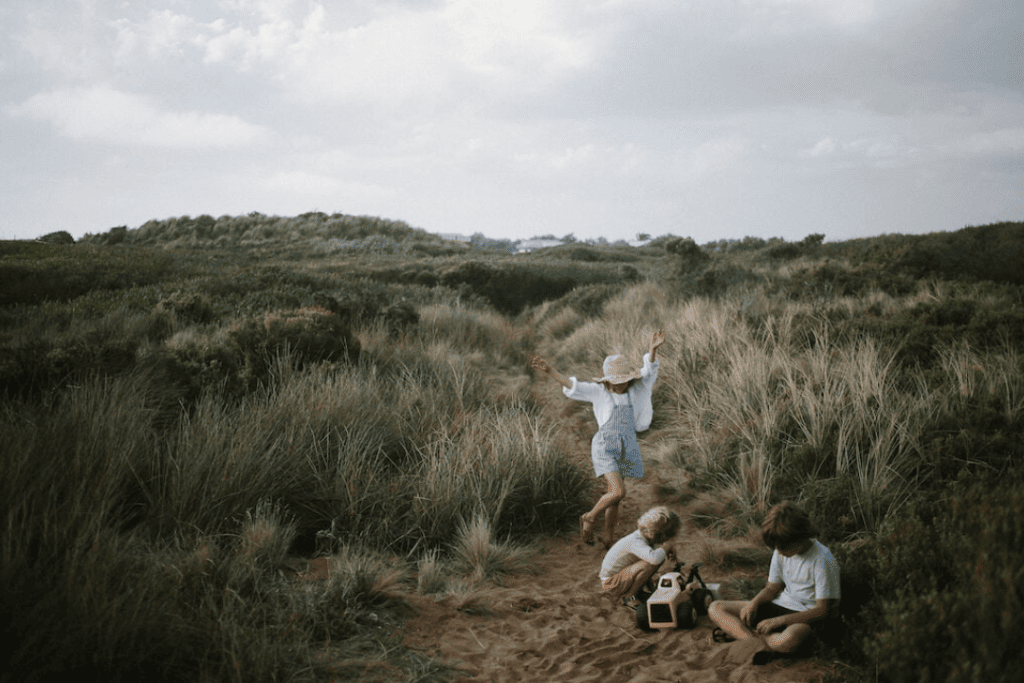
Travelling Australia in a caravan with kids and practising simplicity with the help of four wheels.
In 2018, my partner and I decided to embark on an indefinite road trip with our four kids. We’d never caravanned before but we were inspired to leave behind city commutes and school bells and embrace the spontaneity and freedom of nomadic living. It was the best decision we’ve ever made and now, after two-and-a-half years on the road, we treasure the time we spent together, the memories we made and the lessons we continue to reflect on, especially in times of uncertainty.
1. All We Have is Now
I don’t think we can underestimate how quickly time passes nor how fast our toddlers become teens. Every piece of research I’ve read on happiness, mindfulness and contentment has all come back to the same concept: live in the now, be present, make the most of today. And it’s true. Looking back to that day when we decided to sell everything and travel, I was highly conscious of the racing years and the fact that if I didn’t make change, I would regret it. We never set out to see places but to just spend time with each other. It was always about time because time is all we have.
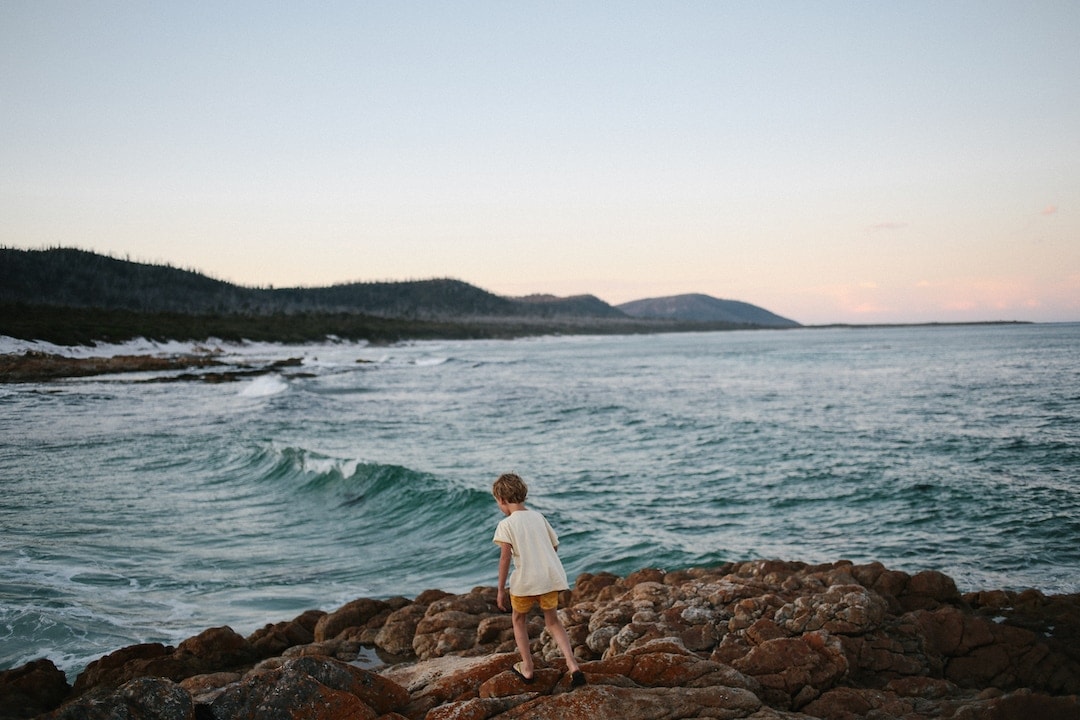
2. Slow Travel is Always a Good Idea
The fast pace of life naturally extends to travel, too. Stepping away from that ‘must go, must see’ mindset is a decision I highly recommend – for the sake of your travel experience and the happiness of your family (speaking from experience). Put simply: rush around this country trying to see it all within a short timeframe and frankly, no one is having a good time. Within a few months of travelling we threw the idea of ‘the big lap’ out the window because flying visits and long travel days are definitely not our thing. Instead, we chose the slower, country road. We drove for a few hours, stopping in small towns for a wander and some lunch before heading another thirty minutes down the road and settling in for a week or so. We sought out the quietest rivers, the smallest towns, the very best of ordinary op-shops. Travelling slowly allowed us the time and freedom to settle in and experience each place we visit whilst maintaining a balanced and gentle family rhythm.
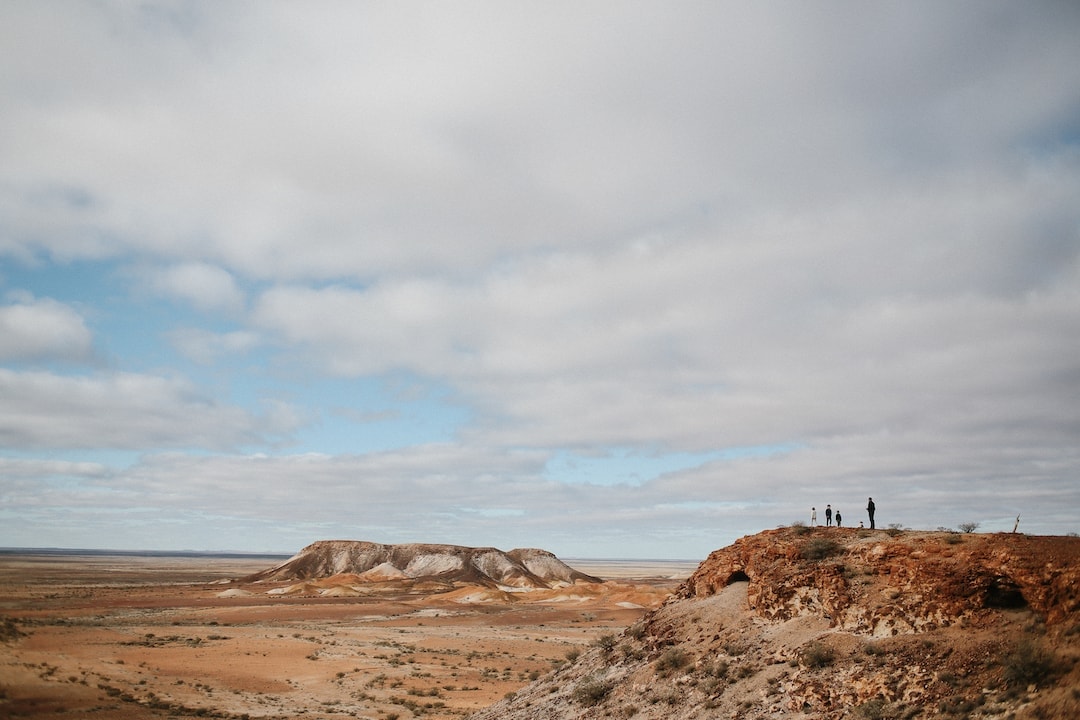
3. You don’t need a lot to live well
Living in a caravan is the epitome of small space living. Every single thing you own needs to be considered for its size, weight and purpose hence van life forces you to be an incredibly conscious consumer. Whittling down our possessions to fit in a 24ft van was one of the most rewarding experiences of our travelling experience – the opportunity to really consider every item for its purpose – and then realise that there are so few things we need to live abundantly. Being mindful of what you carry with you in your tiny home is a constant reminder that you don’t need a lot to live well because ultimately, your daily joy is found in ocean swims, campfire conversations, walks around newfound towns, a cup of tea next to a river, walking barefoot on the grass – all the things that so easily get pushed aside when you’re consumed by the busyness of daily life and a cluttered home.
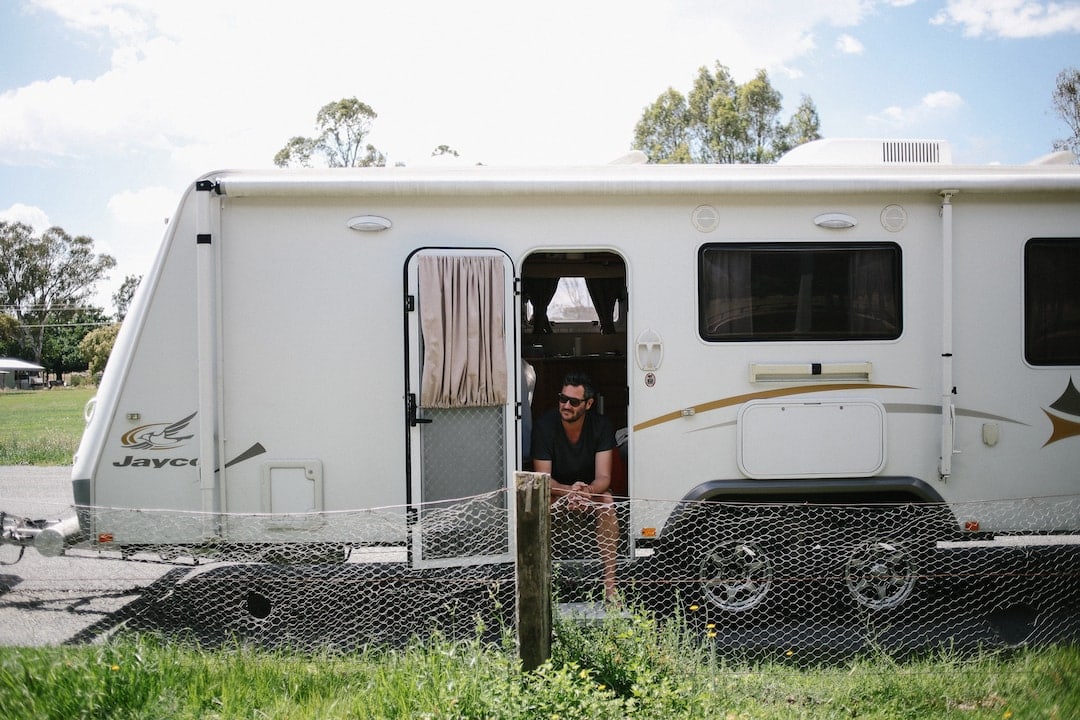
4. Simple Experiences are Best
My favourite travel memories aren’t grand or unattainable and they don’t include tourist destinations or must-sees. Perhaps they are so memorable because they’re so simple; early morning drinking tea outside, my toddler playing at my feet. Dinners made from the day’s market haul, eaten alfresco. Late afternoon walks that only end because it’s getting dark and we’re hungry. A mountain climb and a cold ocean swim. Reading a book in the sun while the kids ride scooters up and down the street. Falling into bed tired and happy and grateful after a day of exploring.
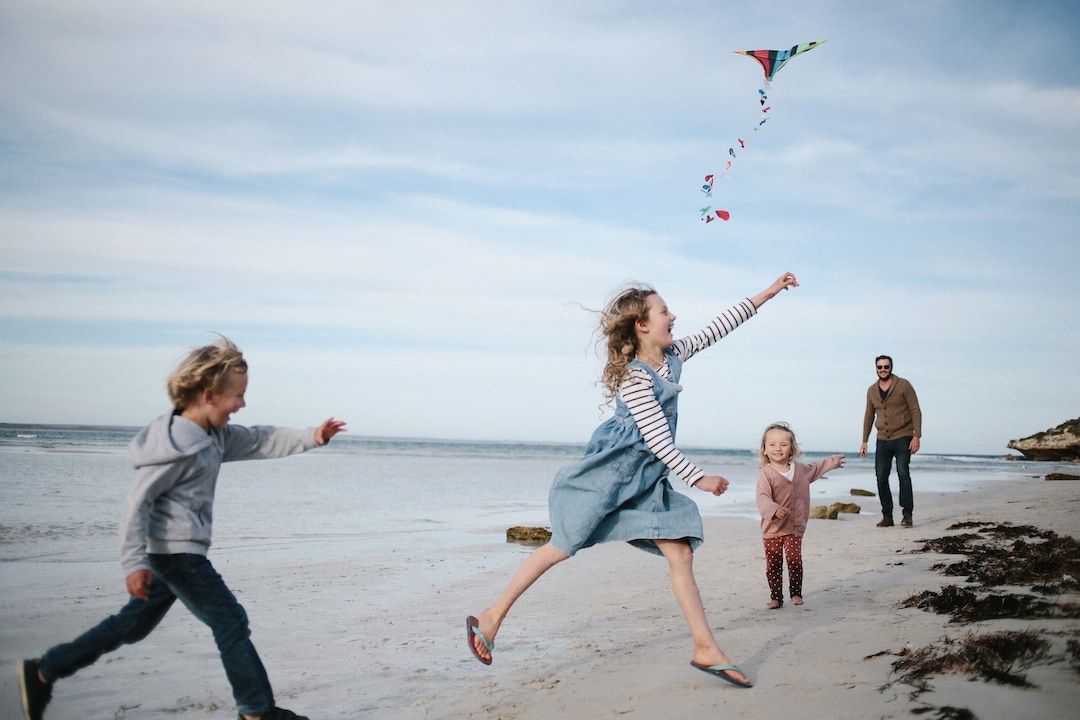
6. Time in Nature is Always Worthwhile
Adventure doesn’t mean packing up your house and living on the road. A one-month caravan trip is a wonderful opportunity that you should embrace if you have the chance; just because it’s not a year-long adventure doesn’t make it any less worthwhile. You can live simply and with less without moving into a caravan. You can intentionally stop consuming by being mindful of your wants versus your needs. It has nothing to do with the size of your abode and everything to do with your choices. You’re allowed to say no to after-school activities so your children can play barefoot and free till dinner time. You can discover new places each weekend by driving away from the shops and towards the mountain ranges, the sea, the gumtrees. Regardless of where and how you live, time spent in nature helps put all your priorities in place and reminds you what matters.
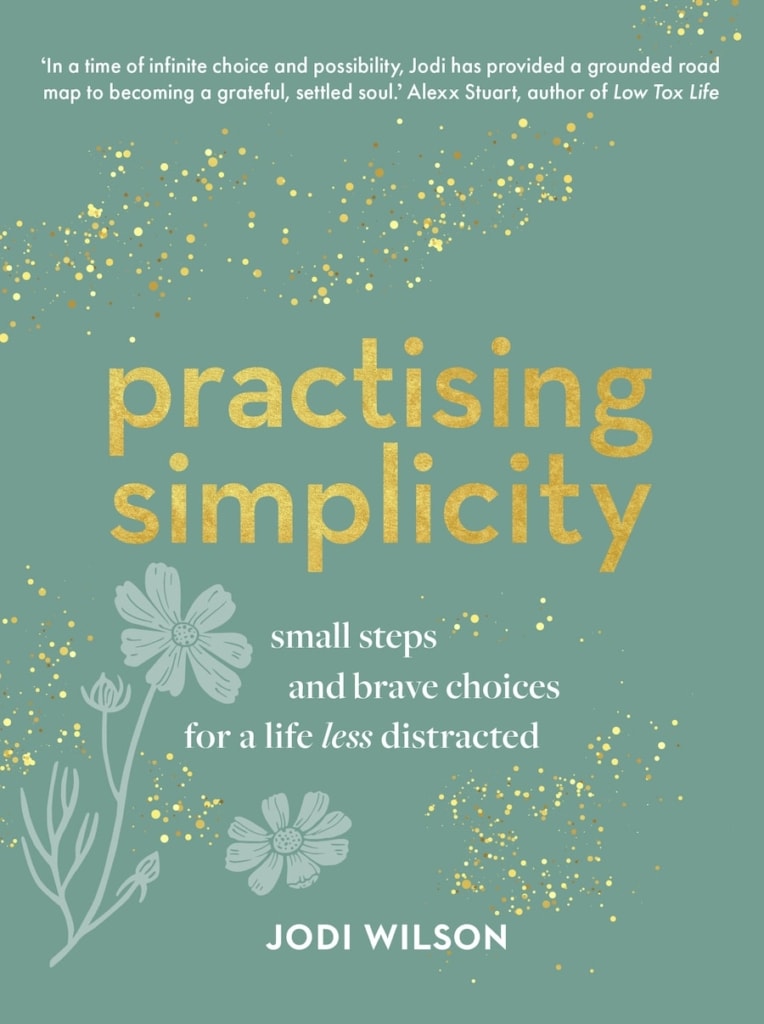
The new book – practising simplicity, small steps and brave choices for a life less distracted, is published by Murdoch Books will be available in February next year. The book tells the story of lessons learnt while travelling Australia in a caravan with kids. A seemingly daunting task for any family, Jodi returned from the experience with a more connected family. If you wish to follow Jodi’s journey, check out her blog .
For more to explore with kids, check out the best family friendly activities in Brisbane.
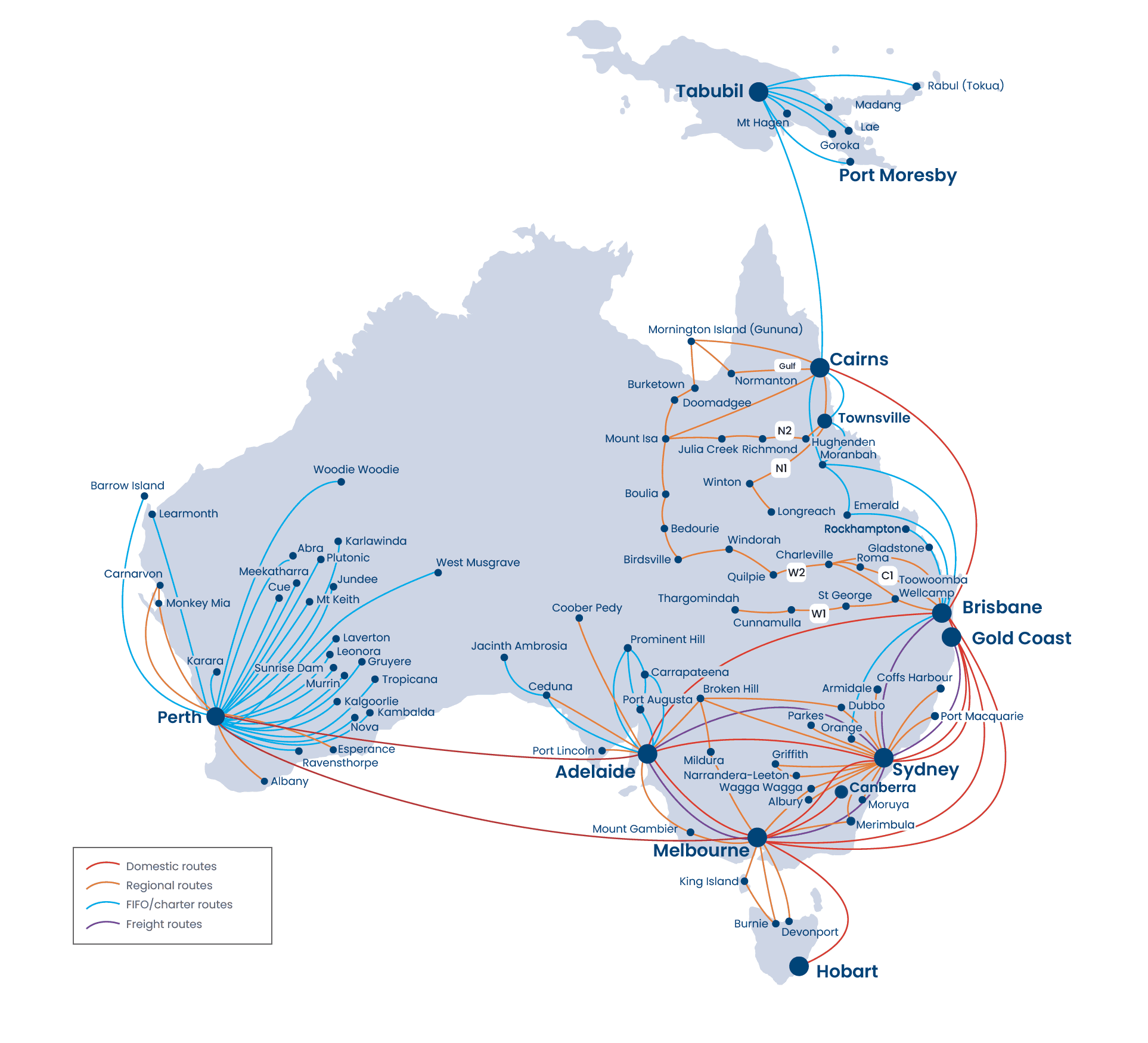
MORE STORIES
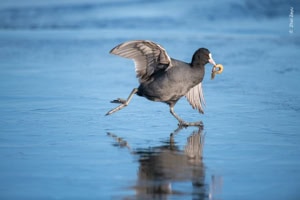
Truly Aus Newsletter
Sign-up for our newsletter.
CREATED BY PUBLISHING BYCHELLE

SIGN UP TO OUR NEWSLETTER
For travel inspo and recommendations, flight deals, and awesome giveaways straight to your inbox!
- My Favourites
- Destinations
Guide to an Aussie road trip
With world class wide open spaces on our doorstep, it’s time to get exploring this gorgeous country (and that’s not as hard as you might think).
This article may contain links from our affiliate and advertising partners. When you click on them, or share this content, we may earn a commission. Learn more
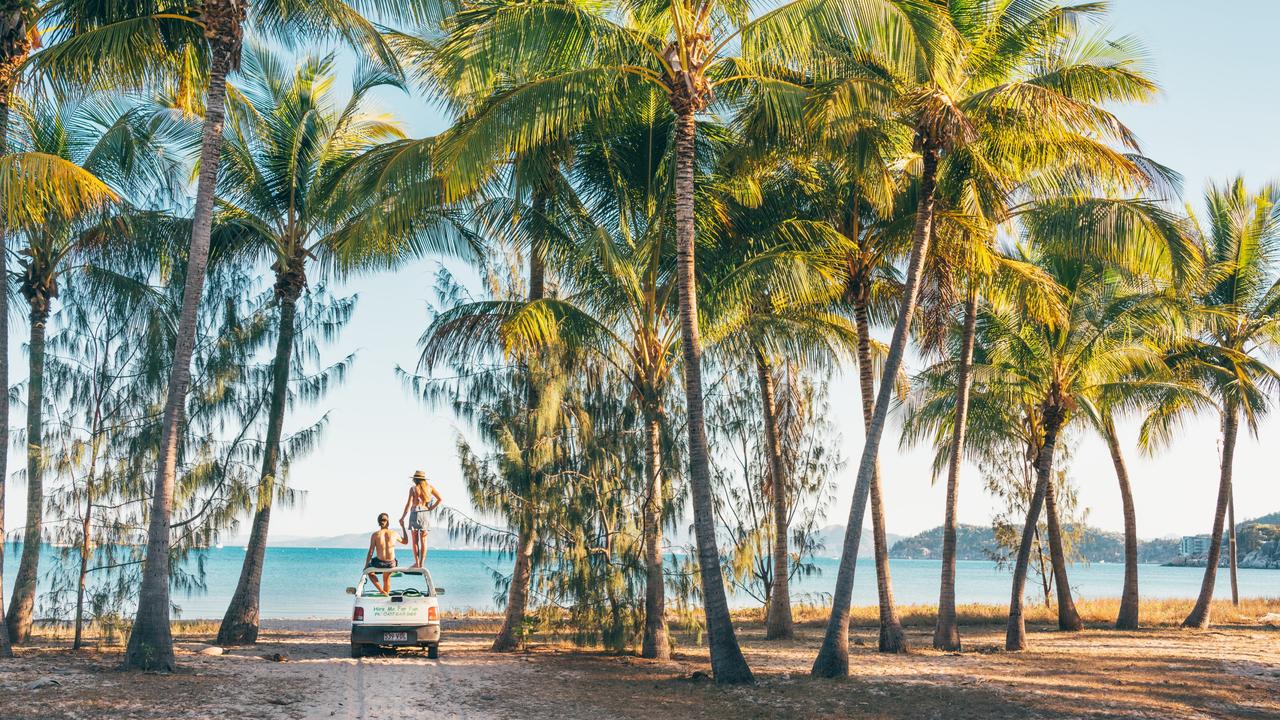
72 hours in Kalgoorlie: The ultimate 3-day itinerary

These tiny islands are Australia’s best secret wonder
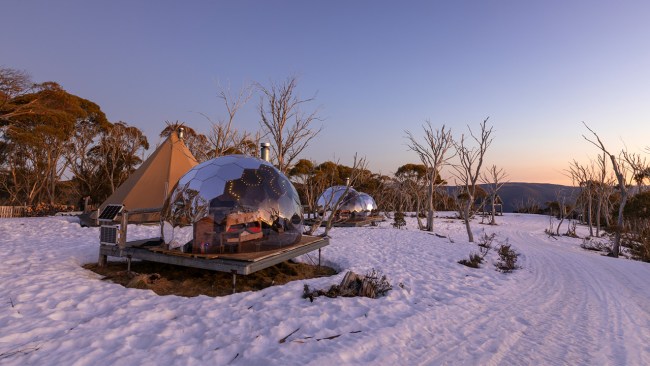
I ditched skiing for glamping at Mt Hotham
While we were all in lockdown, Australia shone beautifully and brilliantly, remaining as beguiling as it always has.
And now we can once again hit the road and soak in its wide open spaces with an even greater appreciation. Oh, how lucky we are to be able to travel free and easy.
That thought is constantly with me on any roadtrip , be it a weekend in a national park campground close to home, a month in blissful solitude somewhere in the western deserts, or a bucket list epic such as the lap of Australia we (my partner Lee Atkinson and I) did a few years ago. Every day on the road brings new, amazing and priceless experiences, no matter how or where you travel in this country.
If you haven’t previously considered taking a long look around Australia, now is the time.

WHEN IS THE BEST TIME FOR AN AUSTRALIAN ROAD TRIP?
Autumn/winter is peak touring season for central and Northern Australia, and the weather is at its most benign. From May to July, in the Red Centre, western deserts and WA ’s Pilbara, you can expect mild sunny days, cool to cold nights and no rain. Perfect campfire weather.
It’s also dry across the Top End from May to November, so the time is right for exploring Cape York , the Kimberley, Kakadu and the Gulf.
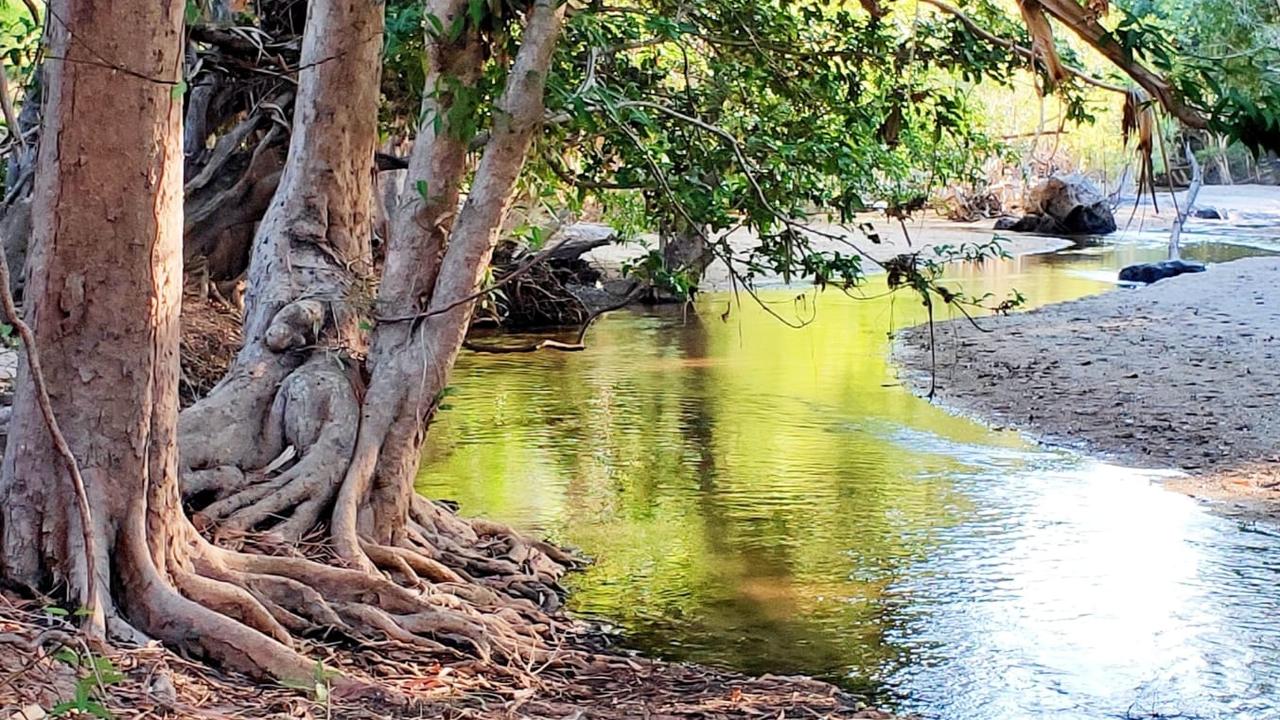
Locals say climate change has pushed the start of the wet season out to December/January. A few years ago we spent October in Cape York and it was almost deserted, including the Peninsula Development Road that leads to the tip. It’s a carpark in June/July.
In spring and summer, head south to Tassie , the Eyre Peninsula in South Australia , the Snowy Mountains and the southern coast of Western Australia .
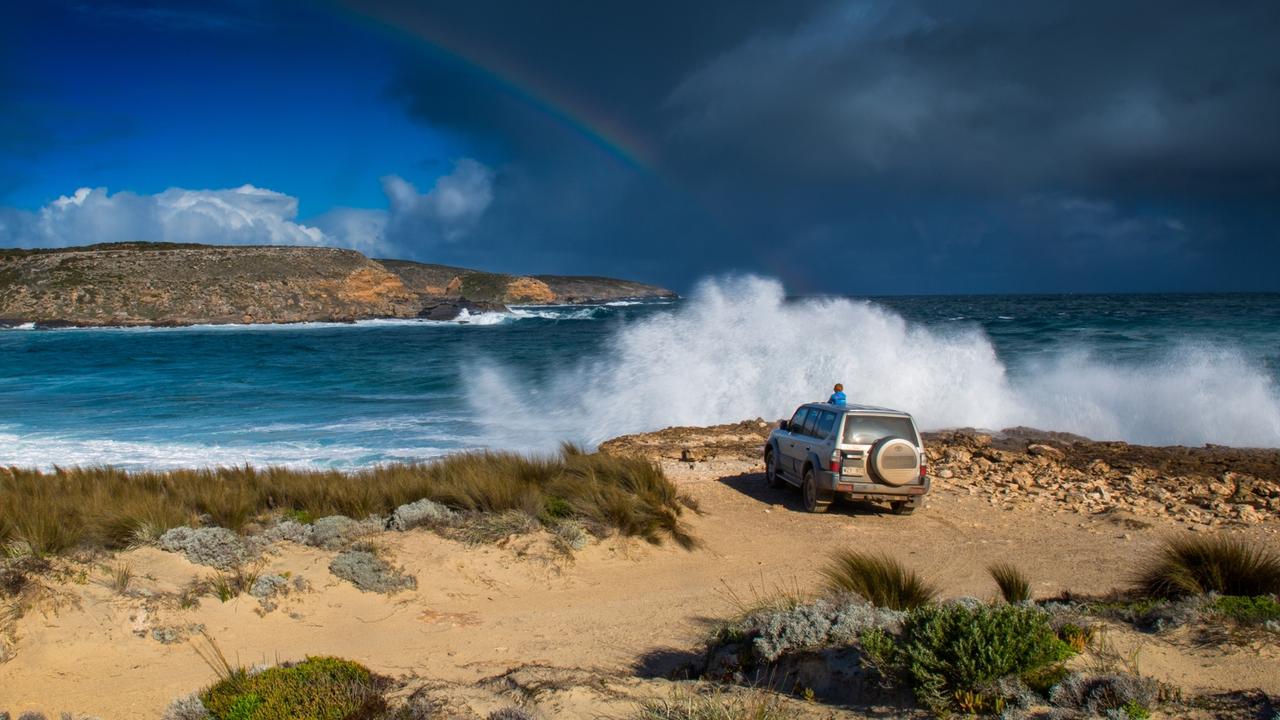
Closer to home, many regions and communities are now beginning the long recovery from bushfire and drought, so they’ll be mighty pleased to see you, especially when you open your wallet. Western NSW , smashed by drought for years, has had good rain recently, the Darling River is now flowing again and the wildflowers will soon be out. See it while you can. Drought seems to be the new normal out there.
The North Coast /New England regions in NSW and East Gippsland in Victoria have endured the full drought/bushfire catastrophe in recent times, but the rain gods have delivered and their beautiful national park campgrounds are waiting for people to return.
DO I NEED A FOUR WHEEL DRIVE (4WD) FOR AN AUSTRALIA ROAD TRIP?
A common misconception among would be road trippers is that you must have the worksburger heavy-duty, dual-range 4WD truck/built like a Sherman tank off-road caravan/recovery- communications-survival gear extravaganza to proceed anywhere beyond the blacktop. Anything less and the complete disintegration of your equipment and a lonely, miserable death in the wilderness is certain.
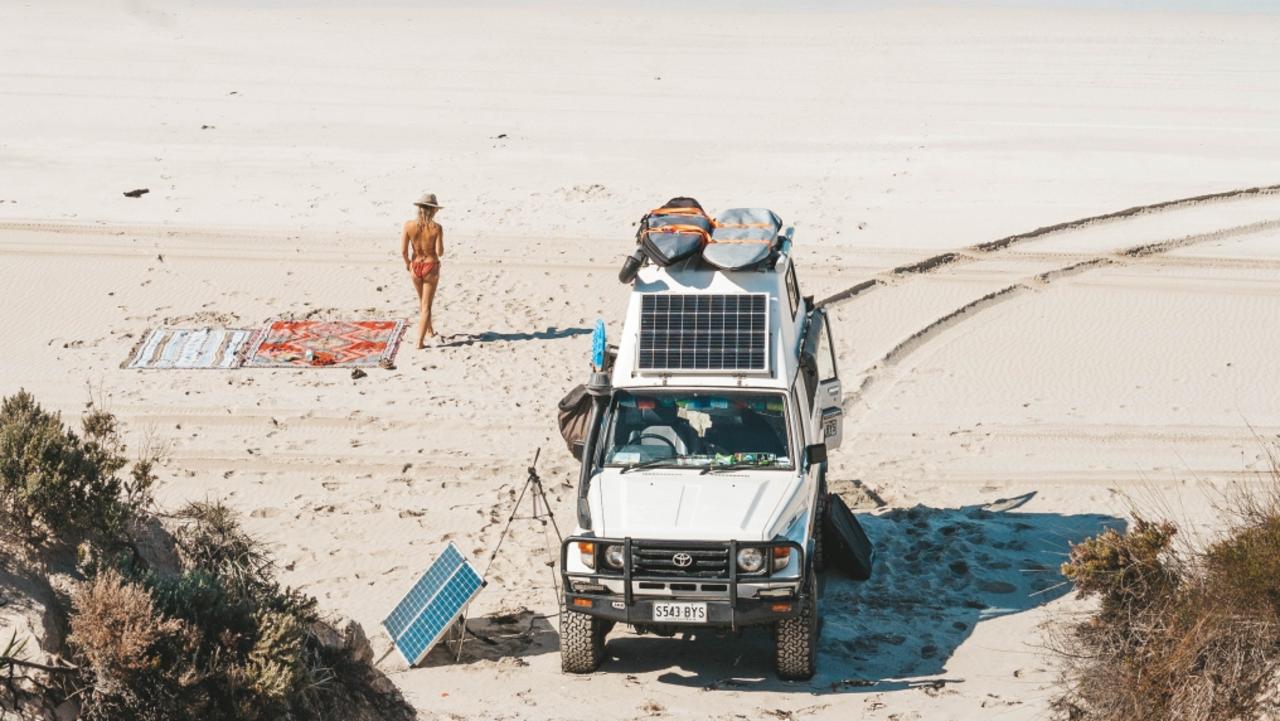
You can reach some of the country’s most beautiful, captivating places on well-made and maintained tracks that can be driven quite safely and easily in an SUV such as a Toyota RAV4, a Hyundai Santa Fe, or even a humble sedan such as a Toyota Camry.
WHAT IS A GOOD 4WD FOR A ROAD TRIP?
If you’re looking for the ideal roadtripping machine, one tonner 4x4 utses such as the Mitsubishi Triton and Isuzu D-Max are hard to beat and there are a lot of cheap used ones around. An automatic is more reliable, especially for towing.
HOW SHOULD I PREPARE MY VEHICLE FOR A ROAD TRIP?
Preparation is the key to avoiding car dramas on any roadtrip, no matter where or how far you go. Get your vehicle serviced beforehand, make sure the cooling system and battery are in good nick and the tyres have plenty of life left in them. Run the correct tyre pressures, carry a spare and the tools necessary to fix a flat. That will cover 95 per cent of potential issues.
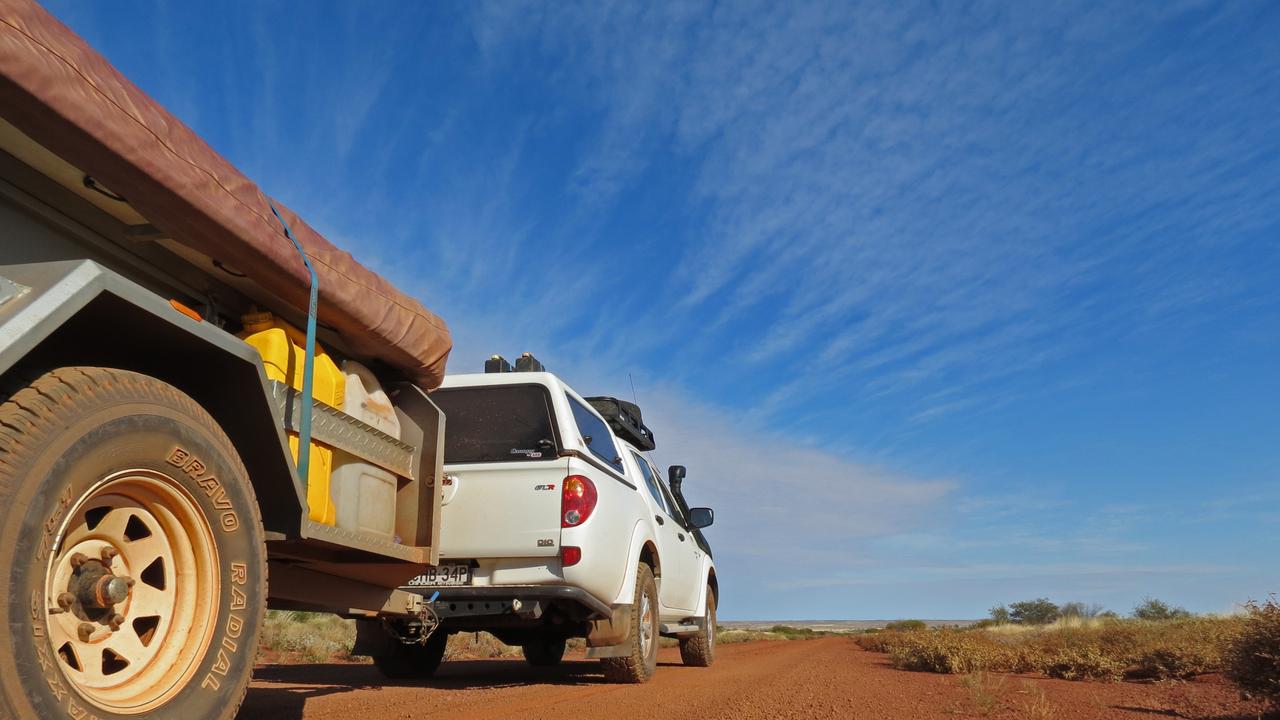
BEST FOOD FOR AN AUSTRALIA ROAD TRIP?
Twenty years ago, finding fresh fruit and vegies out in the bush was difficult and a roadtrip was an exercise in culinary desperation. All you needed was a tin opener, a fork and a cast iron stomach.
Roadhouse food was, and still is, even worse. Does a Chiko Roll taste better after a few days at optimum bacteria breeding temperature in the hot food counter? Do you really want to find out?
Today, thankfully, even small outback towns and remote Aboriginal communities usually have a general store that’s pretty well stocked with fresh fruit and vegies, plus dairy, frozen meat and a lot more grocery/health care products than back in the day. (For more info, check out our guide to how to fid amazing food on an Aussie road trip here .)
If your roadtrip involves an extended period of camping, invest in a 12-volt fridge. It’s the single best thing you can buy to make life easy and enjoyable on the road. Engel is the best brand by far, but the most expensive, with a 40-litre model – big enough to live out of forever – priced at around $1300. Cheaper brands can cost about half that.
WHY TAKING THE DIRT ROAD IS A GOOD IDEA
When you set off on the great Australian road trip, be it for a few weeks or forever, there are actually two Australias you can travel. There’s the comfortable, easy, convenient, safe and predictable Australia. That’s the one you get to on the bitumen. Then there’s the wild, free, uncrowded, exciting and adventurous Australia. That’s the one you get to on the dirt.
Driving on most dirt roads doesn’t require special skills. A fully functioning brain is essential, though.
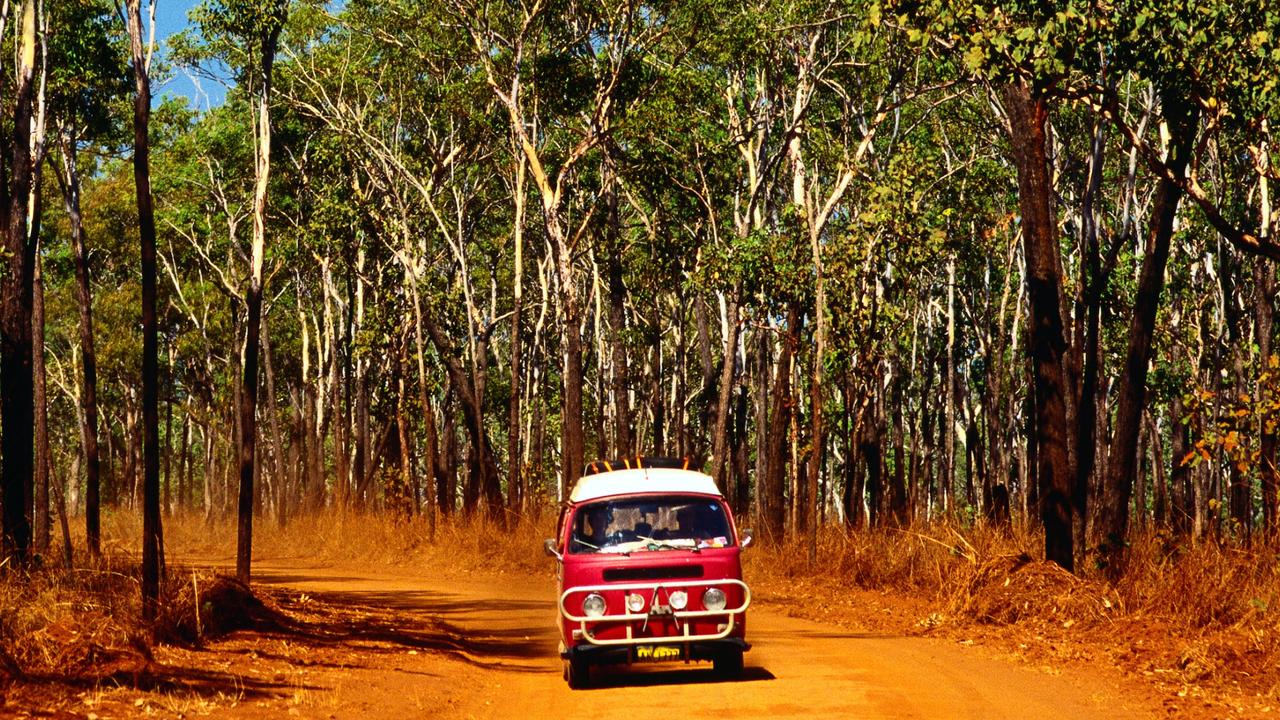
The risk of anything bad happening increases at an exponential rate according to your speed. Even on a smooth, newly graded dirt road, 80km/h is about top whack if you want to maximise your chances of a trouble-free journey.
Drive faster and you greatly increase the risk of damage to your tyres and suspension. On most dirt roads, the surface is constantly changing, so you have to be able to slow down or stop in plenty of time if you spot a washaway, a grid, an emu with a death wish, a patch of loose gravel or anything else that might wreck your trip if you hit it going too fast.
Oh, and if there’s a road train coming towards you, don’t argue. Pull over as far to the left as possible and stop.
IS IT BETTER TO ROAD TRIP WITH A CARAVAN OR A TENT?
A tent, a portable stove and a swag is all you really need, and there’s a lot to like about the minimalist approach — if you enjoy sleeping on the ground, living on two minute noodles and communing with insects …
That said, I’ve seen many people who hate the idea of towing doing the big lap, living out of a 4x4 with good quality camping gear and doing it very comfortably. Travel light, travel far, travel fast. Not a bad way to go.
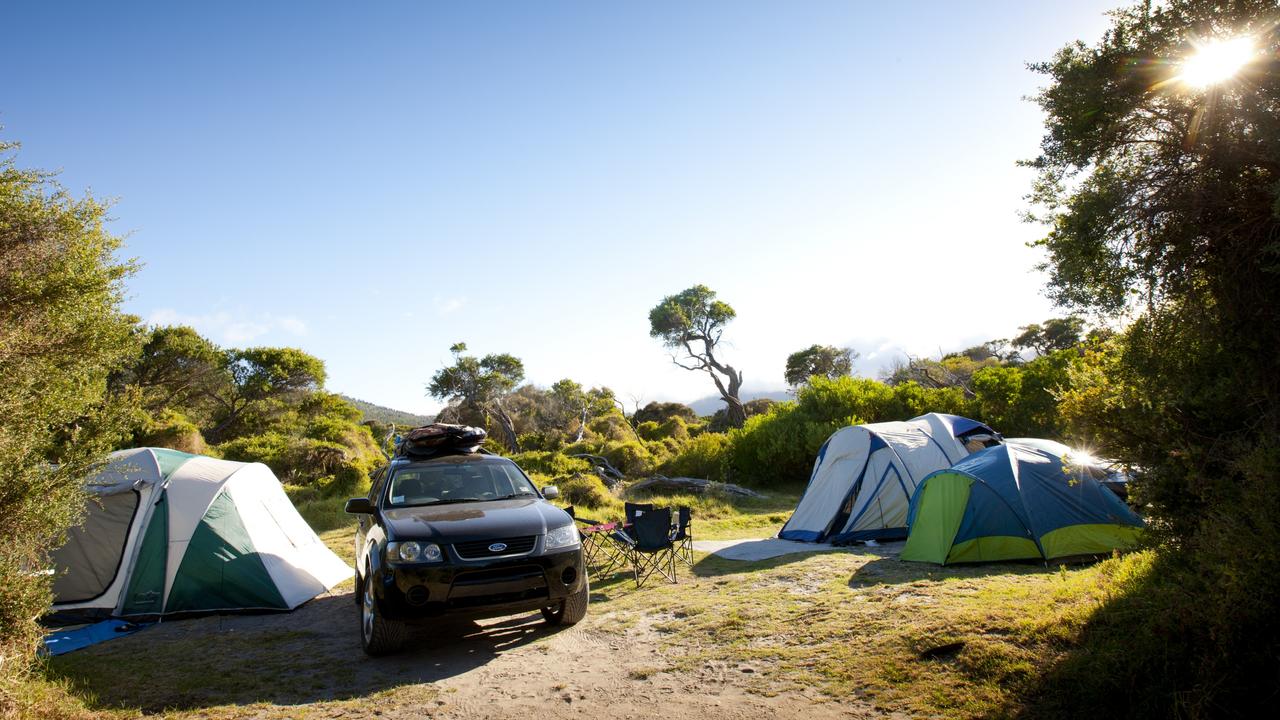
In a motel room on wheels — a big caravan with airconditioning, ensuite, TV and all the mod cons — you’ll always be clean, dry and comfortable, but you’ll have to stick to the major touring routes.
That’s fine, and for many people the best thing about a roadtrip is enjoying the company of like-minded travellers, especially over a few sundowners in the caravan park. The best bits of Australia are often somewhere else, though, and a bitumen-biased caravan won’t last long on the rough, corrugated dirt roads that crisscross the outback.
HOW MUCH SHOULD A GOOD CARAVAN COST?
If you want to get out there, invest in a caravan engineered to take some serious punishment, with a robust chassis, independent suspension, off-road tyres, extra clearance, body protection and an off-road hitch. Expect to pay upwards of $60,000 for a smaller model. A premium quality, lightweight outback touring van, with all the equipment, solar power generation and storage capacity you need to go off the grid for long periods, starts at about $80,000.
A camper trailer is a great compromise and more affordable than a caravan. Prices start at around $10,000 for a lightweight tent trailer and $25,000 for a heavier duty model suitable for outback touring.
We’ve used a camper trailer on lots of roadtrips, including a lap of the country in 2014, about a dozen desert adventures and a three month trek to Arnhem Land and Kakadu in 2019. Towed behind a 2012 Mitsubishi Triton 4x4 one tonner ute, at about 1100kg it’s easy enough to drag around – though we do have the occasional get stuck/extract the plot moment due to … cough … driver error.
WHAT IS IT LIKE TO BUSH CAMP IN AUSTRALIA?
We bush camp most of the time, often in national parks, often for free and often alone.
Sure, the insects can drive you nuts, it’s an effort to set up camp at the end of the day and you do feel a bit apprehensive wandering into the scrub with a torch, shovel, a dunny roll (which would be rationed to only two sheets per go now, I reckon, and folded, not scrunched, for maximum coverage) and a box of matches (to burn said dunny paper when you’re done – it’s bush etiquette), but at no time do we envy the caravanners.

Whenever we arrive home, it feels weird for a while because, after living comfortably and happily out of our camper trailer, our house seems like too much space, filled with too much stuff. We own, would you believe, 19 chairs. Why do two people need 19 chairs? On the road, we get by fine with two.
That’s one of the best things about a roadtrip. It makes you realise that you can live well, with relatively little.
Even toilet paper.
Ultimate Road Trips: Australia , by Escape’s Lee Atkinson, highlights 40 of the best driving holidays around the country, from coastal routes and mountain drives to epic outback adventures and weekends in the best food and wine regions.
Best ways to save money on an Aussie road trip
Best stargazing spots in NSW
6 of the best road trips from Sydney
Best caravan parks in South Australia
50 best things to do in Victoria
Best Aussie road trip in every state
With its rollicking gold rush history and equally rich line-up of outback characters, Kalgoorlie is the heart of WA’s Wild West.
With a population of just 600, this remote group of Australian islands is home to stunning natural attractions - and one of the world's most unique airports.
Yes, you can enjoy the Australian snowfields without skiing, as this ardent Aussie skier discovered on a glamping trip at Mt Hotham.
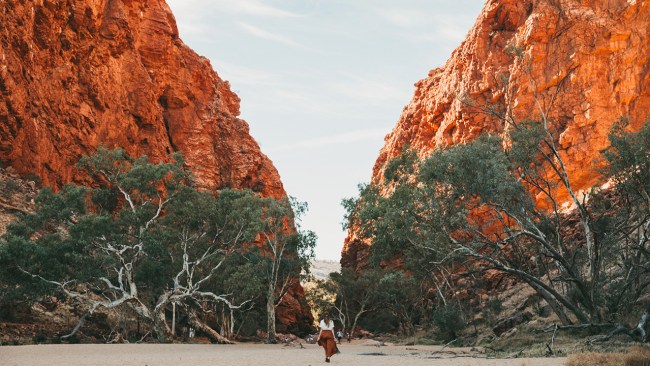
48 hours in Alice Springs: The ultimate itinerary
Find urban charms and outback beauty in the heart of Australia.

Australia Recommends 2024

Come and Say G'day

G'day, the short film

Discover your Australia

Travel videos

Deals and offers

Australian Capital Territory

New South Wales

Northern Territory

South Australia

Western Australia

External Territories

The Whitsundays

Mornington Peninsula

Port Douglas

Ningaloo Reef

Airlie Beach

Kangaroo Island

Rottnest Island

Hamilton Island

Lord Howe Island

Tiwi Islands

Phillip Island

Bruny Island

Margaret River

Barossa Valley

The Grampians

Hunter Valley

McLaren Vale

Glass House Mountains

Alice Springs

Uluru and Kata Tjuta

The Kimberley

Flinders Ranges

Kakadu National Park

Eyre Peninsula

Karijini National Park

Great Barrier Reef

Blue Mountains

Daintree Rainforest

Great Ocean Road

Purnululu National Park

Cradle Mountain-Lake St Clair National Park

Litchfield National Park

Aboriginal experiences

Arts and culture

Festivals and events

Food and drink

Adventure and sports

Walks and hikes

Road trips and drives

Beaches and islands

Nature and national parks

Eco-friendly travel

Health and wellness

Family travel

Family destinations

Family road trips

Backpacking

Work and holiday

Beginner's guide

Accessible travel

Planning tips

Trip planner

Australian budget guide

Itinerary planner

Find a travel agent

Find accommodation

Find transport

Visitor information centres
Deals and travel packages

Visa and entry requirements FAQ

Customs and biosecurity

Working Holiday Maker visas

Facts about Australia

Experiences that will make you feel like an Aussie

People and culture

Health and safety FAQ

Cities, states & territories

Iconic places and attractions

When is the best time to visit Australia?

Seasonal travel

Events and festivals

School holidays

Public holidays
How to get to Australia's most iconic cities

How long do I need for my trip to Australia?

How to travel around Australia

Guide to driving in Australia

How to hire a car or campervan

How to plan a family road trip

How to plan an outback road trip

Road trip planner
Entertainment
- Travel Tips
- Domestic Travel
International Travel
- Travel Insurance
- Travel Trouble
- Food & Wine
- Home & Garden
- Family & Pets
- Relationships
- Beauty & Style
- Retirement Life
- Money & Banking
- Retirement Income
- Real Estate
- Home Hints & Tips
- Health Insurance
- Life Insurance
Information
- Terms & Conditions
- Privacy Policy
Keep up to date
Get the latest Over60 news, offers and articles.
- Entertainment Technology Movies Music TV Books Art
- Travel Travel Tips Domestic Travel International Travel Cruising Travel Insurance Travel Trouble
- Health Body Mind Eye Care Hearing Caring
- Lifestyle Food & Wine Home & Garden Family & Pets Relationships Beauty & Style Retirement Life
- Finance Money & Banking Retirement Income Legal
- Property Real Estate Downsizing Home Hints & Tips
- Compare Health Insurance Life Insurance
- Games Contests Crossword Sudoku Trivia Wordsearch
- Info About Us Contact Us Terms & Conditions Privacy Policy
10 best caravan road trips to take in Australia

Our Partners

Join Over60
Join our community of over 400,000-plus members today and get the latest Over60 news, offers and articles.
Get all the latest Over60 news, offers and articles.

💵 How Much Does it Cost to Travel Around for 12 Months?
How much does it really cost to travel around Australia full-time for 12 months? This is one of the most asked questions for those wanting to tackle the Big Lap or road trip Australia.
While some people make it all the way around in one year, others wander and take many years to complete a lap. A 12-month travelling Australia budget can vary depending on how fast you travel and what you experience along the way.
We were a family of four, living on the road, just meandering around Australia, exploring and living slow. We officially survived one whole year of travelling in a caravan. Well, if you want to get really specific, we haven’t actually left our home State yet. In our defence, Queensland is one BIG State!
While this is nowhere near a ‘Big Lap’ Budget, it does accurately reflect a snapshot of our caravan lifestyle expenses. For a look at other associated costs, heres the Full Breakdown of Caravanning Costs .
Read on to find out the costs!
We are a participant in affiliate advertising programs designed to provide a means for us to earn fees by linking to ebay.com and other affiliated sites. We may earn a commission from your purchases at no extra cost to you. For more information, see our disclosures here .
How Much Money Did We Start With for Travelling Australia?
If you think that the cost to travel Australia full-time needs to be expensive or requires a large sum of savings, let’s just squash that preconceived notion right now.
Do you want to take a guess at what our start-up figure was when we embarked on this adventure? $30,000? $20,000? Nope, we didn’t even have $10,000. We hit the road with just $2,500 in our back pocket!

To be fair, we always planned to have much more savings than that.
In the end, we were just so tired of looking at the ‘To Do’ lists. We basically put them aside and figured we’d get to them later (we never even looked at them after that and survived just fine). I guess that’s just a testament to thinking you need more than you actually do.

How Did We Fund 12 Months Travelling Australia?
So, if we only started with $2,500, how did we fund our travel around Australia for the first 12 months?
Well, we survived in a variety of different ways, but mostly from our few stints of stopping for work. My partner at the time was a Truck Driver and found it pretty easy to pick up work. We were also lucky to have a decent tax return last year, which gave our budget a nice little injection.
I kept myself busy building up the website and creating a range of Travel Planning Resources to help people like yourself, which also helped. Head on over and check out the OZ BIG LAP series!
Without further ado, let’s crunch some numbers!

12 Month Costs For Travelling Australia
Travel budget break-down, accommodation.
As you can see our weekly accommodation outlay was a mere $34.40 per week towards the cost to travel Australia full-time. That’s definitely loads cheaper than what we were forking out each week on our mortgage before we sold the house! Our favourite way to keep that figure down was with Free Camping as much as we could.
Free & Low Cost Camping
I really enjoy the freedom of being self-sufficient and have found that Free Camps are more readily available (and you can stay for longer) once you get away from the coast. Being able to carry up to 300 litres of water also gave us an extra few days off-grid.
Before heading off, we spent the money on a great solar set-up. That effectively meant that we didn’t need to do the old chase-the-sun-with-the-portable-panel dance. We honestly never had to stress about our usage, so it was worth it.
Of course, having an onboard ensuite was also a must for us. We stayed at plenty of Free Camps where there were no porcelain thrones available, let alone showers. You can see our caravan and tow vehicle for more of the ins and outs.
We were pretty lucky to have had enough friends and family spotted around with offers of grass patches. That was amazingly helpful (especially when stopped for work and caravan repairs).
RELATED POSTS: ◆ WikiCamps Tutorial → ◆ Free Camping Guide →
Caravan Parks
You may note that our Caravan Park cost per night ($12.56) was rather low. One main factor being that we had a voucher for one park, which we’d won through a competition. That meant that our stay didn’t cost us much out of our hip pocket.
The other factor was a due to a personal incident, which had us prearrange a very good deal with another park along the way. Both of those factors together kept our Caravan Park expenses really low. Without those opportunities we would have sought out alternative accommodation to help keep our cost of full-time travel in Australia as low as possible.

I’m pretty happy with our weekly grocery cost for full-time travel around Australia ($166.26 per week). This is also taking into account that we spent five months in Central and Outback Queensland, where the big chain grocery stores where few and far between.
Just to give you an idea, we went 5 weeks without seeing a Coles or Woolworths. Let me tell you, feeding a family from those tiny Outback Food Stores is EXPENSIVE! The range of food is tiny (especially with gluten intolerance in the van).
Check out these frugal living hacks to give you some ideas that’ll get you through those rainy days. But, being a budget shopper from way back (in fact this is more than I used to spend!) we survived. Let me share some of my tips and tricks with you.

TIPS TO REDUCE GROCERY COSTS:
Use What You’ve Got
Before buying more stuff, use up what you’ve already got first. This doesn’t just apply to food, but toiletries and cleaning items too. Dig deep into the back of the pantry and use up those items that keep getting shoved to the side. This is also a great way to avoid adding unnecessarily to your payload.
Keep a Running Shopping List
Stick a piece of paper onto the fridge/ whiteboard titled ‘Shopping.’ Whenever you notice an item has run out or needs to be replaced, add it to the list. Come shopping day, all you need to do is add anything extra that you know you need and you’re good to go. This curbs excessive unnecessary buying because you know exactly what you do and don’t need.
Meal Planning
Creating a meal plan doesn’t need to comprise fancy gourmet meals. It’s simply the deliberate act of seeing what ingredients you’ve already got and filling in the blanks to create 7 meals for the week. Add in lunches, snacks and breakfast as well.
Cooking in Bulk
When cooking, it doesn’t hurt to make the meal big enough to stretch out for another night or two. For example, when I make a stir-fry, I use two jars of sauce with the usual veggies, 2 pieces of chicken breast and boiled rice. That way, we end up getting an easy two to three nights out of the one meal. It really helps to keep the cost per meal lower.
Utilise Leftovers
Even if you don’t bulk cook, leftovers are still a thing. It’s much easier to reheat food the next night than it is to cook another meal from scratch, so why not use them up? If we don’t feel like the same meal by night two or three, I just freeze the leftovers. They’re great to have on hand for those busy travel days or if you’re wanting to stretch the budget out and cut the grocery bill down a bit.
Mix it Up with Cheap Meals
Yes, we consider baked beans on toast topped with grated cheese and pepper to be a meal sometimes! Another cheap meal is putting some of those leftovers into toasted sandwiches or adding them into a stew. A bit of leftover meat can be thrown in with rice and whatever veggies are left with some soy sauce and an egg for a basic Fried Rice.
Ditch Disposables
Not only is the elimination of disposables great for the world around us, but it saves quite a bit of money as well. I haven’t bought Glad Wrap or Alfoil in years – I just use containers, jars and beeswax wraps instead. The only cleaners I buy now are detergent and laundry liquid. The rest of the cleaning is done with reusable Norwex cloths. Get a good water filter on your tap and invest in a stainless steel drink bottle to replace bottled water. There is a solution for every disposable item once you start looking.
Another little grocery bill saver is with a little DIY. Making things from scratch will save you money if you’re that way inclined. For me, I like to make my own deodorant, rather than buying it. I also opt for straight out coconut oil as a moisturiser, which saves having to buy expensive creams.

Camping Food Checklist + Menu Planner
- 12 food item categories
- Checklists pre-filled with 100+ items
- Menus pre-filled with 21 meals, 14 snacks & 3 desserts
- PRINTABLE & DIGITAL
- Download once, use over-and-over again
I wouldn’t say that our weekly fuel costs were neither low nor high, but somewhere in between. What I can tell you is that travelling slower is the key to keeping that cost down. It’s simple mathematics that the further you are travelling each week, the more fuel you’ll be going through.
Not everyone is in a situation where travelling slow is an option. I know many people are on a year-long quest to do the Big Lap, in which case, travelling slow just isn’t going to work. The cost of fuel is without a doubt one of the biggest additions to your travel Australia budget costs!

We had chosen to run a Petrol car for a variety of different reasons. Mainly because my partner could easily service, maintain and fix a petrol vehicle (diesels are more technical and specific). Plus, the parts are generally cheaper if things go wrong. Before we made our vehicle choice, we put hours of thought and research into what was the best financial choice for us overall.

Jerry Cans (eBay) →
When we weren’t plugged into power, we went through about one gas bottle per fortnight. That powered our hot water, BBQ, stove top burners and fridge. If we ever found ourselves needing to replace the fridge though, I’d definitely opt for a Compressor Fridge, which would run off the solar.

One tip that reduces gas consumption is to keep the hot water turned off at the switch and only turn it on 10 minutes before showers. This stops the hot water system from continuously heating up all day and night.
If I needed a bit of hot water to wash the dishes, I’d just boil a cup or two in the kettle as it was much quicker than heating up the 30 litres in the hot water system.
ALCOHOL & EATING OUT
We weren’t massive drinkers but certainly couldn’t resist a good Happy Hour here and there. We met some amazing travellers while sharing a yarn and partaking in a cold beverage, which is something we really enjoyed.

Evidently it seems we’re quite the sucker for the old Bakery and Pub Schnitty though. Who knew?!
Maybe I’m just justifying it to myself… or maybe I’m on to something, but we love being able to support those two local businesses. Eating out would certainly not have been something we could have done as often if we weren’t free and low cost camping as much.
Here’s cheers to all the Pub and Bakery owners out there, keeping all of us hungry and thirsty travellers well fed!

Insulated Mugs & Tumblers →
EXPERIENCES
The main experiences that we enjoyed were in Outback Queensland. I ticked off one bucket list item – The Dinosaur Trail . Plus, we also did the QANTAS Founders Museum in Longreach, which was brilliant.
While we were in The Gemfields in Central Queensland, we did a lot of Sapphire Fossicking . We also ferried over to Magnetic Island off the coast of Townsville, while in North Queensland.

Besides those big things, we frequented many other local museums and attractions along the way. We always made the most of free activities when they popped up, particularly council run Water Parks.
MAINTENANCE
The ‘Maintenance’ category covers not only servicing, but also tools, parts and other things that needed to be done to both the Patrol and the caravan during the year.

Here’s a look at what maintenance tasks popped up for us:
- Two car services (DIY labour, so we only need to pay for parts)
- New Tie Rod ends
- Wheel rotation & alignment
- Indoor/ outdoor car thermometer
- Airbag sleeves
- Car battery
- Water filter & hose fittings
- TV aerial cord
- General tools, parts & supplies
- Car wash costs

Caravan Maintenance & Service Log
Log and track all of your caravan maintenance and servicing requirements.
- 7-page Planner (digital & printable)
- Caravan Service History Log
- TICK OFF checklists
- COMPLETE maintenance tasks
- ADD in extra tasks
- RECORD maintenance & service dates
Our only real medical cost while travelling around Australia for the year, was an impromptu visit to a Rockhampton Dentist. A sore tooth resulted in a tooth being pulled out.

Indii also had a hospital visit after getting mild concussion while wrestling with her brother in Townsville. Thankfully hospital visits are free in this country!
RELATED POSTS: ◆ Travelling First Aid Kit → ◆ Travelling Ambulance Cover →
Dominic and Indii were Home Educated, which didn’t cost anything as such. We still had some workbooks to get through from the year before, so we only needed a couple of extra ones to kick start the year.

When due to get some more, I hit up Officeworks, Kmart, Big W and the like for relevant Maths and English books. We picked up reading books and educational games from Op Shops along the way, the rest was learnt through hands-on experience.
ON-ROAD BILLS
The ‘Bills’ category was the second biggest expense, coming in just behind ‘Groceries.’ Insurances were one of the mains costs, but making sure we were properly insured was not something worth skimping on.
Below is a list of all bills that we had, keeping in mind, we sold the house and did’t have anything in storage, so it’s just what we needed to live on the road.
- Car Insurance
- Caravan Insurance
- Car Registration
- Caravan Registration
- Phone #1 ($69/ month postpaid | Telstra | Unlimited calls, sms & data)
- Phone #2 ($35/ month prepaid | Aldi | 26 gb data + unlimited calls, sms)
- We put money aside to cover all servicing & maintenance
- Website costs
MISCELLANEOUS
The ‘Miscellaneous’ category was kinda like that third drawer that collects all of the bits and pieces without a home. Our figure for that year was particularly high ($3,496) because of a last minute trip, where we flew back home to see family and friends.
The other things that fell into the Miscellaneous this category:
- Op Shopping
- Gifts & souvenirs
- Post office
- Fishing bait
- Replacing the flogged out camp chair – $99 for the cheapest one in the Outback!
- Laptop charger
- Uber and any other random thing that pops up

Keeping Track of Travel Expenses
To keep up with all of our associated fuel and kilometre figures, we used the Fuel Map App .
Every time we put fuel in the car, we logged how many litres of fuel and how much it cost. In turn, the app automatically kept track of how many km’s we’d travelled, how many litres per 100km we were using and how many fuel top-ups we’d had.
It was brilliant, I totally recommend using it!
WALLET APPS/ PEN & PAPER
I knew before we’d even hit the road that I wanted to be tracking our total cost to travel Australia full-time in a caravan. After all, facts and figures can be highly motivating.
I began by trying a few different Wallet Apps, but they all failed to do what I needed. Some linked to my bank account (which I’m highly uncomfortable with) and weren’t categorising the info correctly. For example, it would log Woolworths fuel under ‘Groceries,’ instead of ‘Petrol.’ Too much time ended up being spent editing it all, just to keep on top of the true running costs.
I soon ditched the idea and went back to good ol’ pen and paper. This worked fine for a while, but I knew the notes would be stacking up too quickly before long.
EXPENSE TRACKER SPREADSHEET

Since I couldn’t find what I needed elsewhere, I created an Excel spreadsheet to track my cost of travel around Australia full-time. I included all of the categories relevant to travelling Oz across a 12-month time frame. I spent hours inputted all of the formulas so that everything would automatically tally up as I logged it. Now the numbers-nerd in me was happy.
Then I figured, well if I’m finding this rather useful, surely others could get a lot out of it too. So, I made the spreadsheet available for download and hence, the Expense Tracker was born!
In just 10 months it had easily become our Best Seller . That definitely shows that there are others out there who love to keep track of their own stats!
Here’s where you can download the Travel Expense Tracker Spreadsheet for your own trip.
Planning Your Big Lap Budget
If you’re in the planning stages and want to nut out how much a Big Lap or Road Trip around Australia is going to cost you, download our Big Lap Budget Spreadsheet.
It’s the perfect tool to work you through all expected costs, savings/ income, at home expenses, plus all of your set-up costs.

Final Thoughts
As with every budget write up, there is no one size fits all. Please bear in mind, this is just one family’s cost for one year of full-time travel in Australia. No doubt yours will look different.
Even our own numbers looked vastly different after a second year on the road. There are just so many variables at play.
To be honest, I could have easily cut a few things out if I wanted to (which I didn’t). We could even have lived a bit more luxuriously if we wanted to as well, but we were working to live, not living to work.
This budget layout is merely a snapshot to be used as a helpful tool. It’s an opportunity to see some real costs to help plan your own budget.
What does your travel budget look like? How do you keep track of your own costs and figures? Let us know below in the comments.

Packing Up to Travel Australia
The ultimate pre-travel planner for anyone hitting the road for a big trip!
- 41-page Planner
- Decision-making prompts
- Travel set-up planning
- Budget estimates & more
- DIGITAL & PRINTABLE
Travel Planning Tools

32 thoughts on “💵 How Much Does it Cost to Travel Around for 12 Months?”
What an amazing account of your planning and annual expenses. This is such a great inspiration to those who love this type of travel. You have really put it into perspective that this is feasible for anyone if they really want it. I applaud you for following your passion. You are providing yourselves with such an enriching experience. And, such a great experience for your children- priceless!
Thank you. I really believe that it can be achievable for most people if they really want to travel Australia for an extended length of time. With the right planning it can be done.
I love your detailed breakdown – thanks for sharing all the numbers. It strikes me that managing and categorising expenses is a big part of cheap/frugal travel living. I find it funny that you never left your home state – but I guess that just says that there’s lots and lots to do in Queensland!
It sure is a part of frugal living, I learnt those skills from when I was a poor student in my early twenties. Queensland is HUGE! We covered over 16,000 km’s and only really looped around half of the state.
We just got back from a one month loop around outback QLD (around 3,500kms) from Townsville, up to Kurumba in the gulf and back through different towns including Longreach and the gemfields ( I’m still sifting my bag of gems lol. I got a handful but small ones). It was amazing. I’d love to have done what you are doing and doing it much slower. We will one day and it was amazing bumping into people you met before hundreds or thousands of kilometres away in another town all doing a similar trip. Thanks for all your advice.
Hi Sue, sounds like an amazing trip! How cool that you’ve still got some gems to go through – we loved sapphire fossicking. I have some small ones that I’ve put into a locket pendant and wear all the time as a keepsake. Meeting like-minded people and bumping into familiar faces along the way is the best. Thanks for checking out our blog and safe travels in the future.
Well, you turned the myth that ‘travelling is expensive’ on its head. Impressive figures here, showing that one can save in so many different ways. Not that I would mind the extra frill 🙂
Haha I don’t mind a bit of extra frill here and there too 😉
That’s a brilliant and detailed insight into life on the road. Aus can be expensive for things like food (my mum was an ex-pat in Addie) but you’ve stretched your grocery budget until it squeaked. And with someone gluten-free too! As a coeliac, I know that can be expensive.
I love how you got to the point where you decided it was time to go. We can all wait for the perfect time, and sometimes that time is now. And what an adventure it must have been and will continue to be. Wishing you lots more happy miles!
Australia can definitely be an expensive country to live in. It’s kinda like we have no choice being all the way over here on our own. There were some really tough moments being GF on the road where I just wasn’t organised enough, so I’ve had a few lessons there along the way.
We could have been prepping forever, but got so over it. It was time to just bite the bullet.
So awesome that you traveled around Australia for a year in a caravan. This detailed budget report was so interesting. I always wondered what the costs would be like to live on the road. I actually was surprised at the total as I actually thought it would have been cheaper. I also am impressed that you kept track of all your expenses for an entire year.
Haha yeah tracking it all for a year takes commitment. There are definitely people doing it cheaper and some spending much more. As with everything in life, the variables are far and wide.
Such an awesome and very detailed post chock full of useful information and insight. You have fully embraced the travel nomadic lifestyle, good for you. But even better for your family. I know one family that picked up, sold their house, bought a sailboat (hey, a caravan is a land yacht) and headed off to see the world. It was a life-altering experience for them and for their children. The sort of education and upbringing you simply cannot get in a school house immersed in only books and theory.
Man, I couldn’t even imagine doing it in a yacht. But I am more of a land-dweller. I can see how it would be have been such a fantastic experience for that family. You certainly do learn so much more through life than you possibly can do through books within four walls.
Congratulations on completing a year out on the road, that is something we are looking forward to be doing later on. The pie chart was a touch of genius and gave a very quick understanding of how the money flows. Also thank you for all the individual tips you included under the different sections, ready pointers like these help future travelers and gives them a lot of confidence 🙂
Thanks so much for having a read of our budget break-down Mohana. It really does become useful data and seeing where the money flows I think is extremely important when understanding your own financials. Knowledge is power 🙂
That’s a great breakdown on costs. Aus is expensive especially on fuel and food in the outback but there are ways to keep costs down. We lived in Aus for a year but we worked and did shorter trips but still quite long with one from Melbourne to Darwin and Brisbane to Cairns!
It sure can be an expensive country to travel! But there are definitely ways to save a bit of money and keep the dream alive a bit longer. Melbourne to Darwin and Brissy to Cairns are huge trips! It’s a big country.
Good for you for embarking on your journey, even though you didn’t have the funds you were aiming for. It seems you’ve found ways to be very resourceful and budget carefully – – good tips for keeping food costs down. I could do a much better job of tracking travel expenses, so I’ll take a look at the Expense Tracker.
Hi Cindy. Yes being resourceful is such a great skill to have and luckily I learnt a lot about that in my younger years!
I just loved reading this as I love life in a camper! (Dream!) The map shows just how huge Australia is! The details around the budgeting are super interesting to read. How great that there is free camping to reduce the overall daily budget from time to time. Love how you have developed an app to suit your needs and those of others. Happy Travels.
Thanks Alison. Free Camping in Australia is just amazing. Really, pulling up on a piece of dirt or grass should be free anywhere in the world in my opinion. After all, it’s everyone’s planet. The Expense Tracker is not quite an App, but rather a spreadsheet ;).
I absolutely love how thorough a post this was. My goodness! I’m absolutely impressed that you left with $2500 in-hand! That’s so brave! I don’t have the skill to pick up the same sort of work as your husband, but I am able to pick up freelance writing work and the like. I’ve often extended vacations that way!
What a lucky life for your girls too! My goodness! If I could go back in time, I’d raise my children much the same way! As for the compressor stove, have you considered seeing if you could get sponsorship? Maybe write some sellers of the product, or the product manufacturer and show them this amazing post, then sell the older stove so that it’s not wasted?
Lastly, are you ever in one place long enough to get Amazon deliverys? If you are, I usually get my beeswax sheets for free. If you look up Amazon Deal and Code sites on Facebook, that’s one of the items that sellers are often looking to give away to get their position up further in search results.
Anyway, I’ll be bookmarking this. I’m in the US, but still, there’s so much useful information in this post… SOO Much!
Hey Cathy, I’m so grateful that Allan is able to pick up work along the way, I don’t think we’d be able to live this way if he couldn’t. Freelance writing is definitely a great way to help fund the travels, I’ve done a bit of that myself.
It’s actually the fridge that we’d get compressor-style if we could. It’s definitely possible to look into sponsorship to get it changed, we might possibly look into that in the future.
We can easily get mail delivered. I didn’t know about the free beeswax wraps. Thank you, I’ll definitely have to look into that! At the moment I’ve got a nice stash of some that Mum bought for me for my birthday. They are great, love them!
Thanks so much for taking the time to read this post!
Hi there, great information for those of us planning to do a loop in the not too distant future. How many people are you feeding?
Hi Anna, we’re feeding 4 (2 adults and 2 primary aged kids).
A very good read, we aren’t proposing to do a big lap but travel to Darwin via Uluru. We will get the Fuel Map App and Expense Tracker, I’m a figures person also, thank you and safe travels to you.
Hi Margaret, thanks so much for having a read. That sounds like a really Aussie trip to take, it’ll be loads of fun. We definitely recommend the Fuel Map App and Expense Tracker if you’re a numbers person, they both make life much easier when it comes to recording and tallying up figures.
What caravan did u buy and why
Hi Jason, after many months of research we ended up deciding on the Jayco Starcraft Outback bunk van (23 ft). We love and haven’t had any problems with it, besides the usual wear and tear type stuff. You can see the full run down if you click on ‘OUR SET-UP’ at the top of the page.
How many kilometres did you do in the 12 months
Hi Jenny, our total distance travelled is 16,204 km’s.
Leave a Comment Cancel Reply
Your email address will not be published. Required fields are marked *
Privacy Preference Center
Consent management.
- Cookie Settings
Privacy Policy
We collect your Name & Email Address for the sole purpose of Email correspondence from our website. We do not pass your information onto third parties.
Advertising

A family of 4 traveling Australia
Welcome to travel around the country.
Hi we are a family of 4 that have been travelling around Australia for the last 10 years; on short trips, a full lap, half laps, weekends and we are currently travelling full time in Queensland. This website is designed to share what we’ve learned, where we have been and help other families get out there and experience this amazing country. We’ve travelled in a camper trailer, a little caravan and now large family bunk van, each have been unique and allowed us access to different parts of the country. Whatever setup you have, just make it happen, you wont regret going.
Where to Visit
Tips to get going
Destinations we've visited:.
We have over 100 camps, caravan sites and travel destinations reviewed on our site, click the map to learn more about the fantastic places we have visited around Australia.
Latest Camp Locations

Lake Lonsdale – The Grampians – VIC
Our next stop was the Grampians, a hikers paradise. We stayed at the Lake Lonsdale free camp, our first day gave us the most amazing

Aireys Inlet Big4 – Great Ocean Road VIC
We enjoyed our stay at this lovely little park. They have great staff who helped us choose a site for our van, gave the kids
New Travel Activities

The Grampians – VIC

Hamilton – VIC cool playground!
Articles and tips.

Create a digital affiliate income while traveling Australia
As far as online businesses go, Affiliate Marketing is one of the simplest to setup. You can promote/recommend other peoples products and get a commission

Making Money while Traveling Australia
How to make money while touring Australia It’s a big question that a lot of people ask, how can you afford to travel so long?In

The best internet options while travelling Australia
In this article we’ll cover the 7 most common ways to access internet from a laptop while travelling around Australia. We’ll go through the pro’s/con’s
View by State/Territory
Latest post.
As far as online businesses go, Affiliate Marketing is one of the
Start your own journey
What can you do today to get your trip off the ground, travel gear, signup for updates, news, reviews, locations & deals..
Local news:
Straight to your phone. Get your 7NEWS app here
How family-of-five travels around australia in a caravan with their three young boys - from weekly spendings to the highs and lows.

A couple has detailed what it’s really like travelling around Australia for more than six years — from weekly spendings to the highs and lows of living on the road with three boys in tow.
Elenya and Nick, both 28, embarked on their adventurous “Big Lap” in 2018 with an Isuzu truck and caravan.
During their journey, the pair have welcomed three boys — Lennox, now aged four, two-year-old Finley, and baby Ollie, aged one.
The couple, from Port Macquarie in NSW, have always loved camping , exploring and leading an outdoor lifestyle.
Their “lightbulb moment” came when they were working extremely long hours to build their first investment property .
“We decided there was simply more to life,” Elenya tells 7Life.

“So within seconds we made the decision to set a date and go — (and we would) work everything else out on the way.
“We started off just the two of us and have had three boys on the road.”
Before setting off on the trek of a lifetime, Elenya was working as a registered nurse while Nick was a builder/carpenter.
When they decided to travel full time, the couple began to save every cent possible.
“We had a few investments initially with cattle... and just simply saved as much as we could working,” she says.
“We made simple choices of not partying, eating out, buying unnecessary things and attempted to cut down all costs as much as we could.
“We sold most of our belongings and took on extra shifts to save a little bit more but we left $40,000 in our bank account and we just said we would make it work.
“We were willing to ... find work along the way for money to keep travelling, which we did, and it was a lot easier to find work than we thought.”

The couple were able to make it possible to financially sustain their adventures by creating content for their social media platforms, including Instagram and YouTube, and working with brand collaborations.
And Elenya says it is cheaper to live on the road than it is to pay a mortgage.
“It’s important to note that everyone travels differently. Needs and wants are completely different,” she says.
Even with a cheaper lifestyle , the couple have noticed how their living expenses have increased due to the cost-of-living crisis and inflation.
“We live a very simple lifestyle and budget a lot while travelling as this keeps costs down,” the mum says.
“We do believe that travelling is getting a lot more expensive now, though, from when we first started, due to food, fuel and accommodation cost increases etc.
“But it has changed our lives. It was the best decision we have ever made for us and for our family.”

Elenya says that, although money is a big factor with many life decisions, it is not their priority.
“We make decisions based on what’s going to make us happy not ‘how much does it pay’,” she says.
“We attempt to live in the moment and enjoy each day as it comes.
“Yes, there are hard days, but the good outweighs the bad every time.”

For a family of two adults and three young boys, their expenses vary every week — depending on where they are.
They roughly spend $250 on food, $300 on petrol, $200 on insurance, $200 on miscellaneous items and just $50 on accommodation, which is generally free or low cost camping fee.
The total brings them to spending about $1,000 a week.
When it comes to personal belongings, the family like to keep it pretty minimal.
They have just everyday items, such as clothing and a few electronics, as well as a few toys and bikes for the kids.
“In our Isuzu truck, we have our boat and camping gear for when we do trips without the caravan,” Elenya says.
“The only thing we really miss is a large washing machine with not having to think about water usage.
“We occasionally miss having our own separate spaces but that’s a very small compromise for the lifestyle we live.”

Elenya says being on the road causes you to quickly realise how much you actually don’t need, and that cutting down on belongings has been “refreshing”.
“We don’t want or need any materialistic things — they don’t mean anything. They are a fleeting pleasure in life,” she says.
“For us, it’s finding things that make us happy which ... is living a simple life, adventuring and being together as a family.”
The young mum wasn’t initially sure how they would all go, living full time in a caravan together, but says “it was fine”.

“Nick and I work well as a team, and know when each other needs ‘space’, which can include going for walks on our own, going out fishing or reading a book.
“Personally the smaller space did not bother us; you are mostly living life outdoors anyway.”
The hardest thing about life on the road is finding places to camp and to secure water, but the couple use apps to discover locations and water sources.
Another challenge, Elenya says, is being content creators while having kids.
“We work mostly when the boys go to bed and work until late at night, as this provides a small income for us to continue travelling,” she says.
“Teamwork is key, especially when you don’t have a support network around you.”

Every day can look different for the savvy travellers.
But a typical day normally involves waking up, having breakfast, getting the kids ready, packing up the camp and finding the next destination.
Having arrived at their next stop, they set up camp, have lunch, explore the area with the boys, and have dinner and shower.
Then it’s bed time for the kids while Elenya and Nick engage in content creation for about an hour.
“Travelling with kids is definitely hard and you have to be constantly on alert all the time,” Elenya says.
But the couple love getting to spend time with their sons as well as watching them grow up and creating memories.
“Our boys all learn so much on the road. Our plans are to home school our eldest next year and see how that goes,” Elenya says.

When it comes to the future, Elenya says the family wants “to travel for as long as we can and for as long as we are enjoying it”.
For the rest of this year, they will continue exploring Western Australia, which will include some remote outback trips.
Asked their best advice for families wanting to travel with kids, the couple say to just “go for it”.
“Set a date,” Elenya says simply.
“Life’s too short. Go and create those memories with your kids while you can.
“We are not saying it’s easy but it’s worth it.
“This is their foundation to life so give them every opportunity to be kids, have fun, learn and adventure.
“Where to start? Find a setup that will suit your needs and save.
“Make it work.”
Sign up to the 7Life newsletter to get all the best lifestyle stories delivered straight into your inbox
Explore More
Sell-out hair product is ‘like an anti-ageing serum for your locks’, the age-defying trio works wonders in a matter of weeks..

Delicious caffeine snack bars in 1,200 supermarkets promise natural energy fix
Have you tried any of the five delicious flavours yet.

Sisters behind sell-out locker business launch special ‘rainbow’ cupboard with a secret
You’ll have to move quick if you like the style..

Maternity brand beloved by 31k women launches pyjama set that’s set to sell out
Sleepybelly already has a reputation as australia’s most loved pregnancy pillow brand..

Shoppers say MCoBeauty’s new cheek and lip tint is a ‘dupe’ of Benefit’s famous Benetint
The brand has built up a huge reputation for selling incredible products at affordable prices..

Australia’s answer to Le Creuset drops stunning new cast iron collection
Not only do the pieces help bring your meals to life, they look good while they do it..

Kickstart your winter health journey with the best running shoes on the market
These are some of the comfiest sneakers you’ll put onto your feet..

Rare sale on Collagen Co brand shoppers love for slimming waistlines and growing hair
The sale will run from june 17 to july 8..

The one travel item shoppers are rushing to snap up this season: ‘I slept like a baby’
‘very comfortable and made a noticeable difference to my sleep.’.

Why Aussies are ‘obsessed’ with this new world-first water
Quench your thirst in the most nutritious way possible..

Furniture brand selling an item every hour launches stunning new ‘walnut’ collection
Walnut wood is trending for 2024, and now you can get in on the action..

Is this Glassons’ most luxurious fashion collection yet?
While we might be shivering down under, if you’re planning a trip abroad these looks will help you pack..


IMAGES
VIDEO
COMMENTS
Explore the diverse landscapes and attractions of Australia in a campervan with this guide. Find itineraries, maps, highlights and tips for 18 of the best road trips in Australia, from tropical north to outback south.
So you've decided to do the big lap driving around Australia in your caravan, motorhome, RTT or camper trailer? Fantastic! This amazing experience will give you a true sense of Australia's size and diversity. Kev and I hit the road full-time in June 2023. However, travelling around Australia has always been on our Bucket List.
How to buy a motorhome or caravan in Australia. If you're going to be in Australia for more than a couple of months, then this option probably makes the most sense for you. ... if not most, people travelling around Australia will travel to the northern half and centre of the country in winter, and enjoy the warm tropical weather while ...
The cost of fuel to travel around Australia varies depending on a vehicle's fuel efficiency, prices and distances travelled. The last year, we towed our caravan 100 kilometres, costing us $10 for fuel, a significant chunk of our travel budget. The amount paid for fuel ranged from $1.65 to $2.70 per litre. Using a fuel price app and having ...
Our favorite road trip around Australia. Itinerary from Cairns. Cairns to Sydney (East Coast) - 3,500 km | 5 weeks. Sydney to Melbourne - 1,200 km | 5 - 10 days. Melbourne to Adelaide - 1,500 km | 7 - 12 days. Adelaide to Darwin - 3,760 km | 9 - 15 days. Darwin to Broome - 1,900 km | 7 days. Broome to Perth - 3,200 km | 14 - 19 days.
In 2014, for instance, there were 556,684 registrations for caravans and campervans in Australia, according to the Caravan Industry Association of Australia (CIAA). By the end of last year, that ...
The best way to not get bogged in the first place is to drop tyre pressures to 20psi or less, so we also carried a quality air compressor and an accurate pressure gauge. 6. Essential kit. Never travel without a first aid kit and always carry extra drinking water.
Learn how to choose the right vehicle for your roadtrip, whether to buy or rent, and get tips on driving, camping and survival in Australia. Download a free copy of the Beginners Guide to Travelling Around Australia by Road.
It's been nine months since we sold, gave away and packed up most of our belongings and hit the road on the ultimate family adventure, the "big lap" of Australia. My husband and I thought living in a 12-foot caravan would be a struggle, especially with a toddler. We have one small shelf each for clothing, another for toiletries and one for shoes — for three people.
Introducing the All Around Oz Road Trip Planner - your perfect co-traveller! Whether you're planning your first roadtrip or are a seasoned road tripper, this free resource is designed to make your road trip more effortless, enjoyable, and memorable. Designed by a caravanner and camper for caravanners and campers to plan a road trip, this ...
The other alternative is to have a good old fight and add to that afternoon's caravan park entertainment (refer to Point No. 03). 7. Things go wrong. No matter how well laid your plans, things will invariably come undone from time to time. The caravan park you want might be booked. Your warm tropical week in northern Australia might be windy ...
Step 1: Choose Your Caravan. Travellers who wish to drive throughout Australia are more likely to consider buying a caravan rather than a motel. It's a natural choice, especially if you intend to take a major road trip across the Outback. But it's more complicated.
The pot drawer in our caravan is great for organising and storage. 3. You Are Open-Minded. To truly enjoy this adventure, you must be open to new ways of seeing and doing things. When travelling Australia, you will meet people from all different walks of life and cultural backgrounds.
Scrubba Wash Bag. A simpler caravan accessory for getting the washing done while travelling is with a Scrubba Wash Bag. They roll up to be very compact for storing away, plus they only use a tiny amount of water. Inside the Scrubba Wash Bag is an in-built washboard for getting your clothes clean. WASHING MACHINES.
Melbourne to Sydney: 1 week. The Melbourne to Sydney road trip is one that's well-trodden with travelers, but it still isn't hard to find somewhere that's a little off the beaten path. Highlights include Wilson's Promontory National Park, Lakes Entrance, Eden, camping in a NSW state forest and Jervis Bay.
The Grey Nomads is an informative website about open-road travelling and holidays within Australia. Aimed at Baby Boomers & mature age travellers, there is a wealth of information, reviews, articles and other resources to educate and assist people. ... New self-propelled caravan brings all-electric Big Lap dream ever closer. When drawing a line ...
6. Time in Nature is Always Worthwhile. Adventure doesn't mean packing up your house and living on the road. A one-month caravan trip is a wonderful opportunity that you should embrace if you have the chance; just because it's not a year-long adventure doesn't make it any less worthwhile.
A caravan is a great item to have, and it can make your travel much easier and more comfortable (if it matches where you want to go). However, they are absolutely not a necessity, and people travel this big land every day of the year in other setups. You don't *need* a Caravan. Sharing is caring!
Expect to pay upwards of $60,000 for a smaller model. A premium quality, lightweight outback touring van, with all the equipment, solar power generation and storage capacity you need to go off the grid for long periods, starts at about $80,000. A camper trailer is a great compromise and more affordable than a caravan.
We're Hayley and Brad; we are travelling around Australia full-time in our caravan. We left our home on the Gold Coast in 2022 with the plan of travelling Australia for the next few years. We love documenting our travels along the way, so if you're interested in following along this wild ride, you can watch our YouTube videos here or see ...
Explore the best of Australia and find your perfect getaway. Find local inspiration and start planning your next road trip with our simple interactive journey planner. ... How to travel around Australia. Guide to driving in Australia. How to hire a car or campervan. How to plan a family road trip. How to plan an outback road trip. View more .
10 best caravan road trips to take in Australia. Australia has some of the most captivating driving routes in the world, and what better way to explore these road trips than in a caravan? To see the 10 best caravan road trips in Australia, scroll through the gallery above. Hit the road and discover the best of Australia. What's your favourite ...
A 12-month travelling Australia budget can vary depending on how fast you travel and what you experience along the way. We were a family of four, living on the road, just meandering around Australia, exploring and living slow. We officially survived one whole year of travelling in a caravan.
Welcome to Travel Around The Country. Hi we are a family of 4 that have been travelling around Australia for the last 10 years; on short trips, a full lap, half laps, weekends and we are currently travelling full time in Queensland. This website is designed to share what we've learned, where we have been and help other families get out there ...
A couple has detailed what it's really like travelling around Australia for more than six years — from weekly spendings to the highs and lows of living on the road with three boys in tow.. Elenya and Nick, both 28, embarked on their adventurous "Big Lap" in 2018 with an Isuzu truck and caravan.